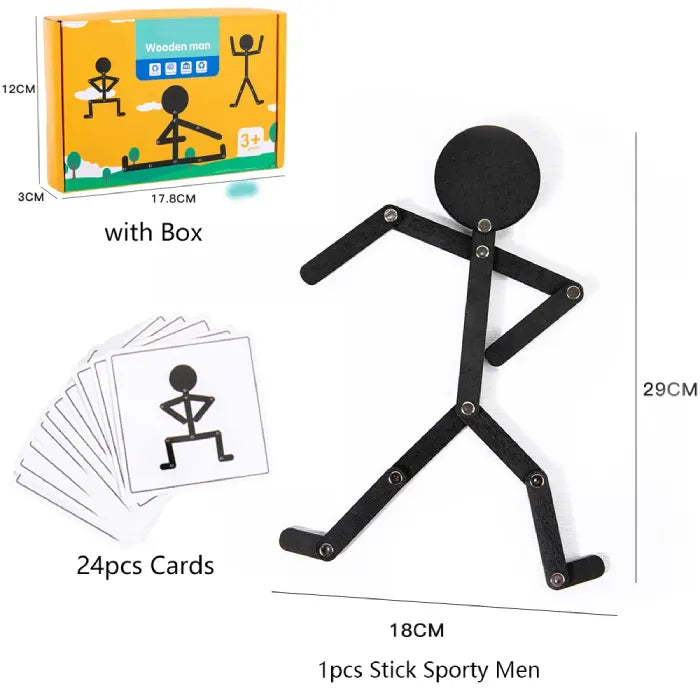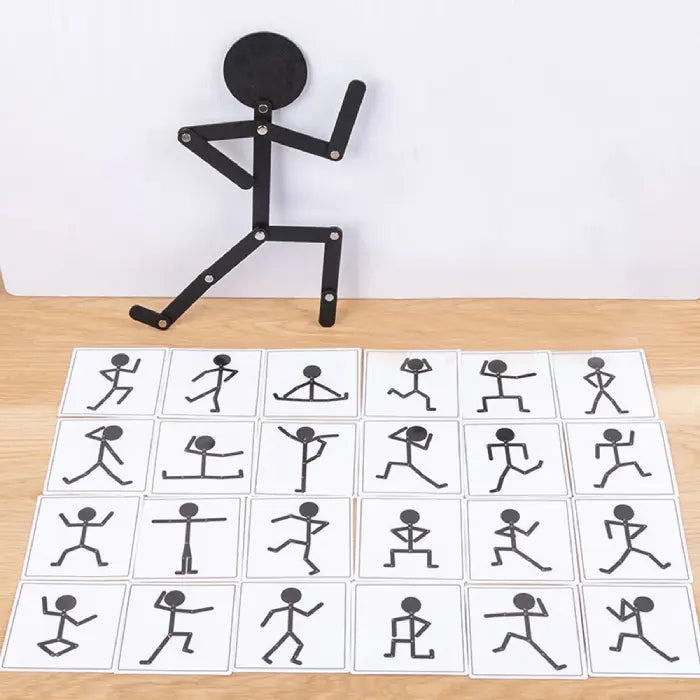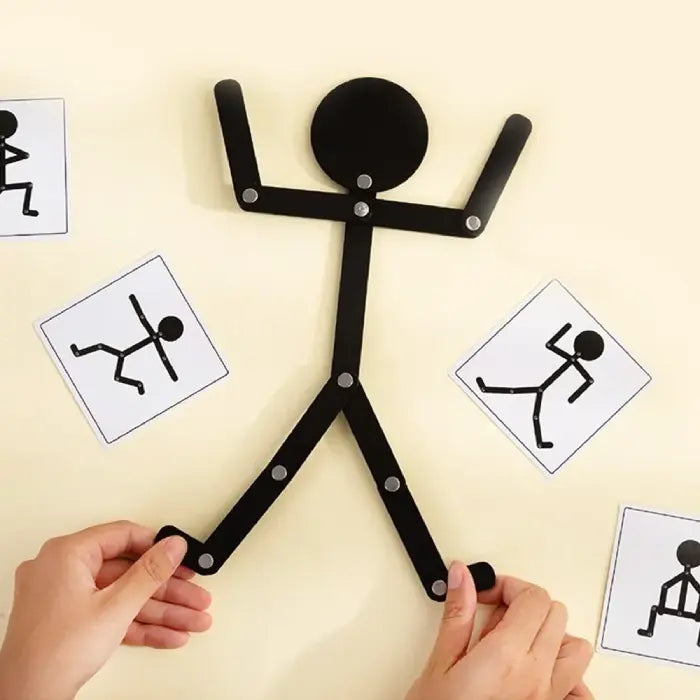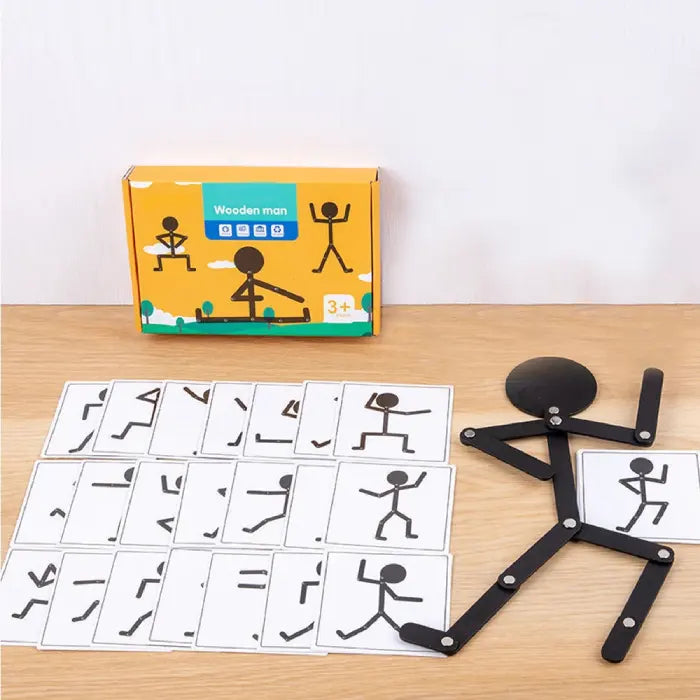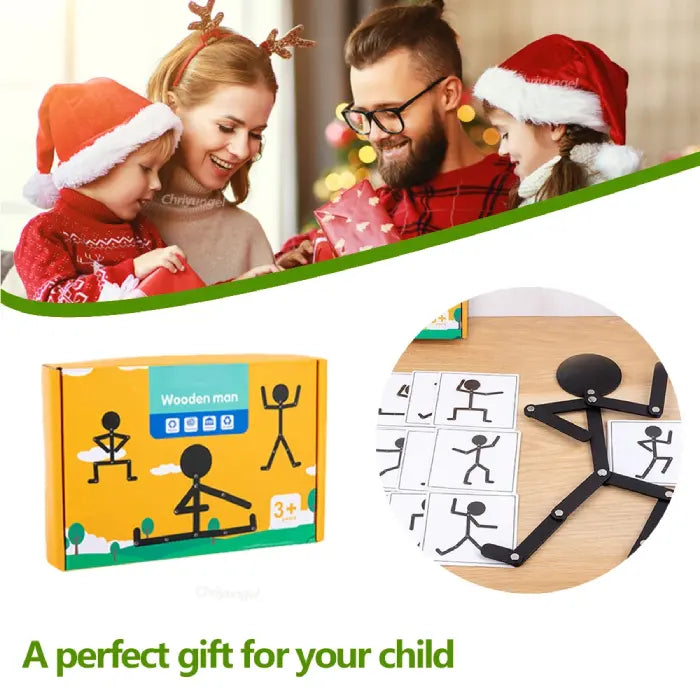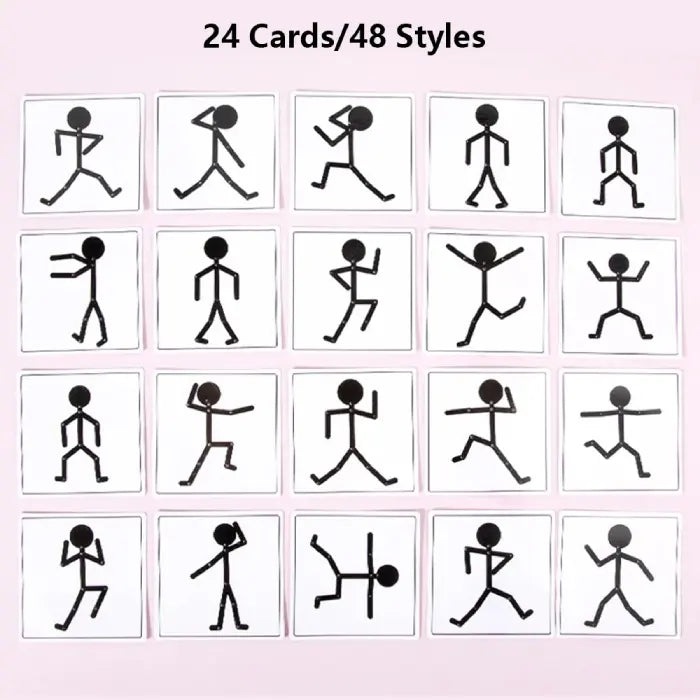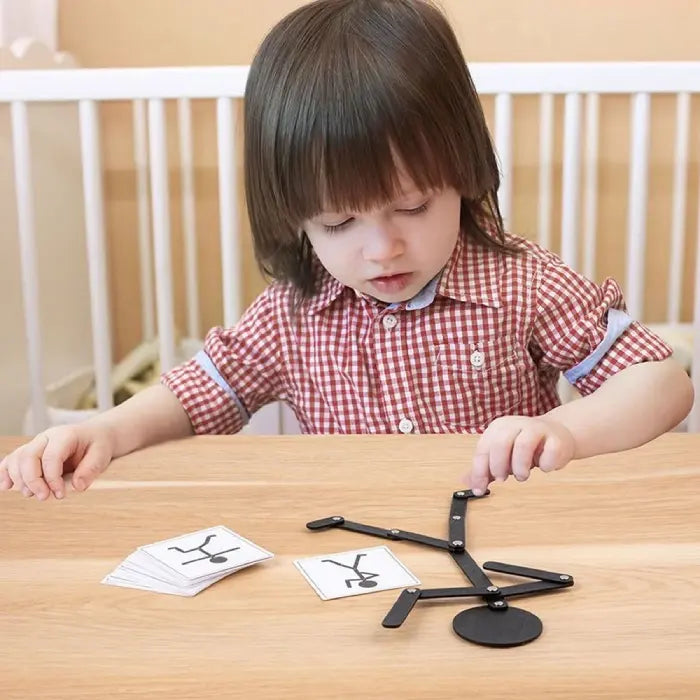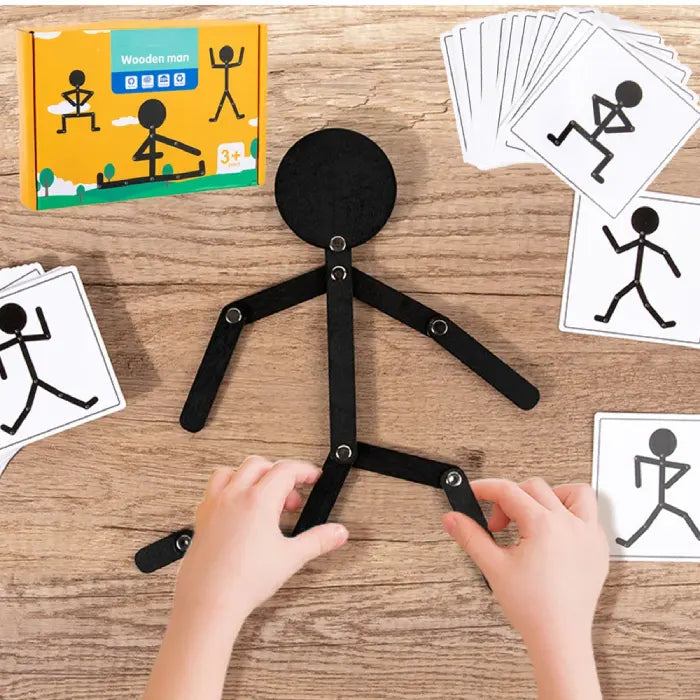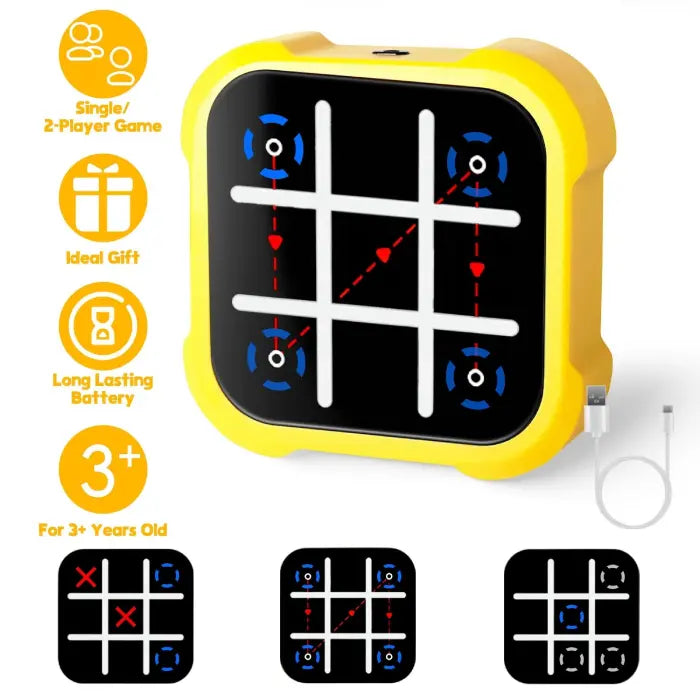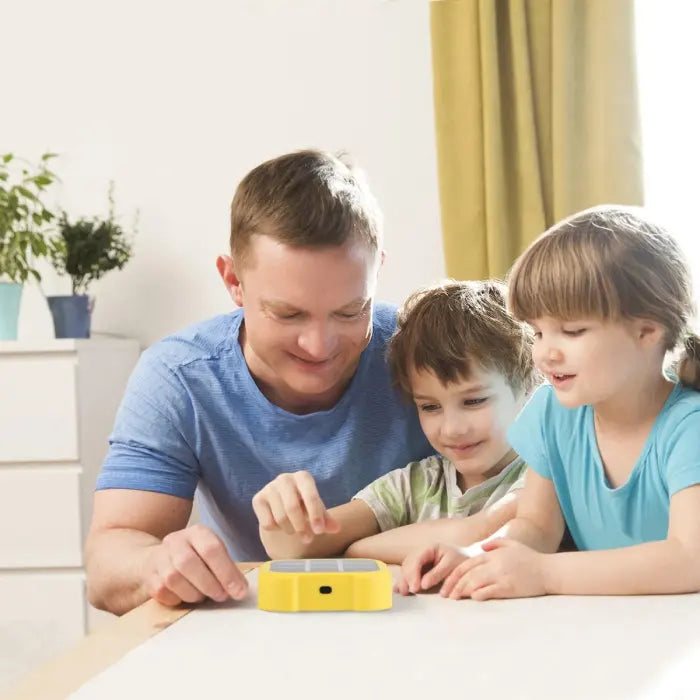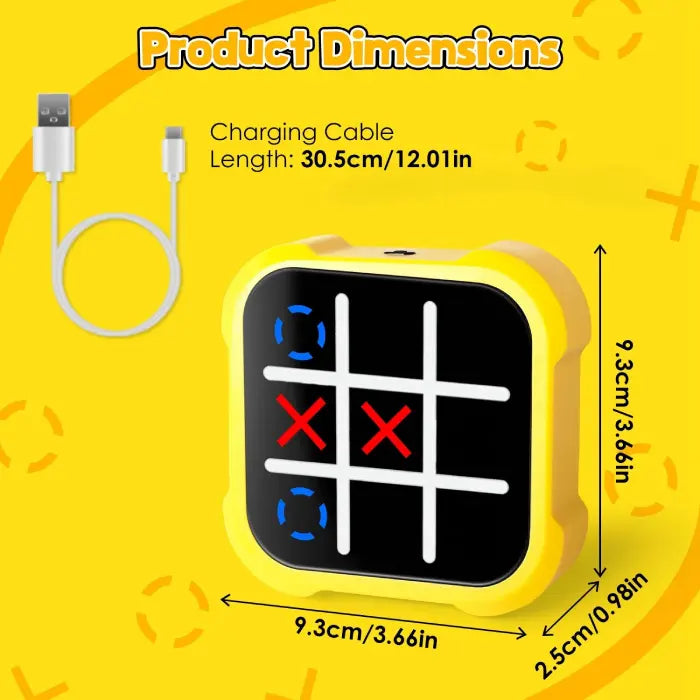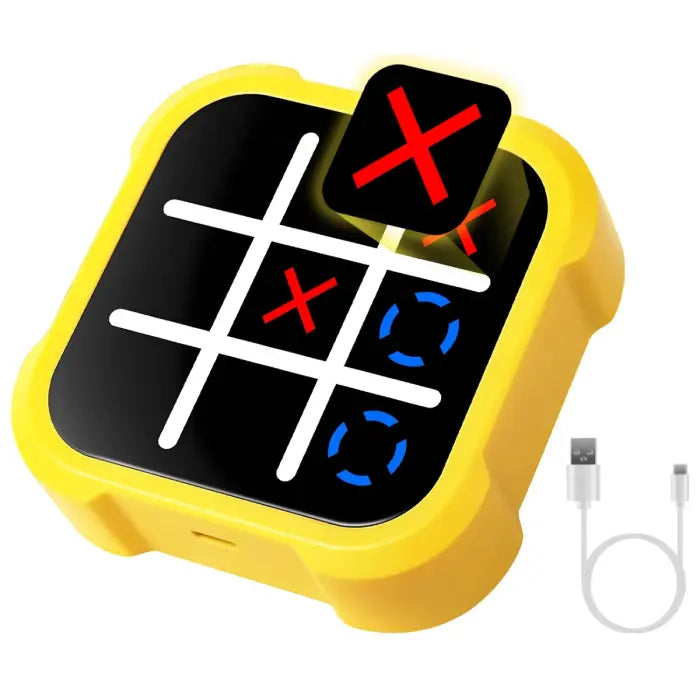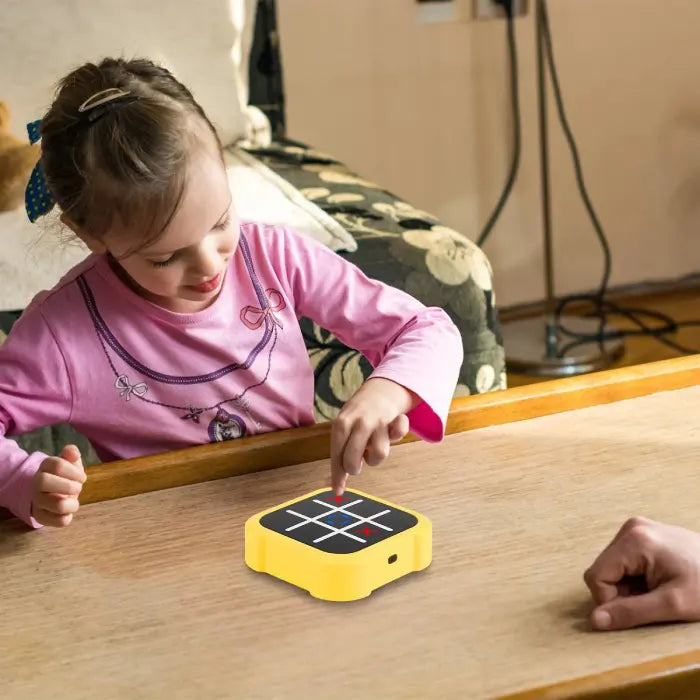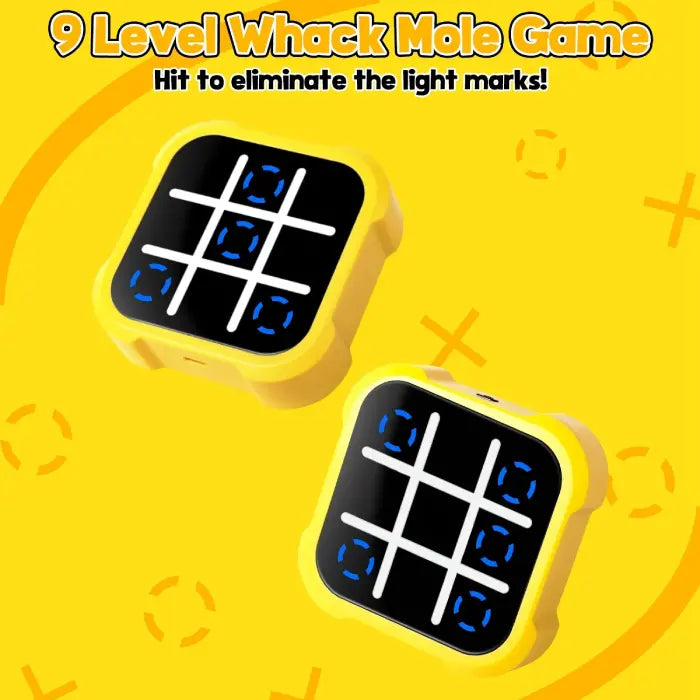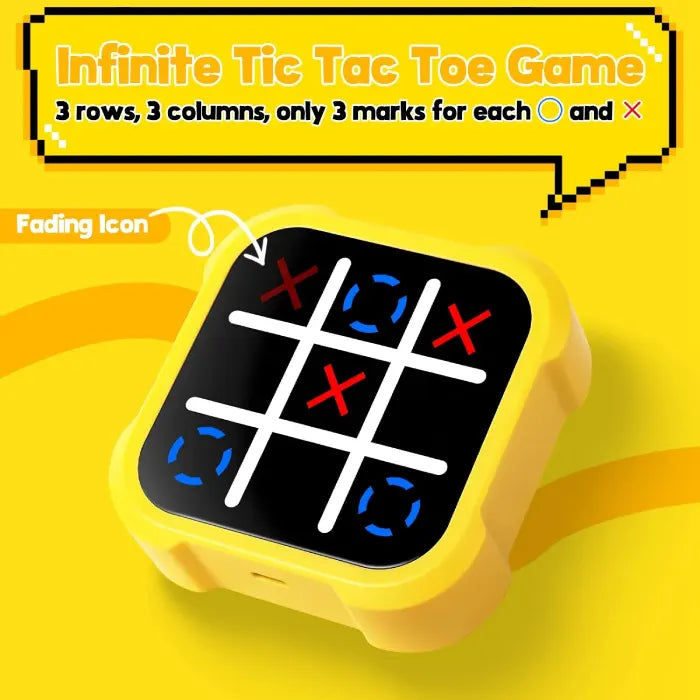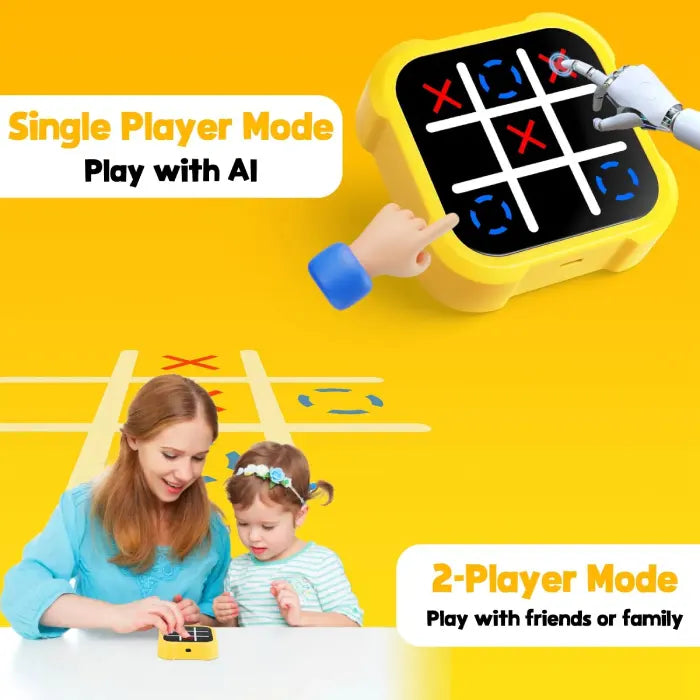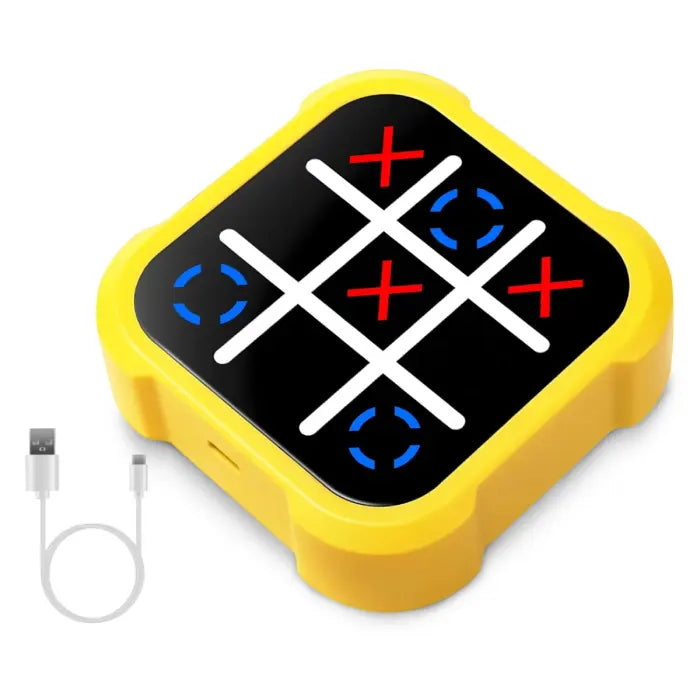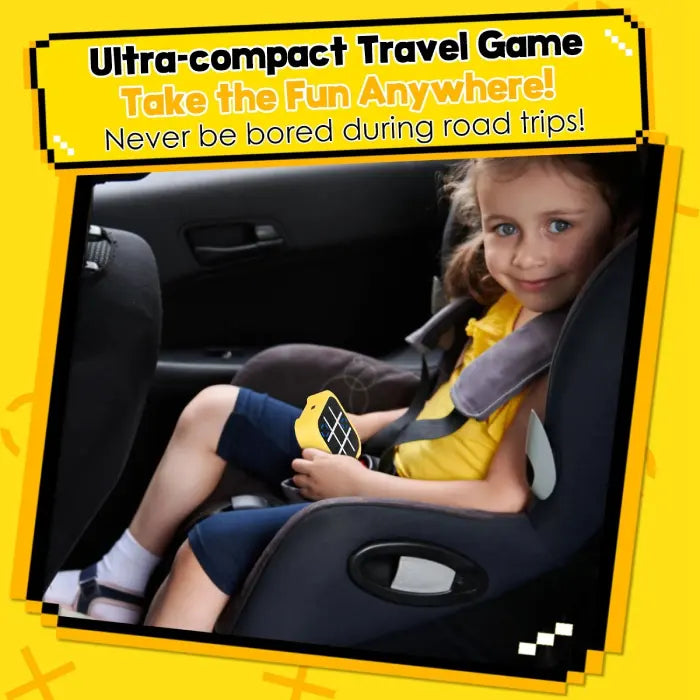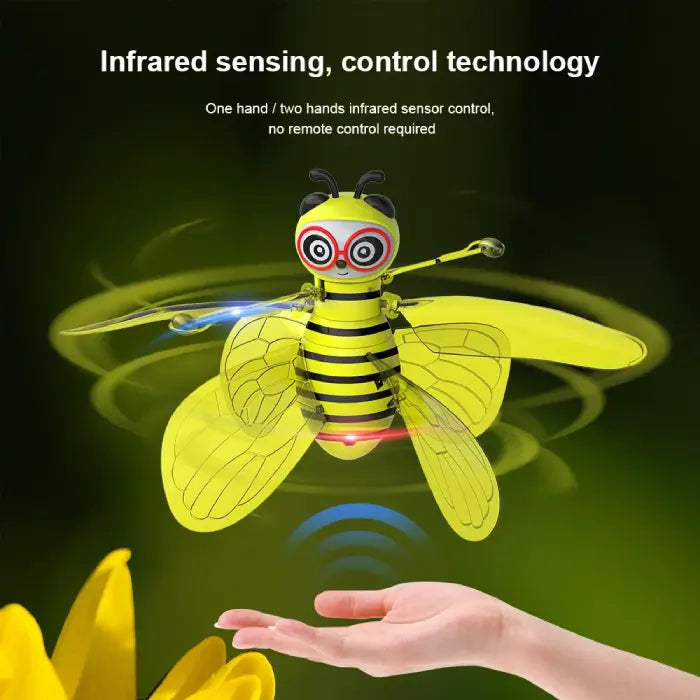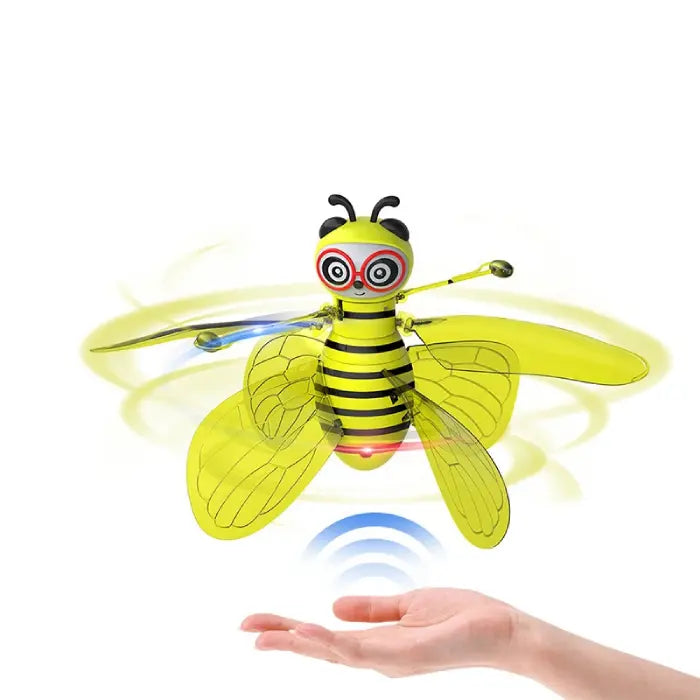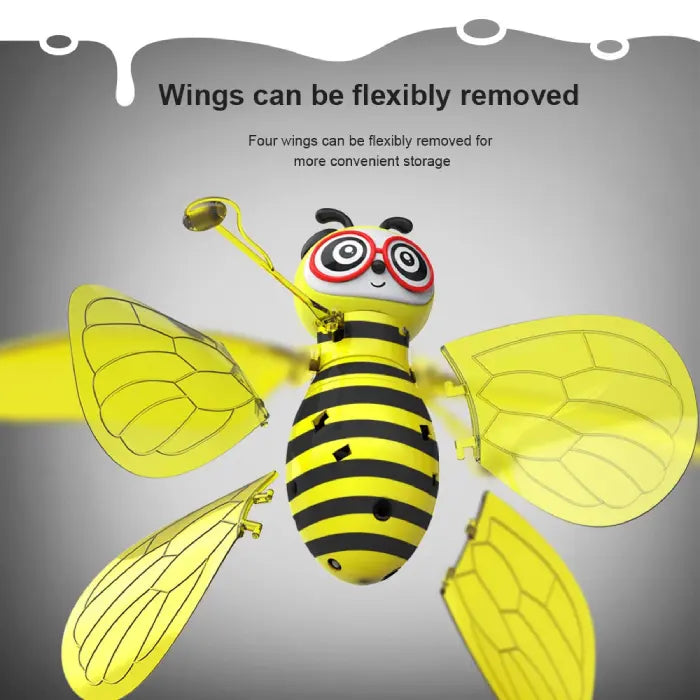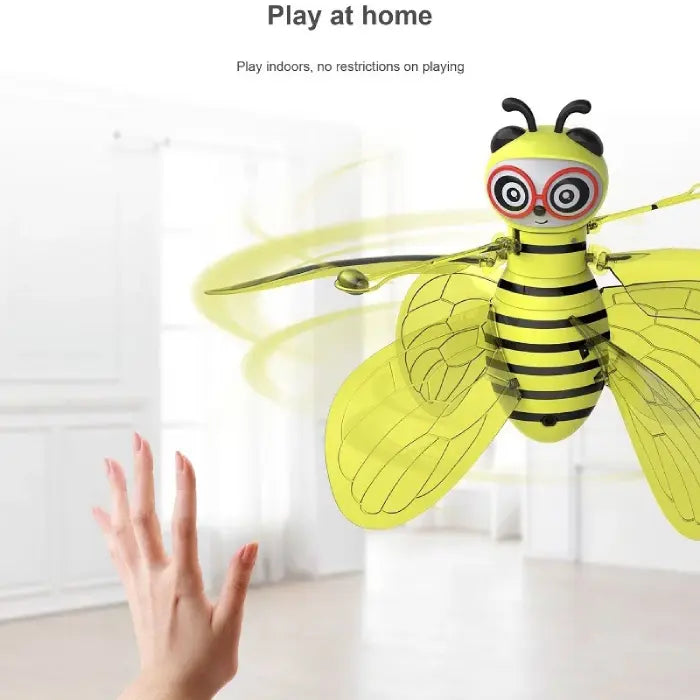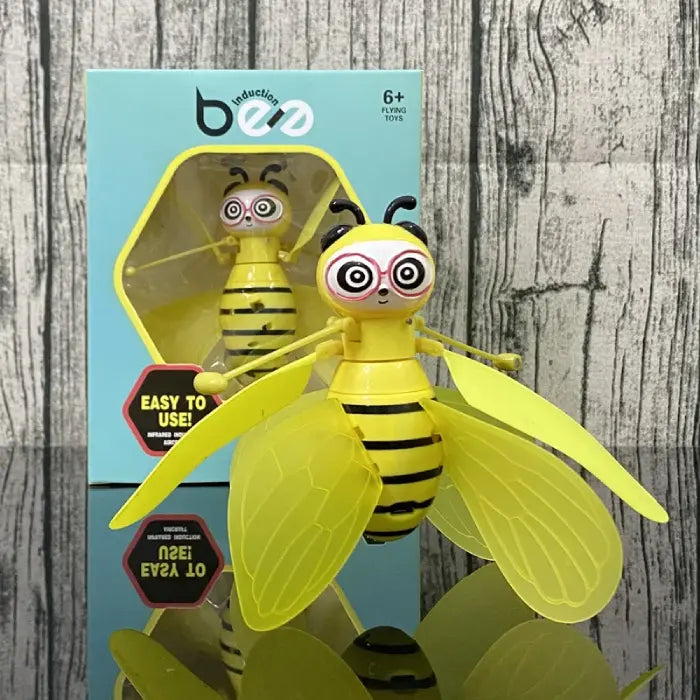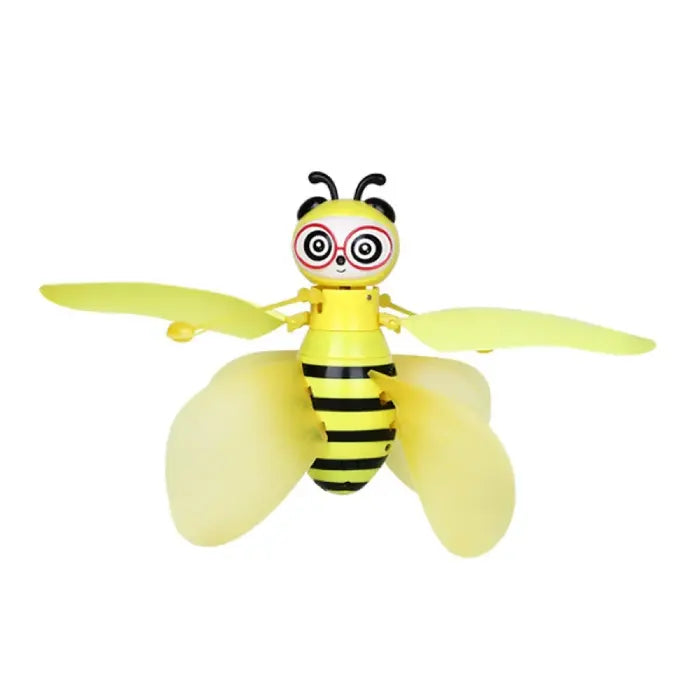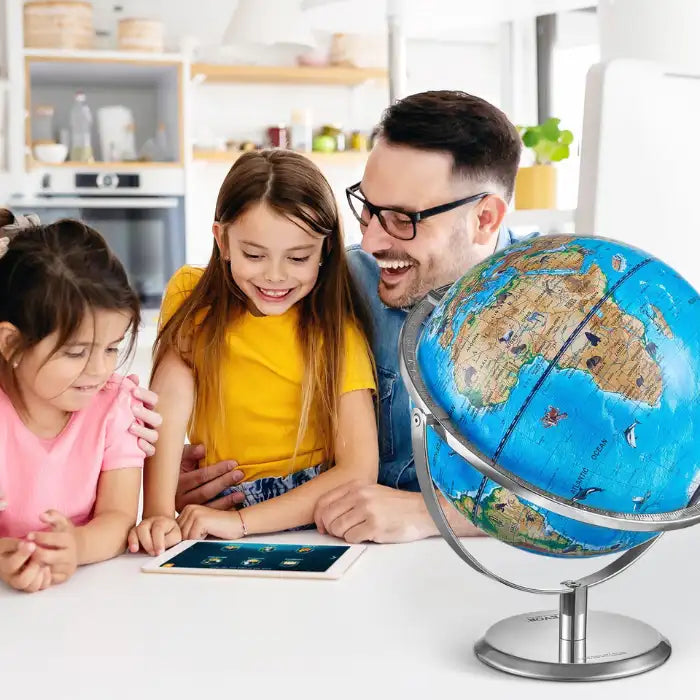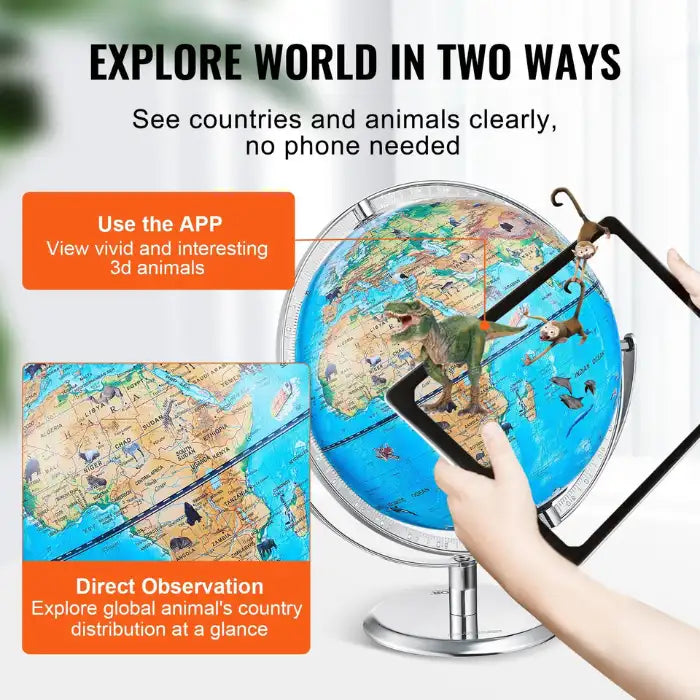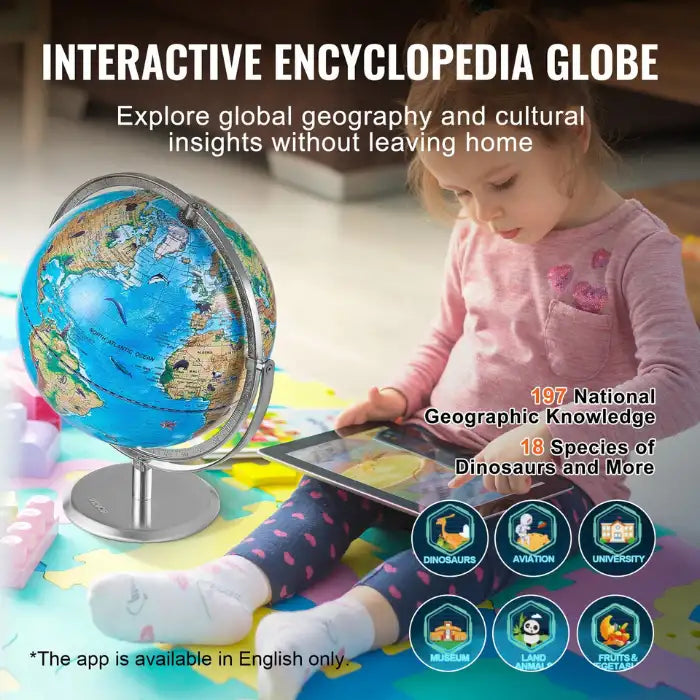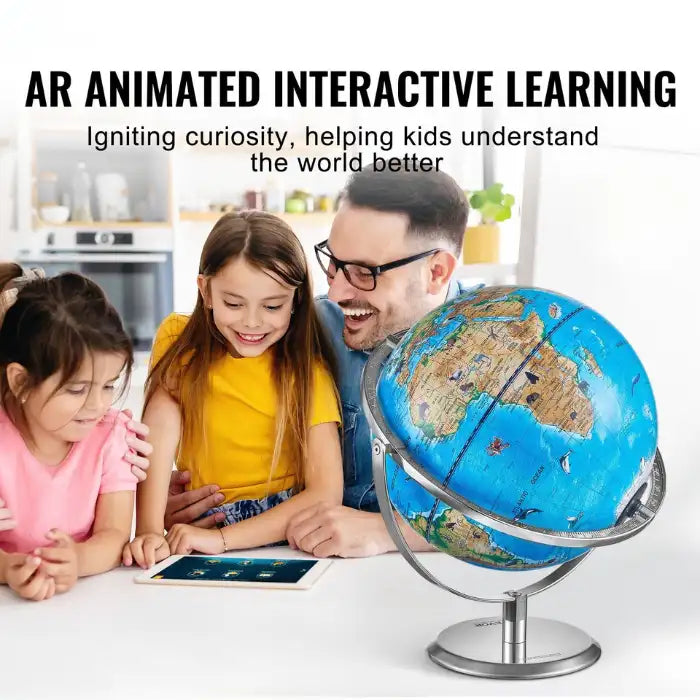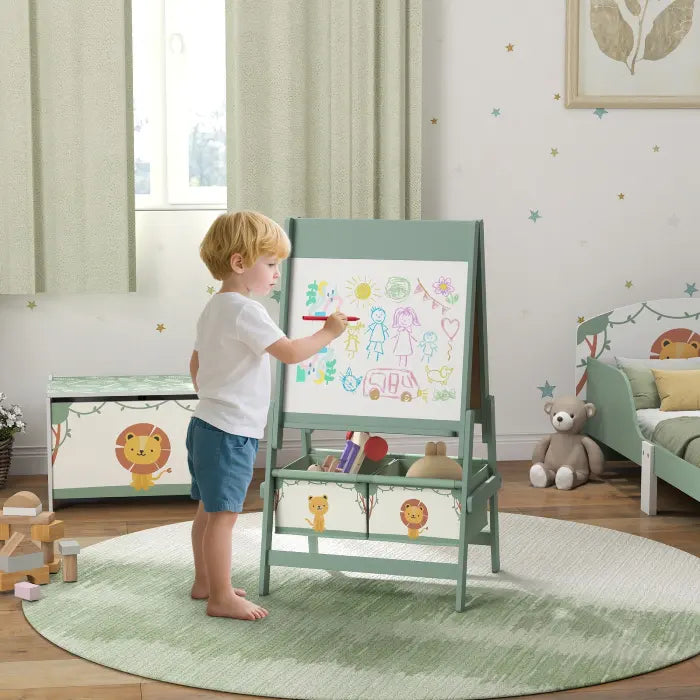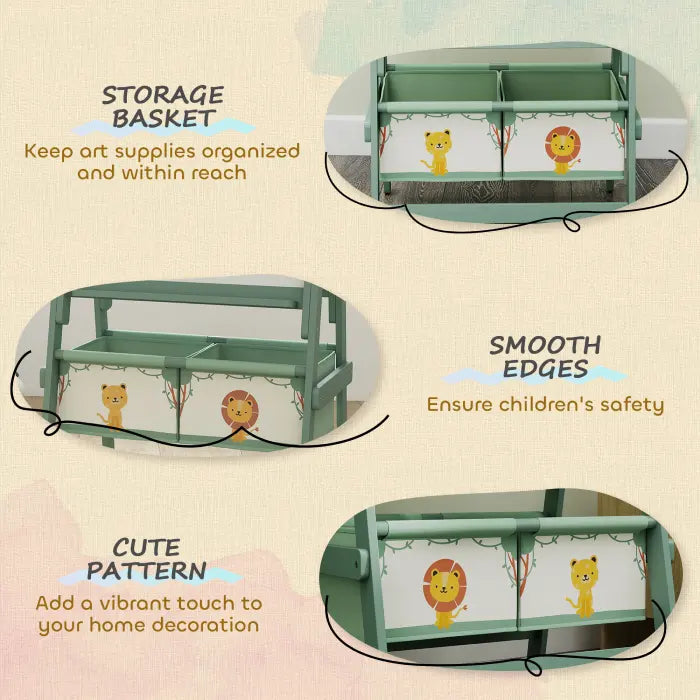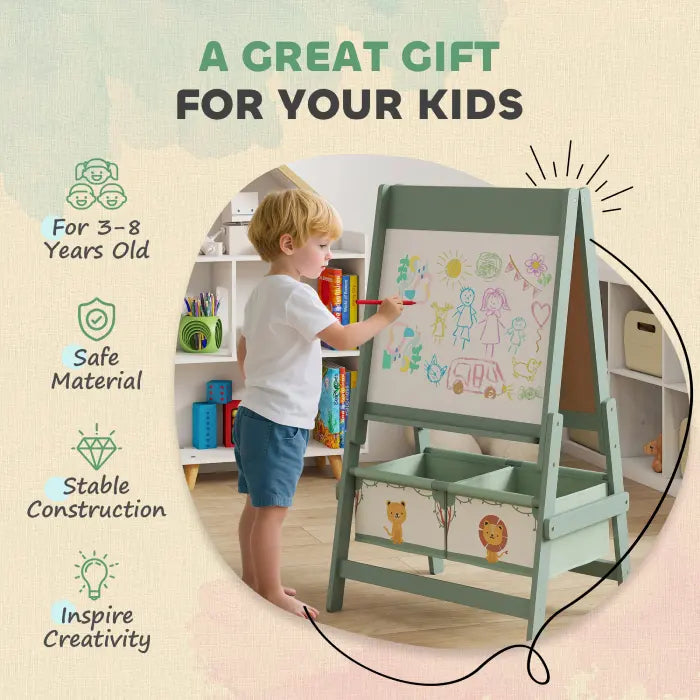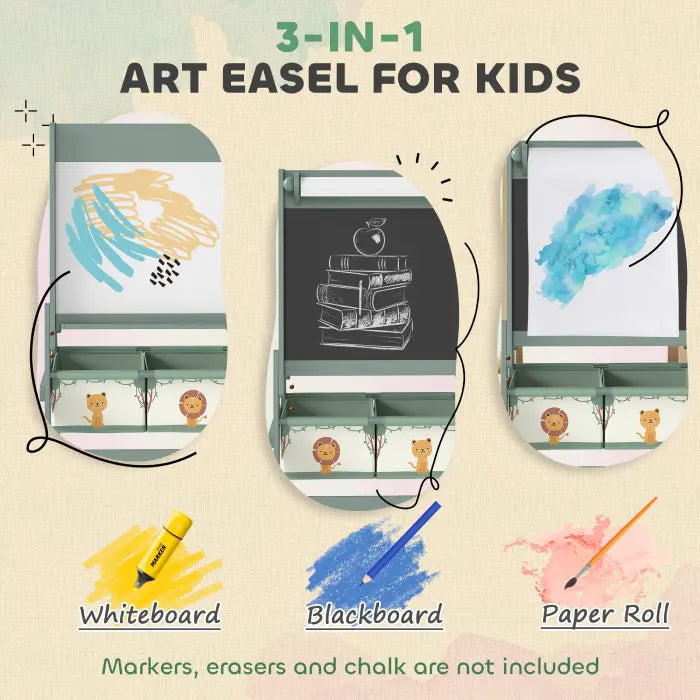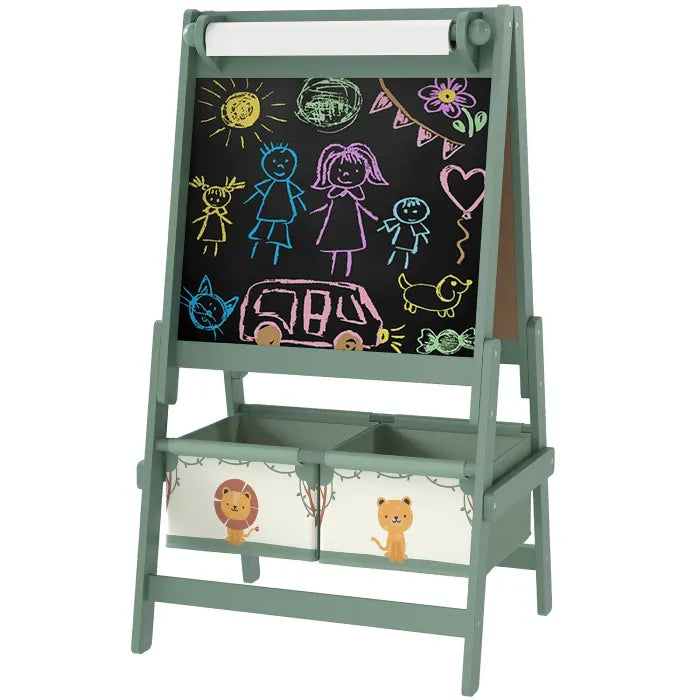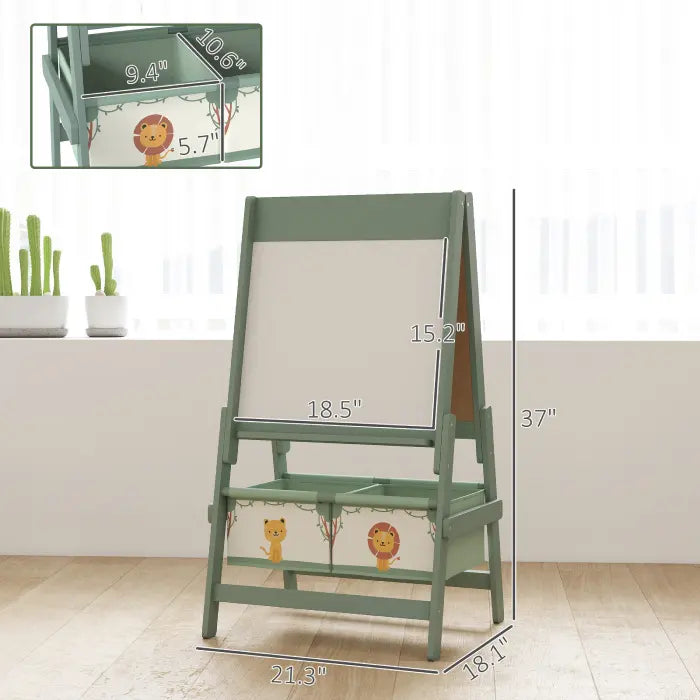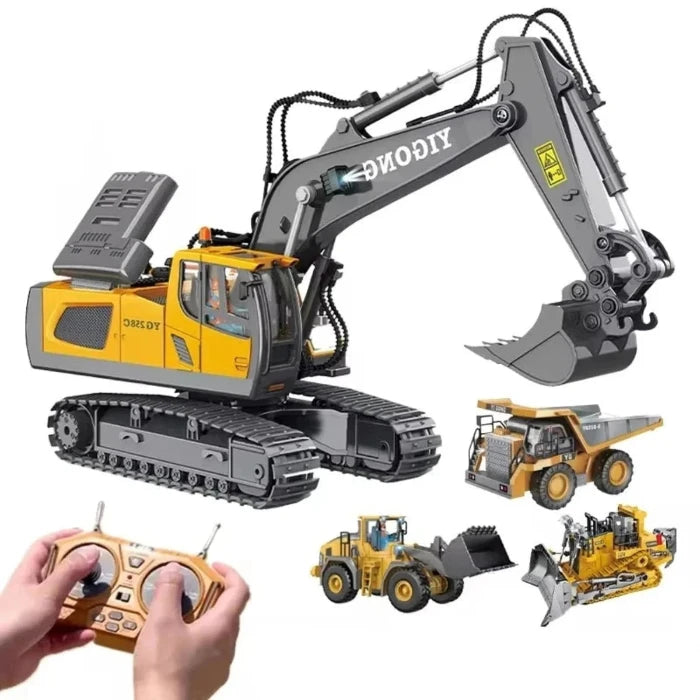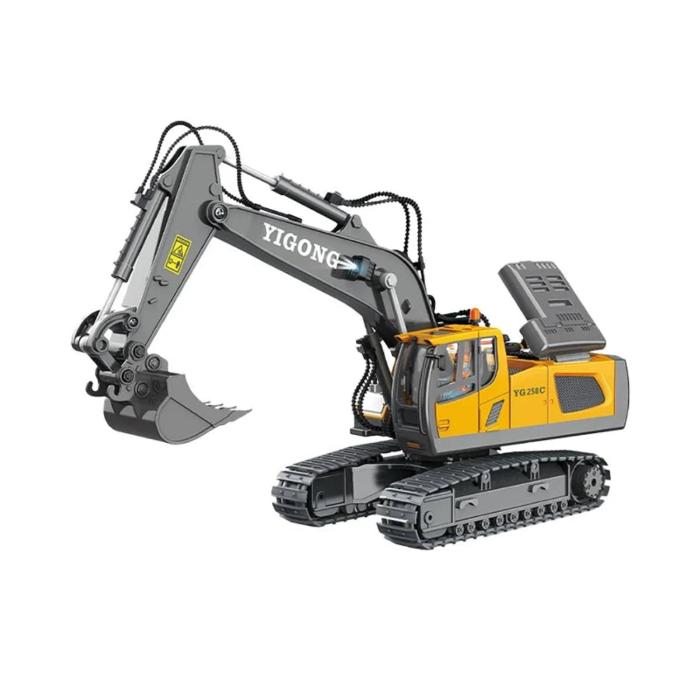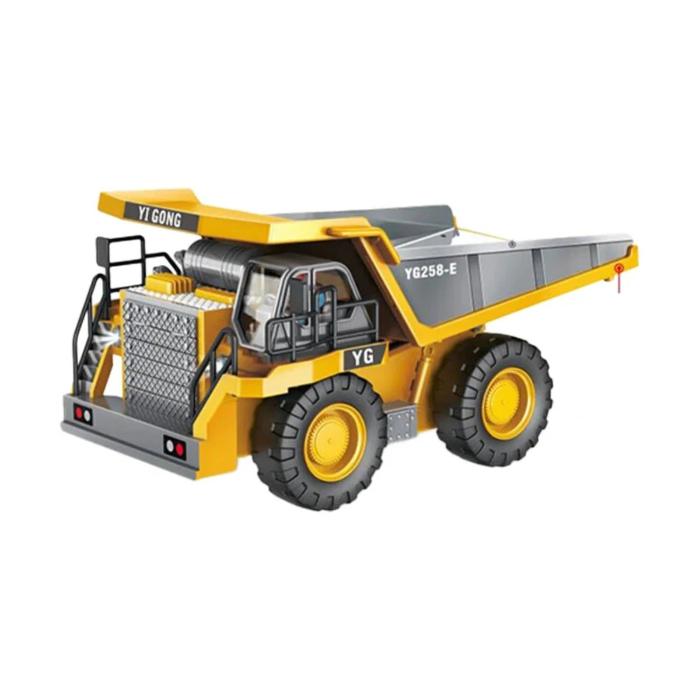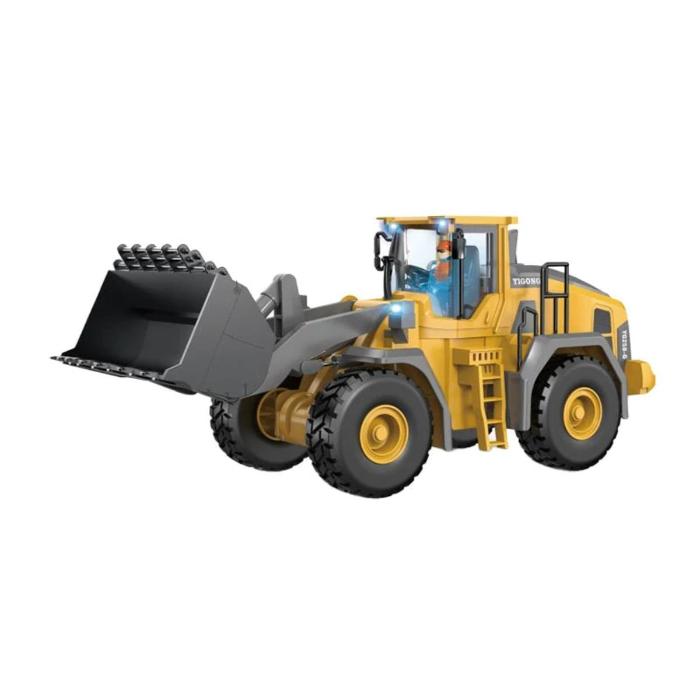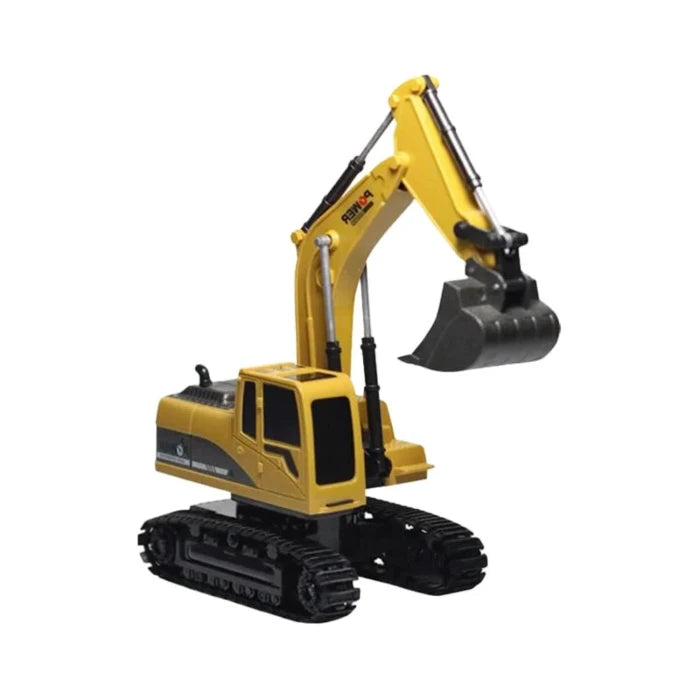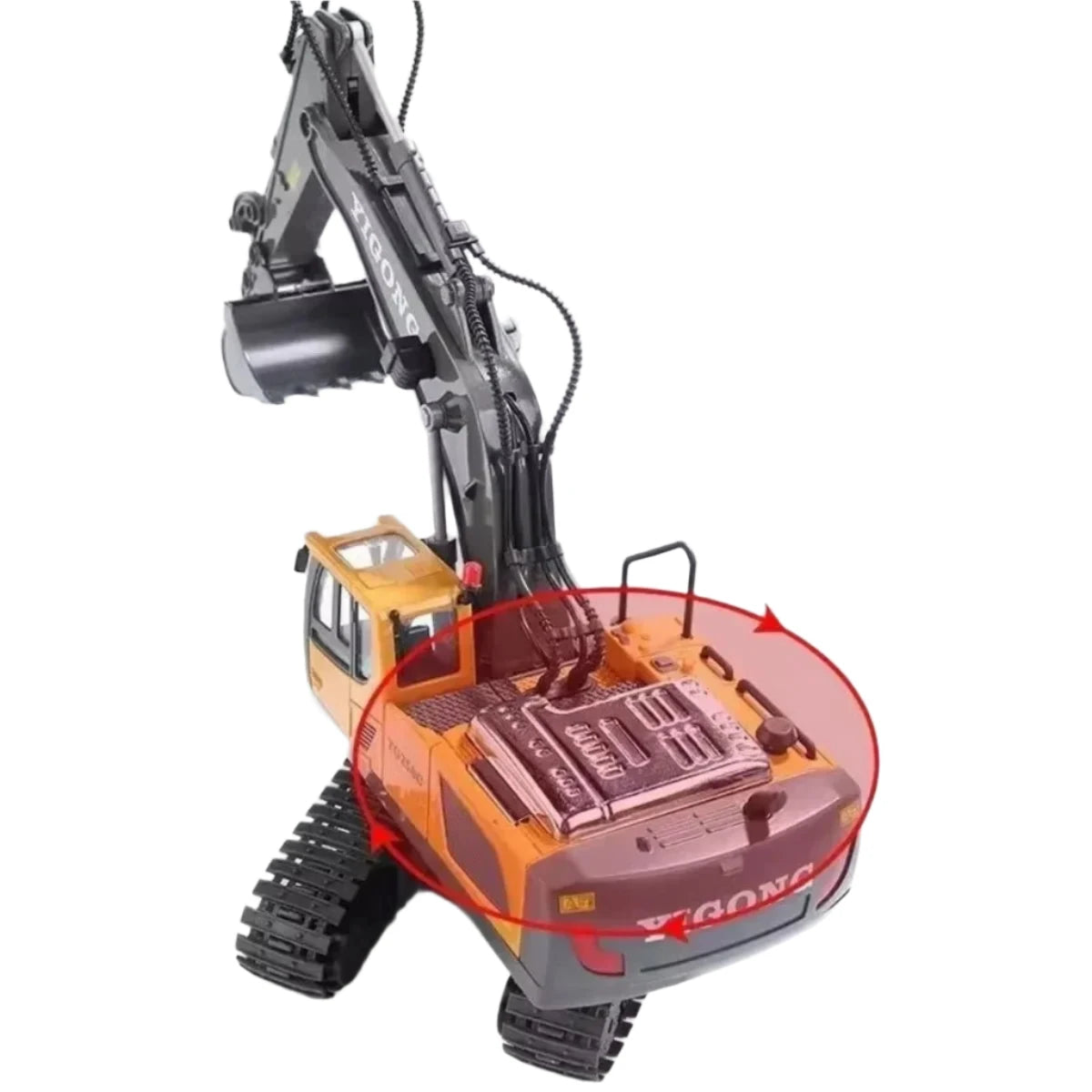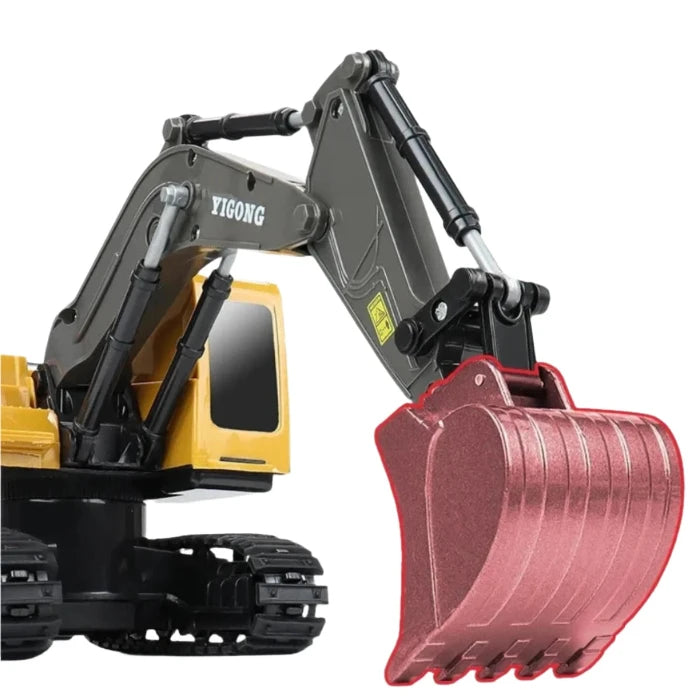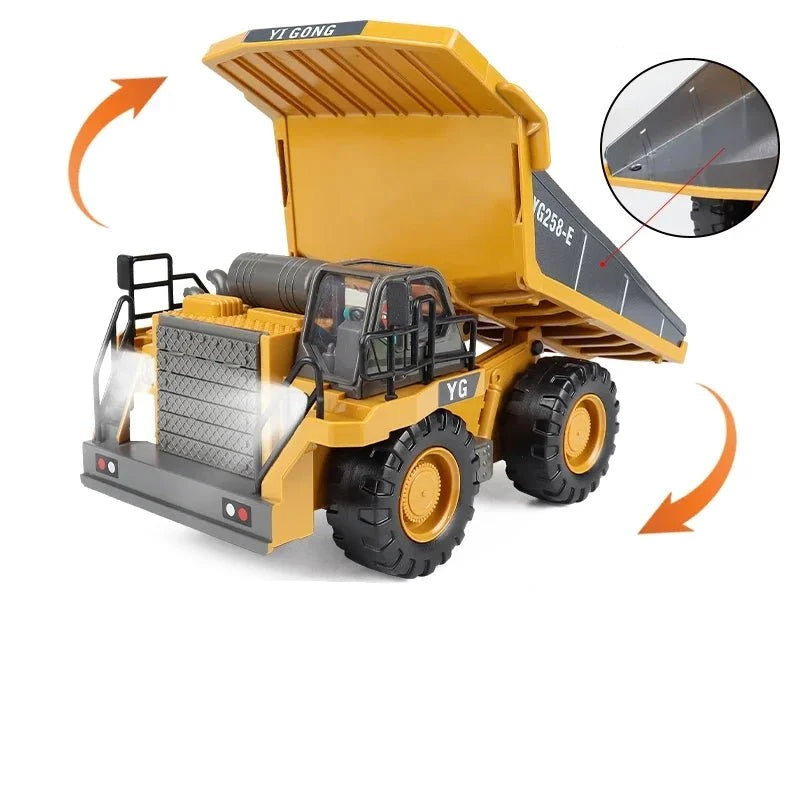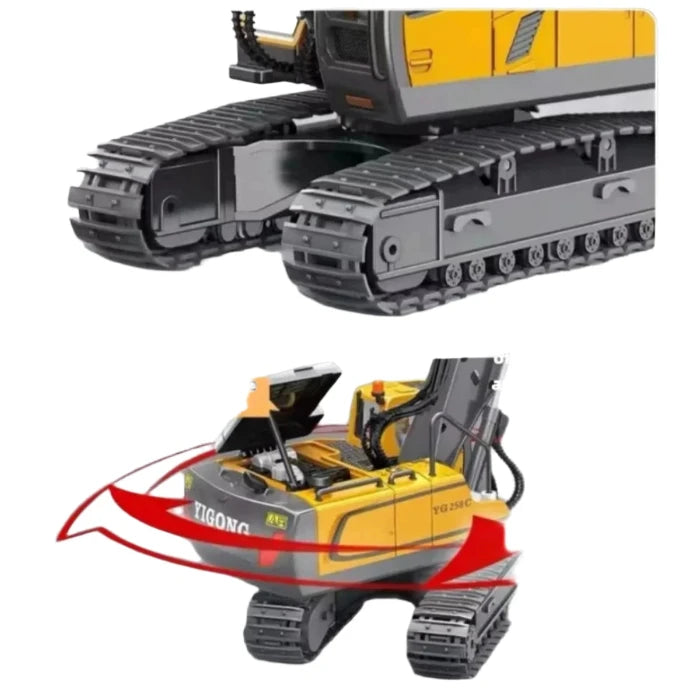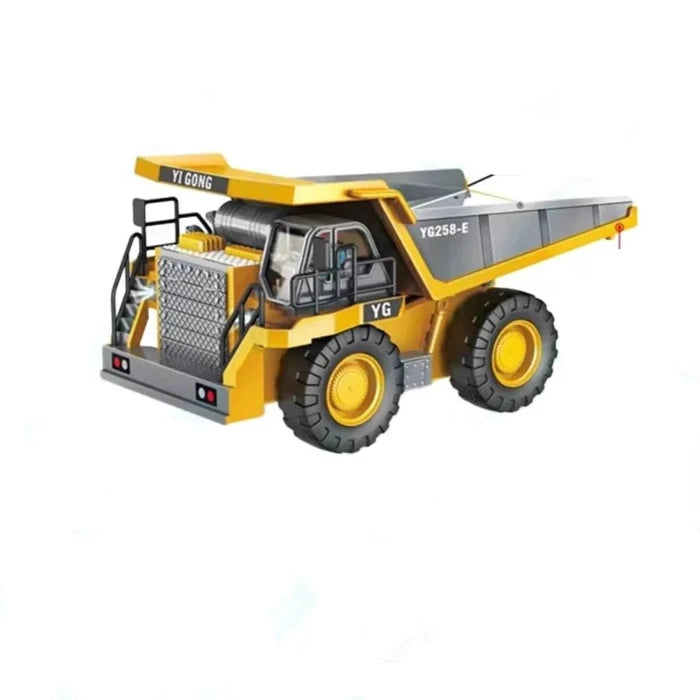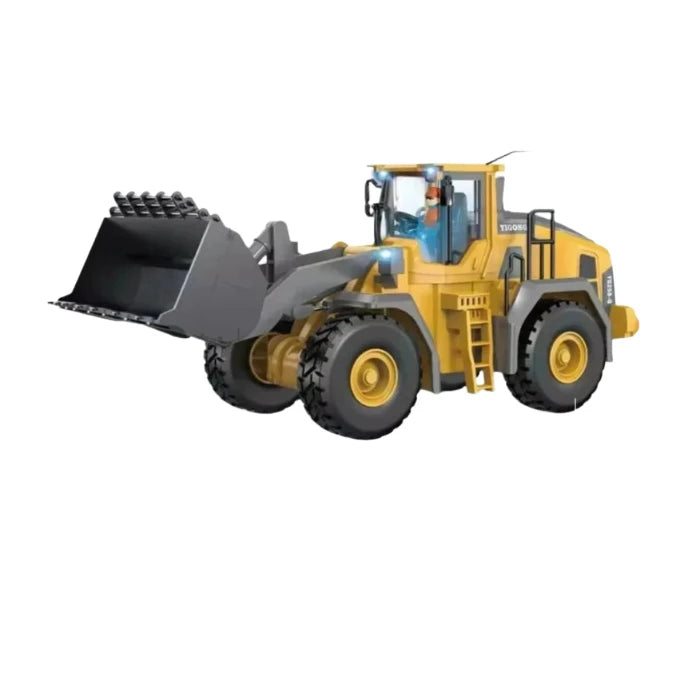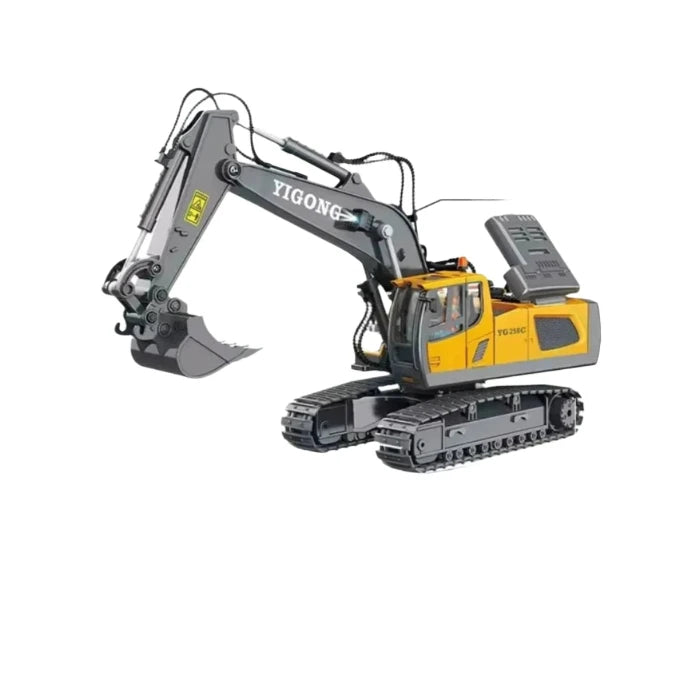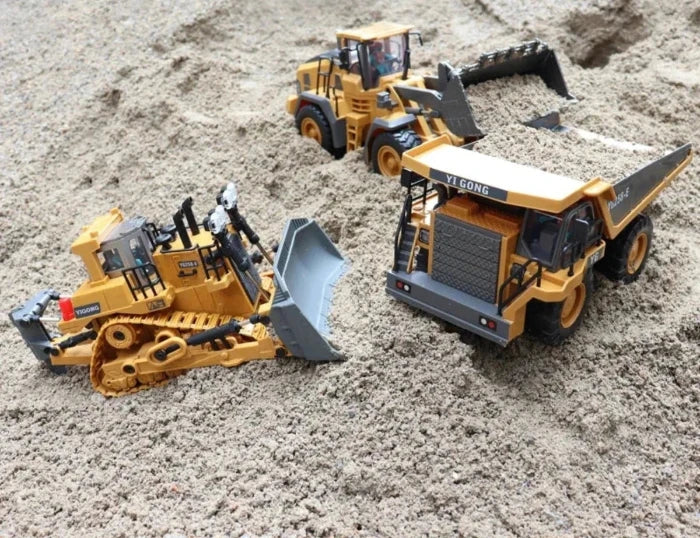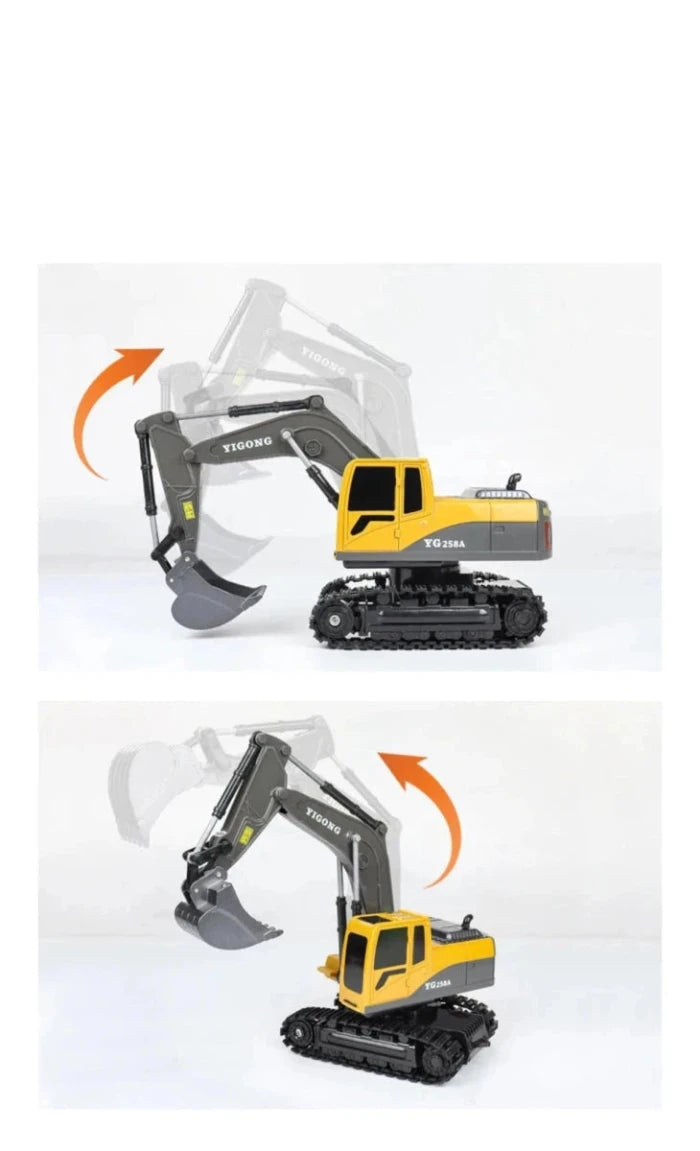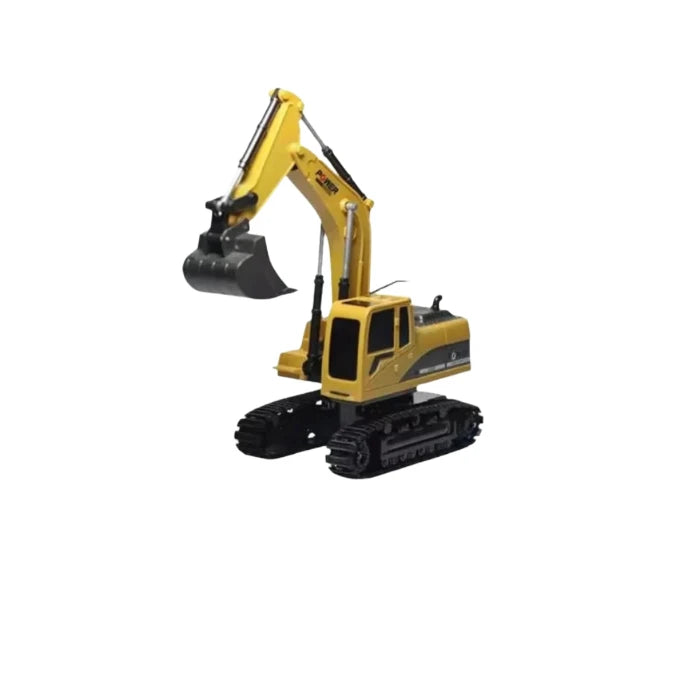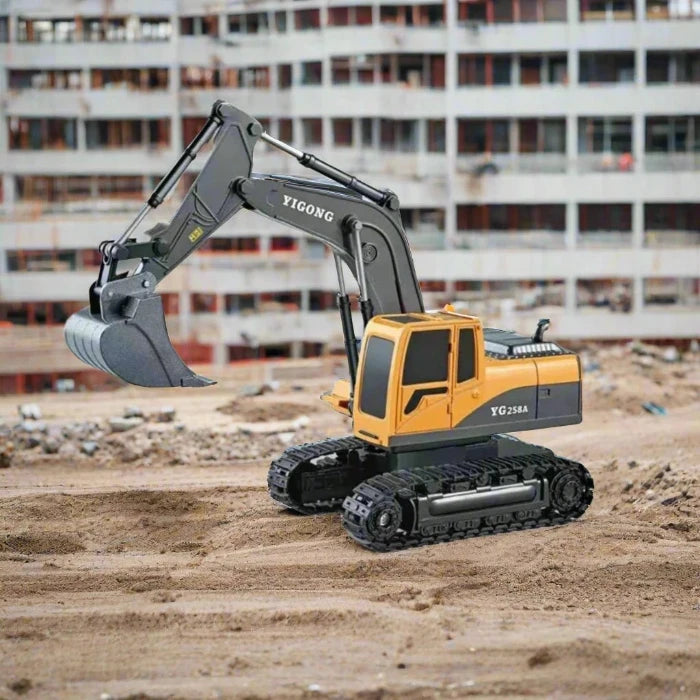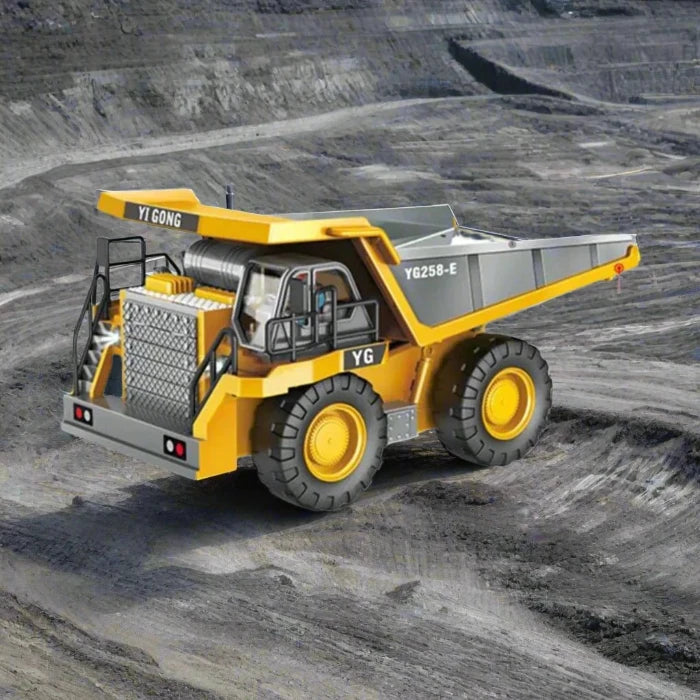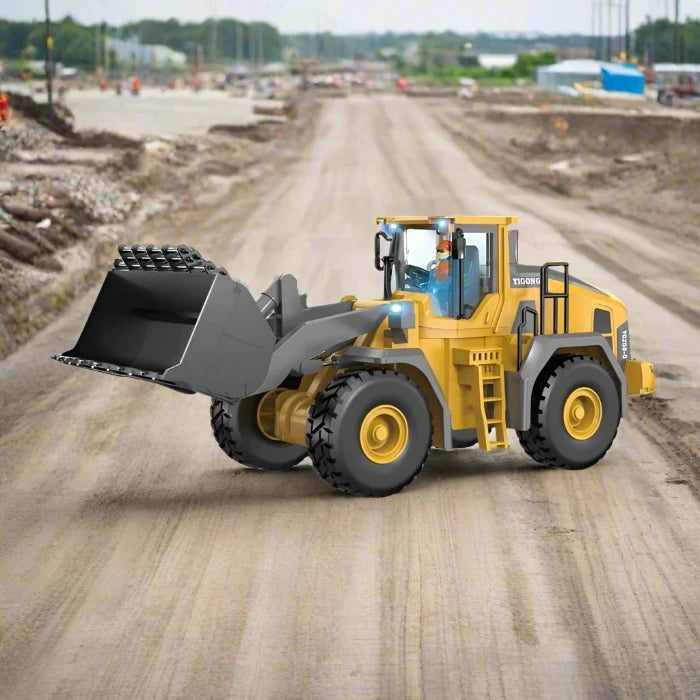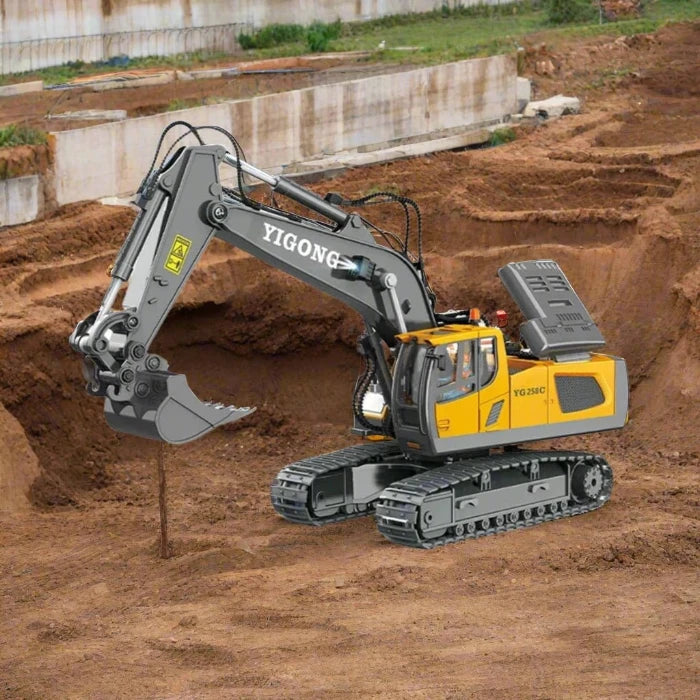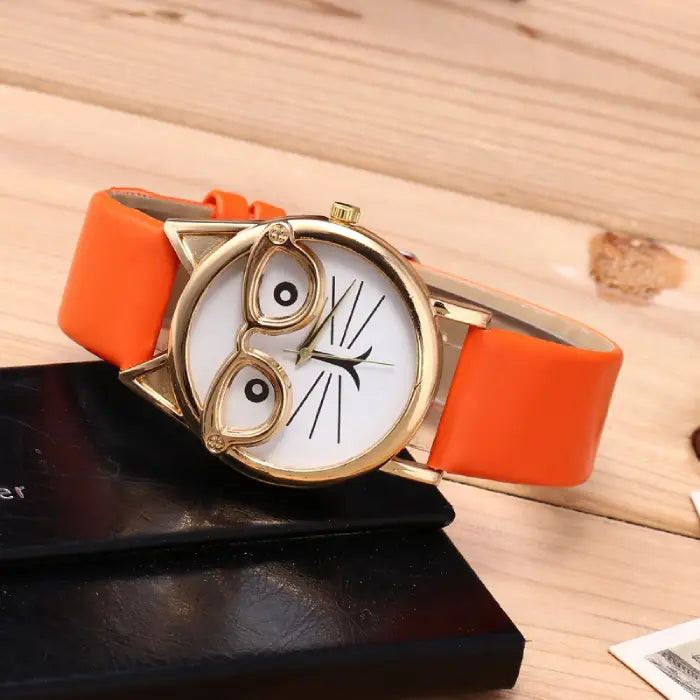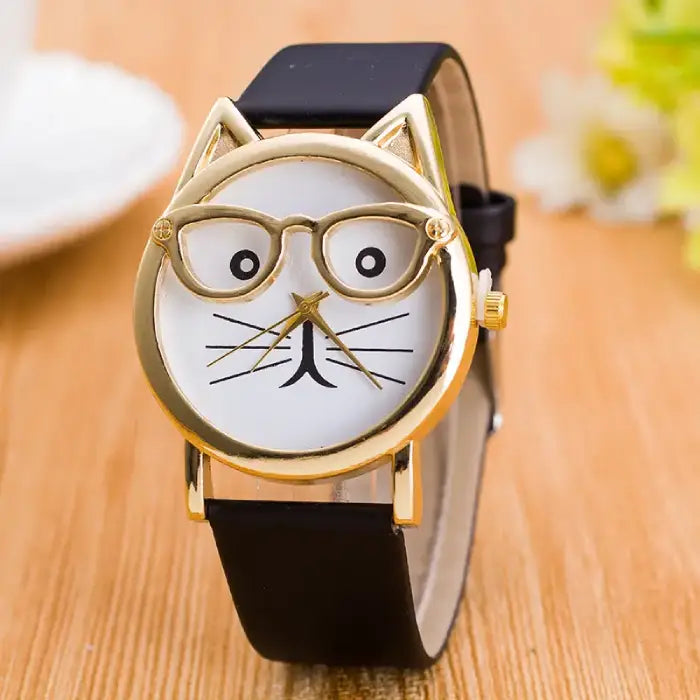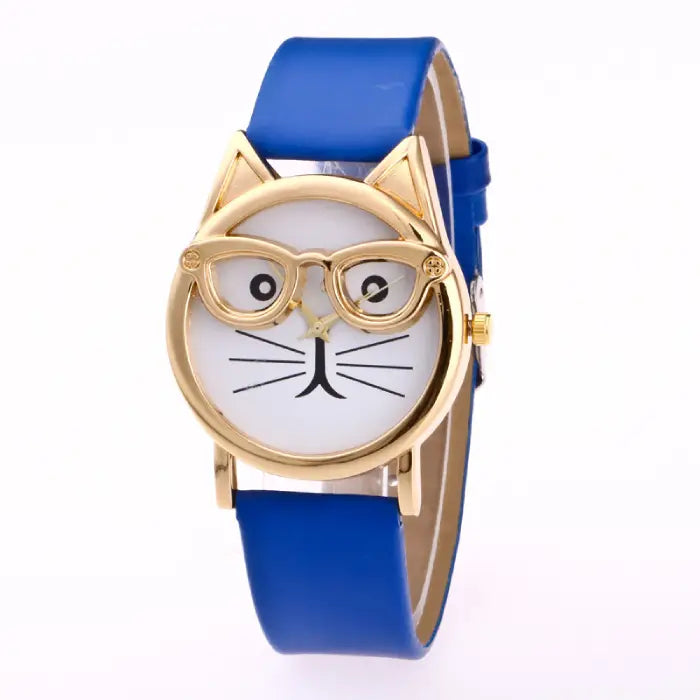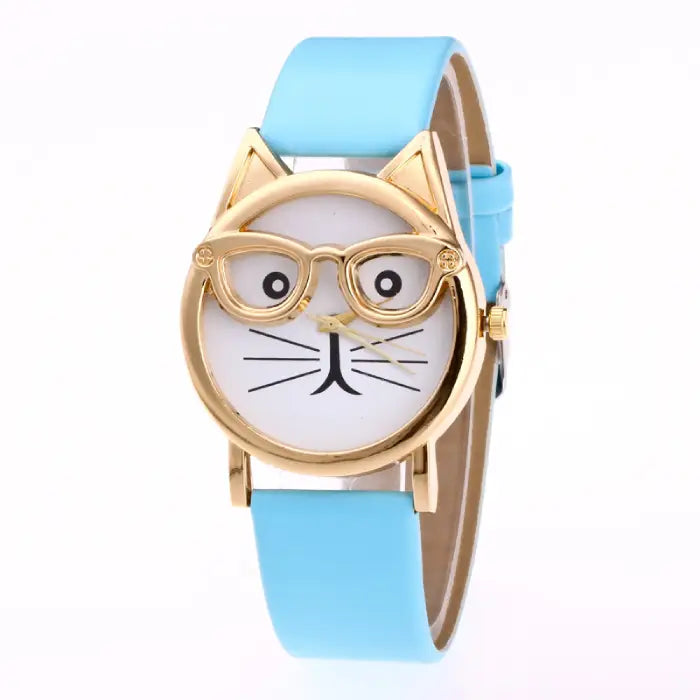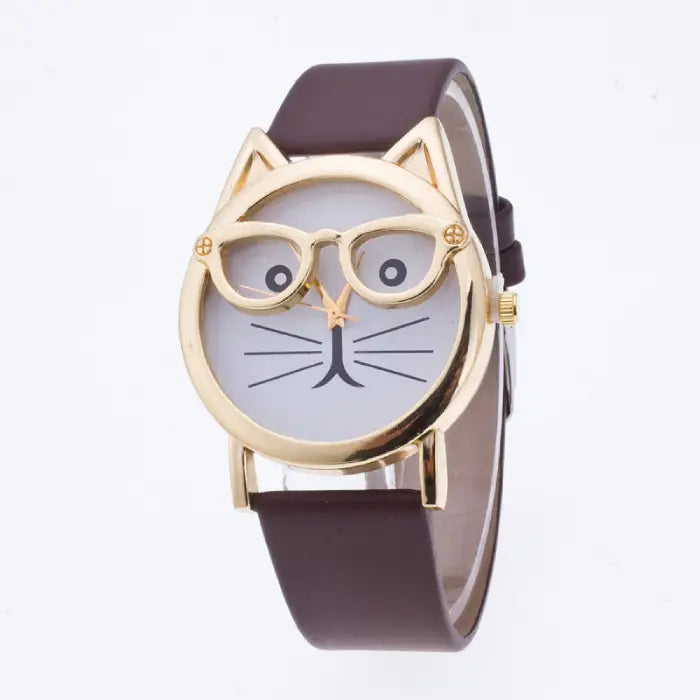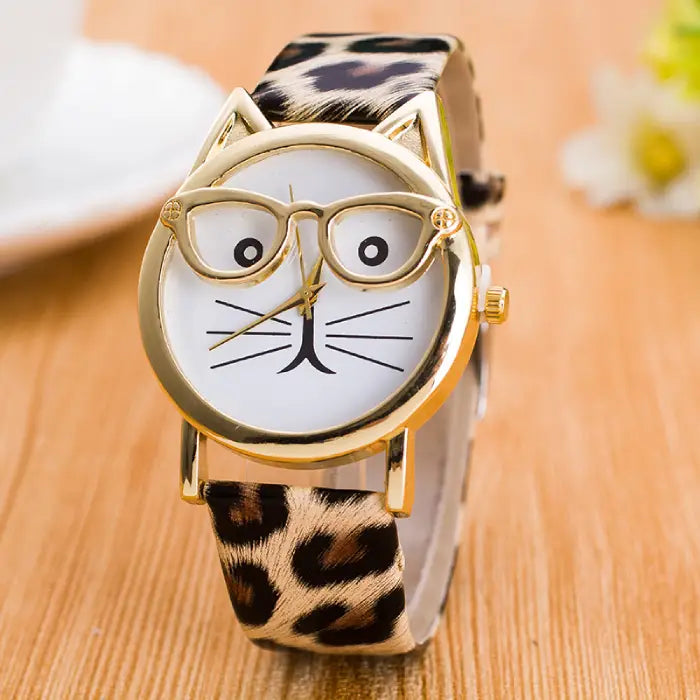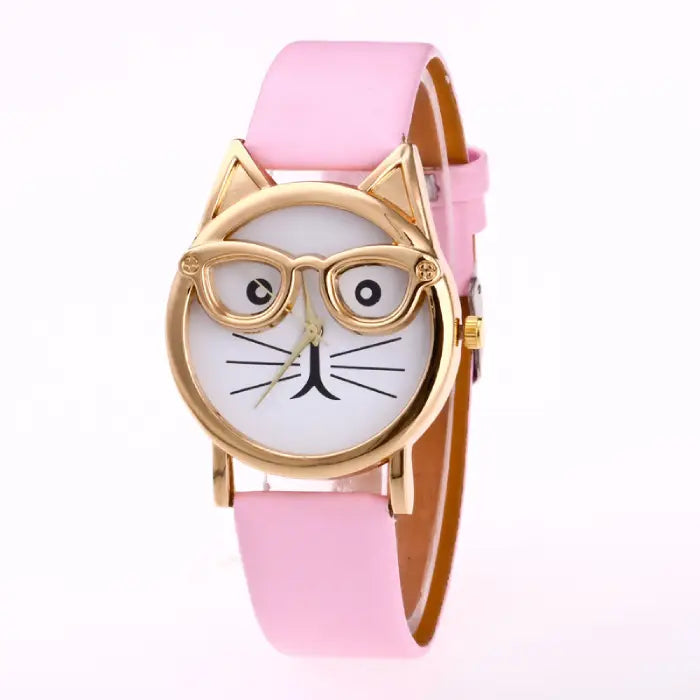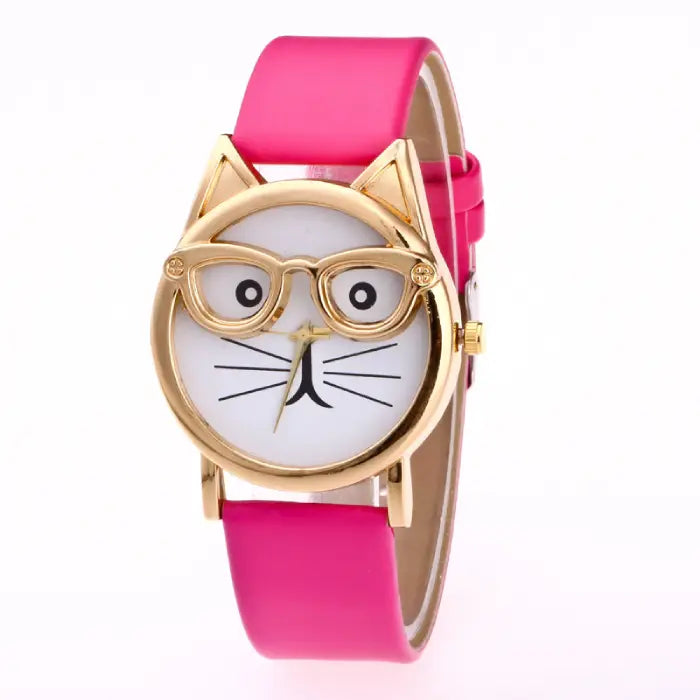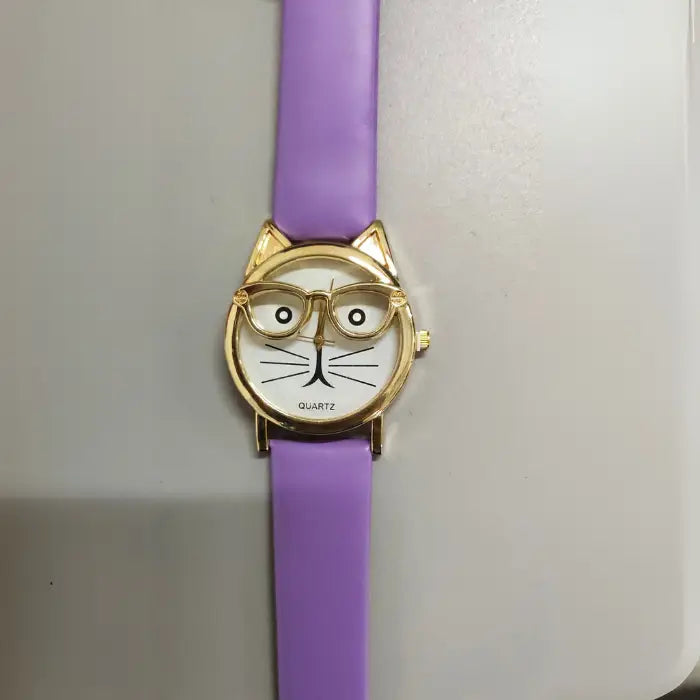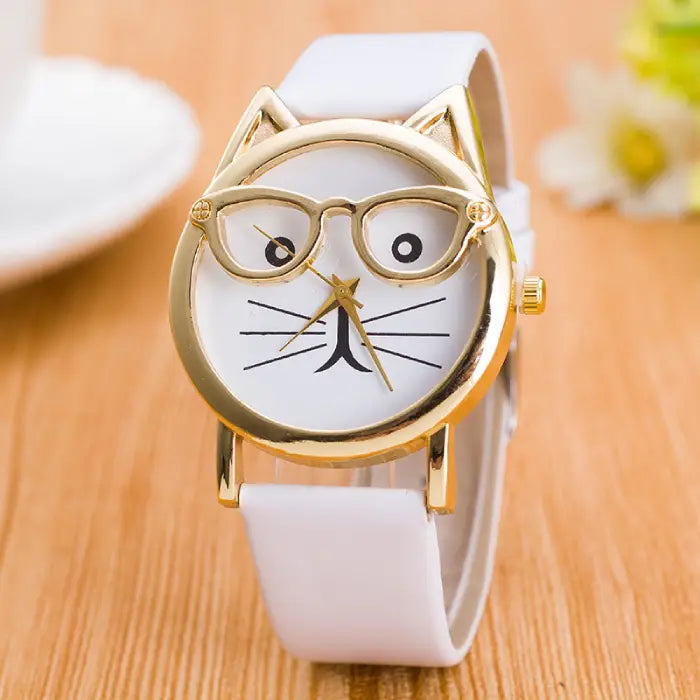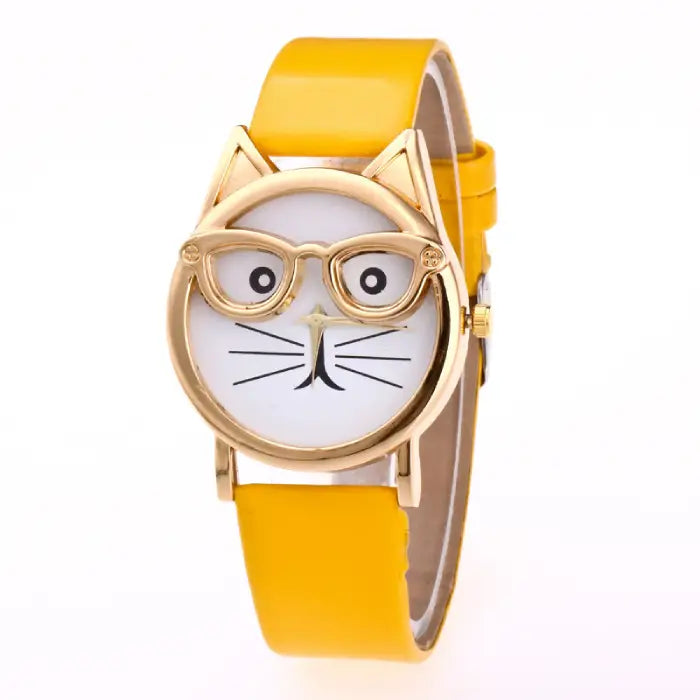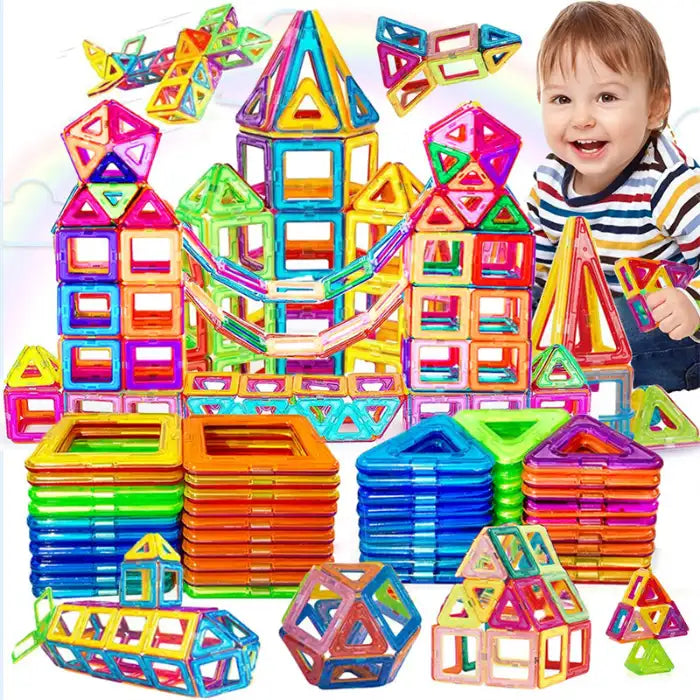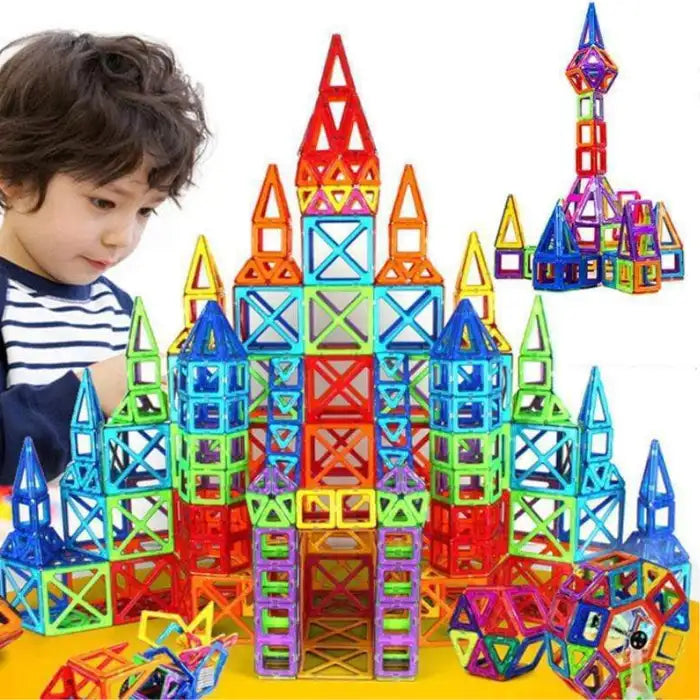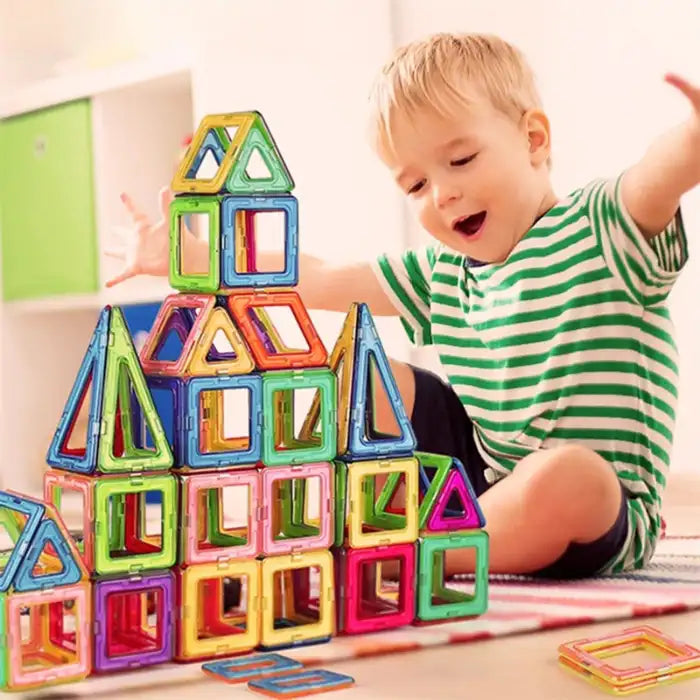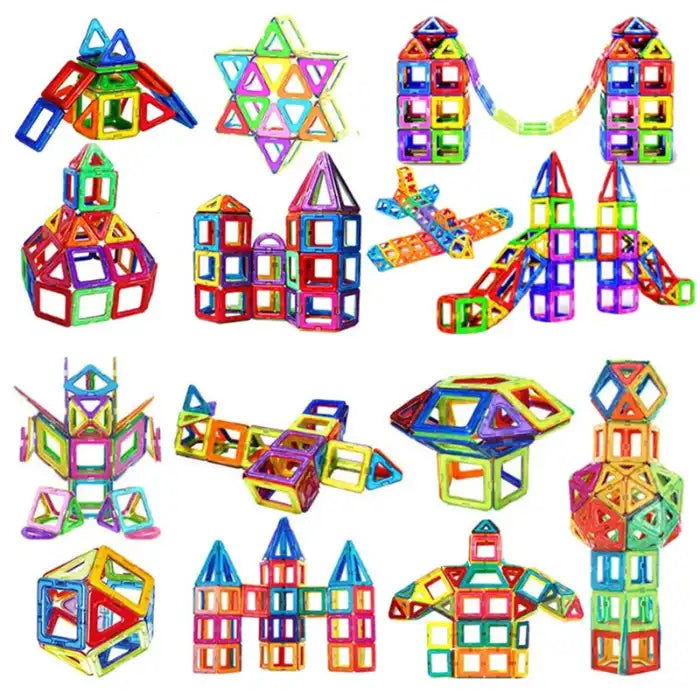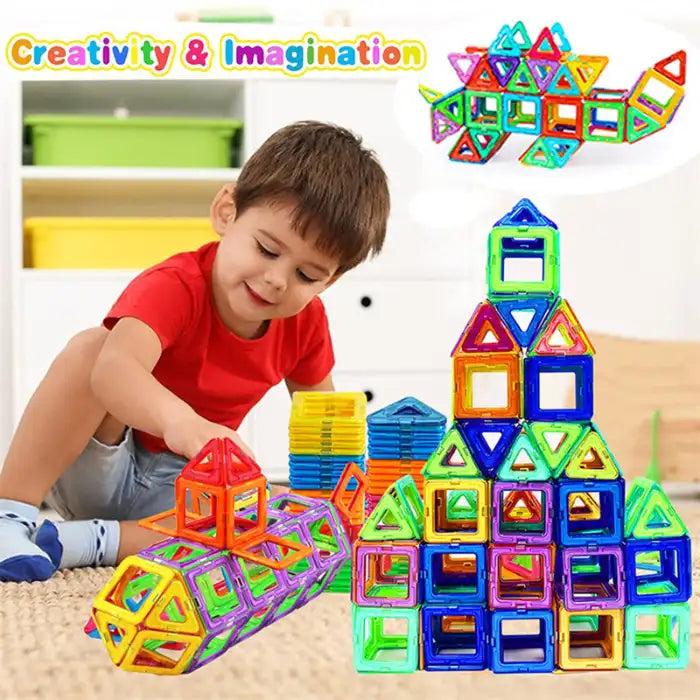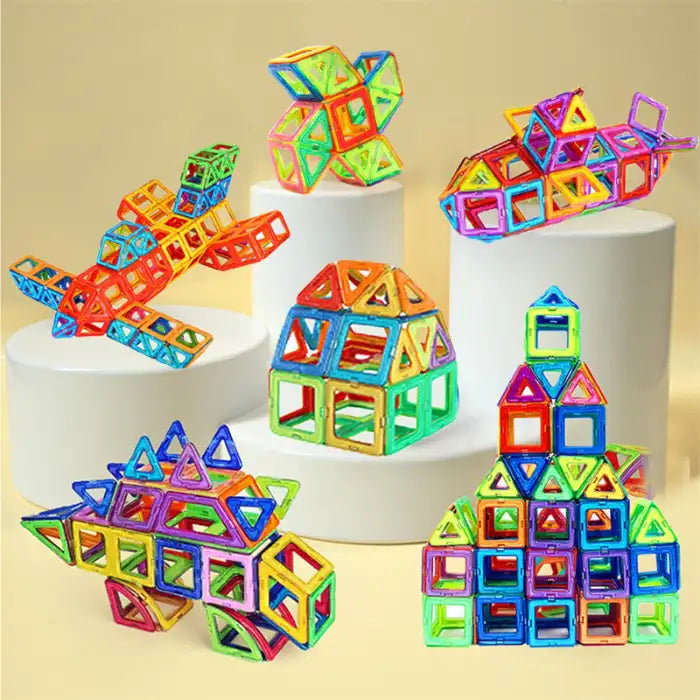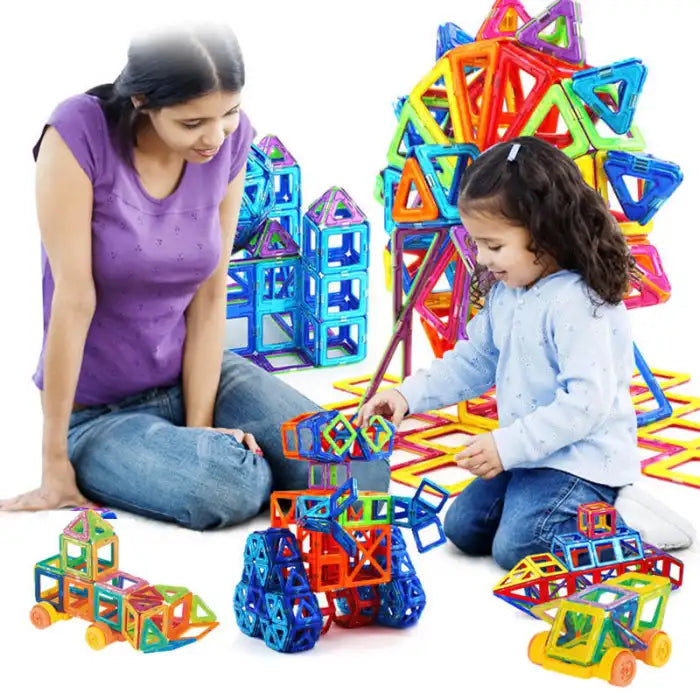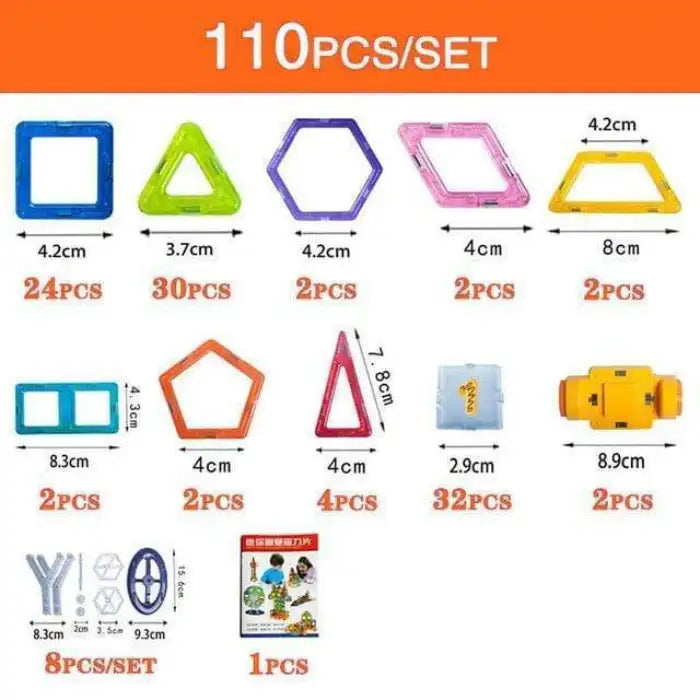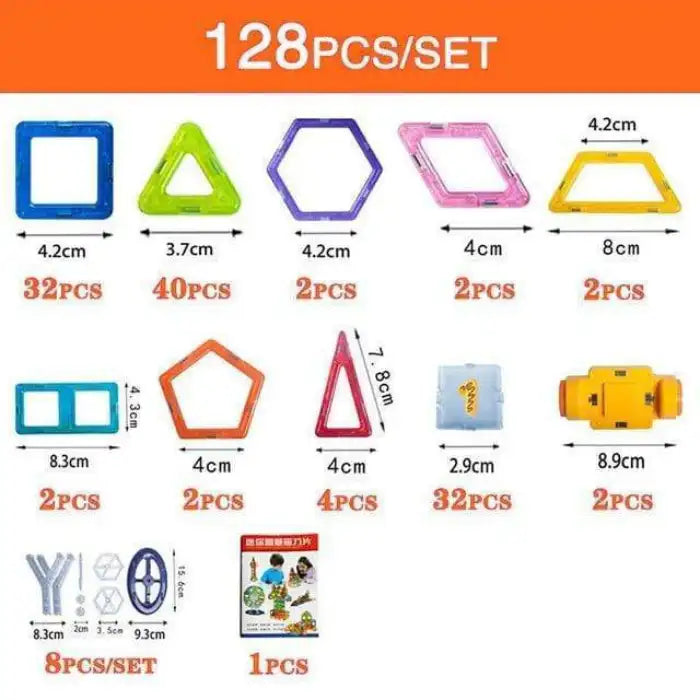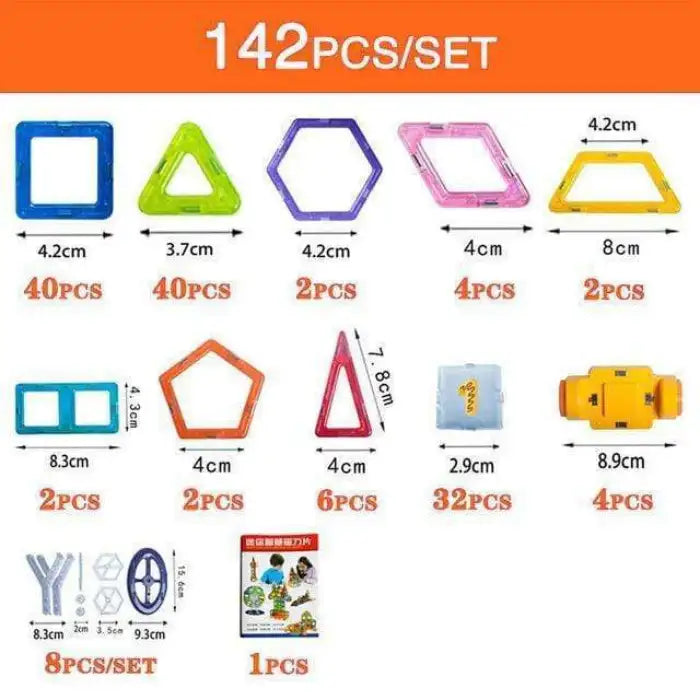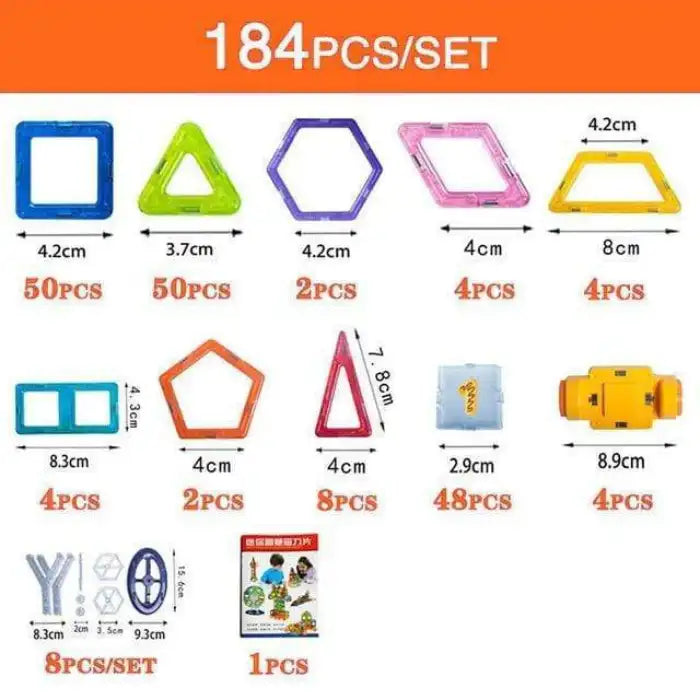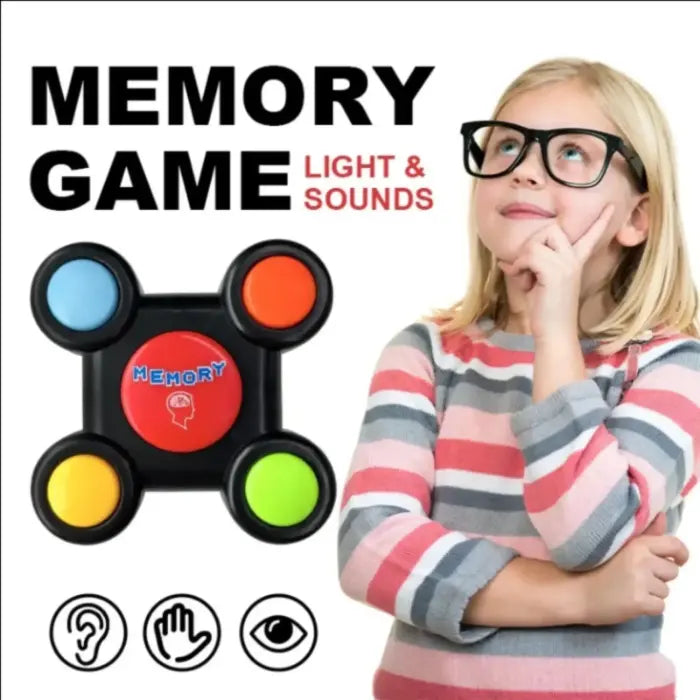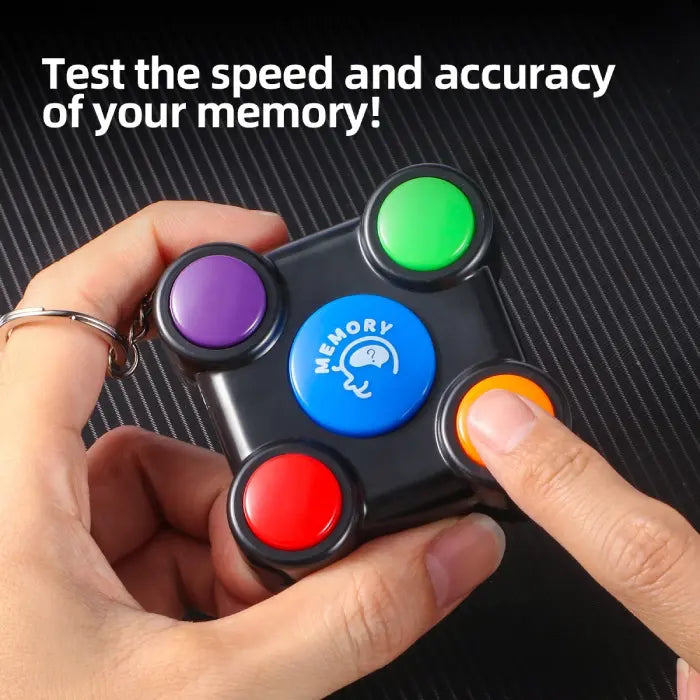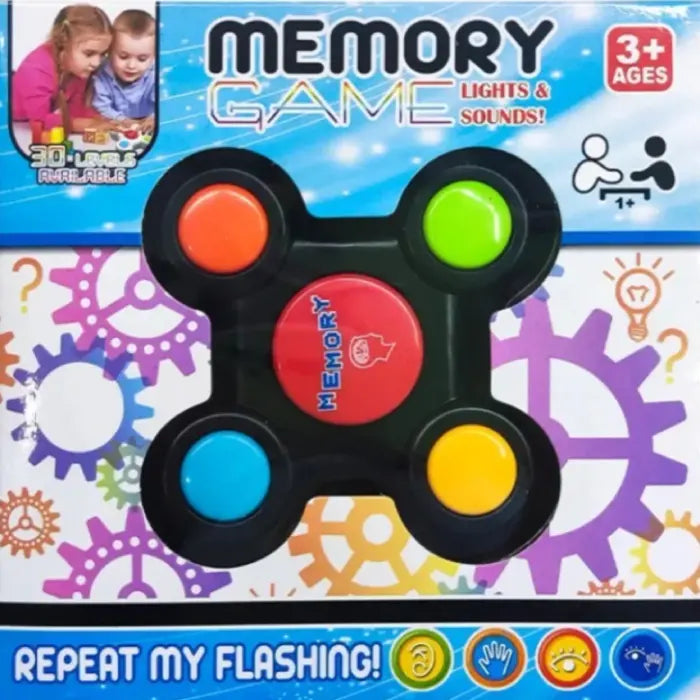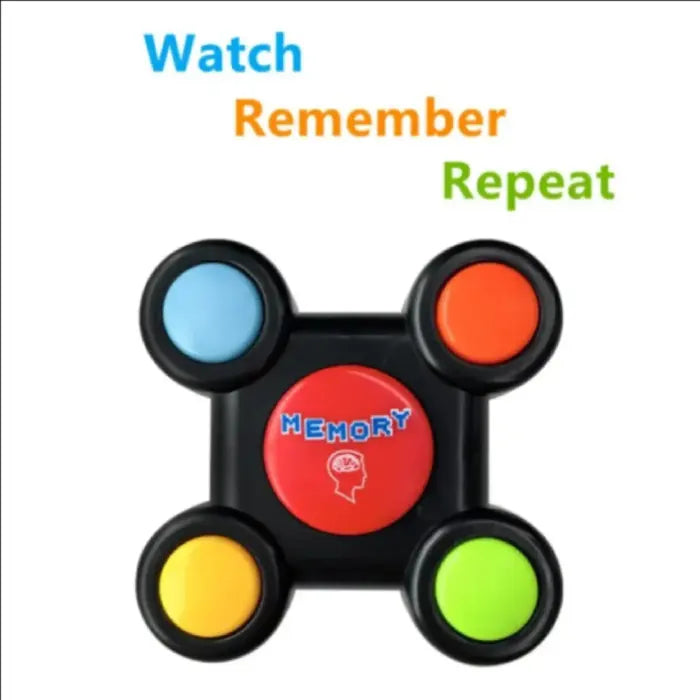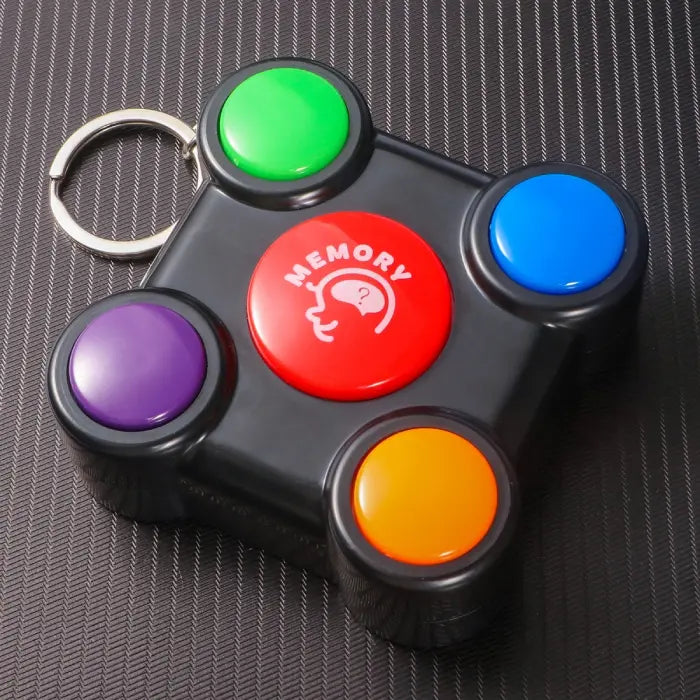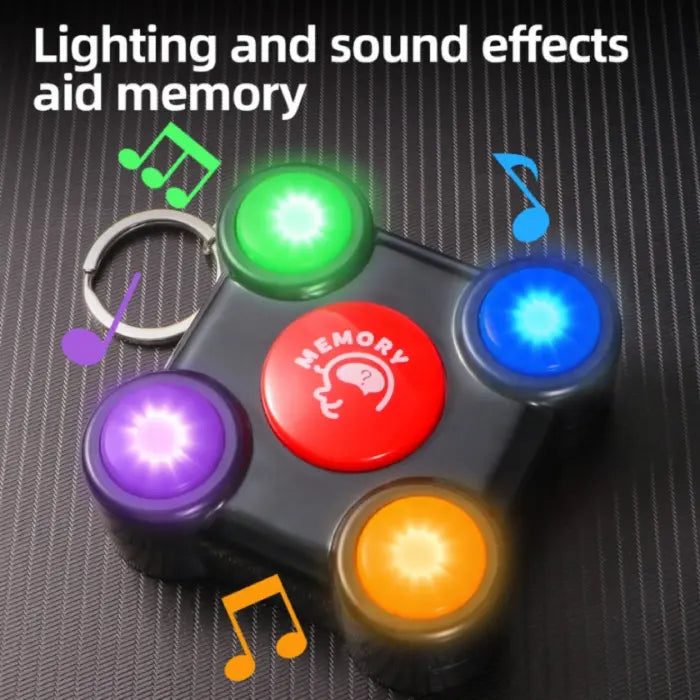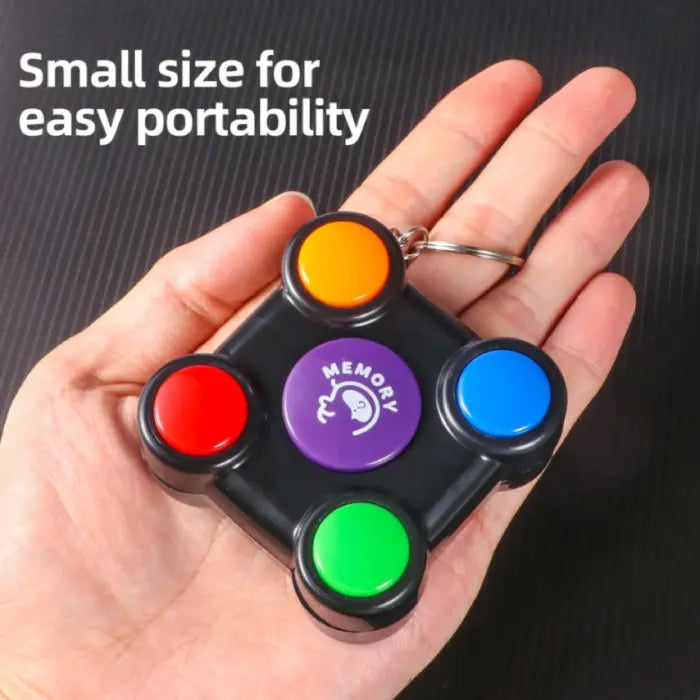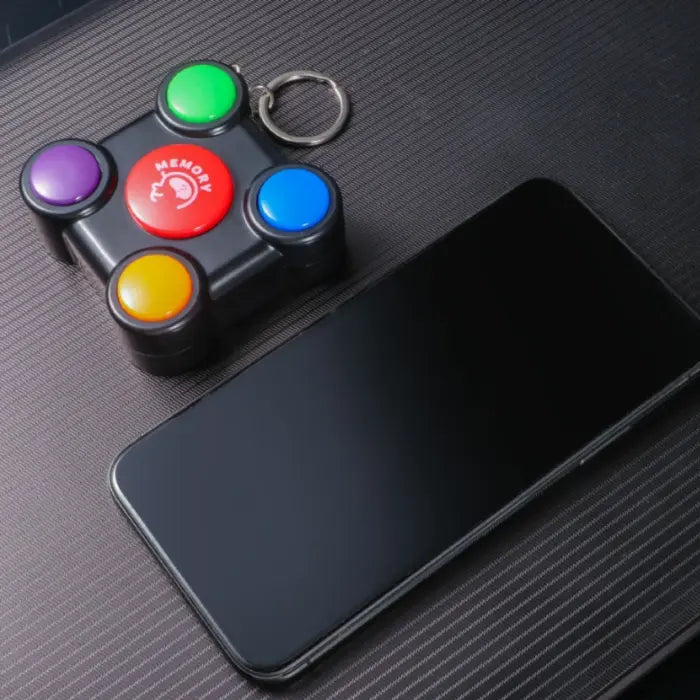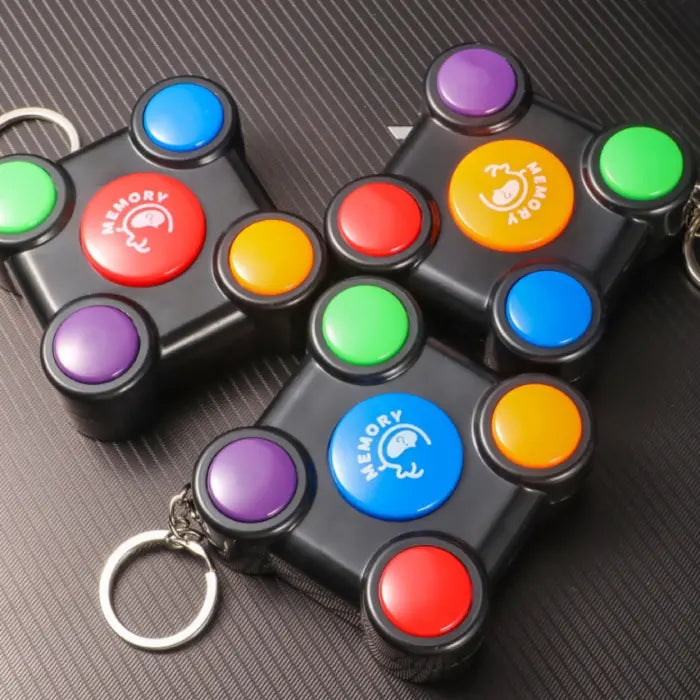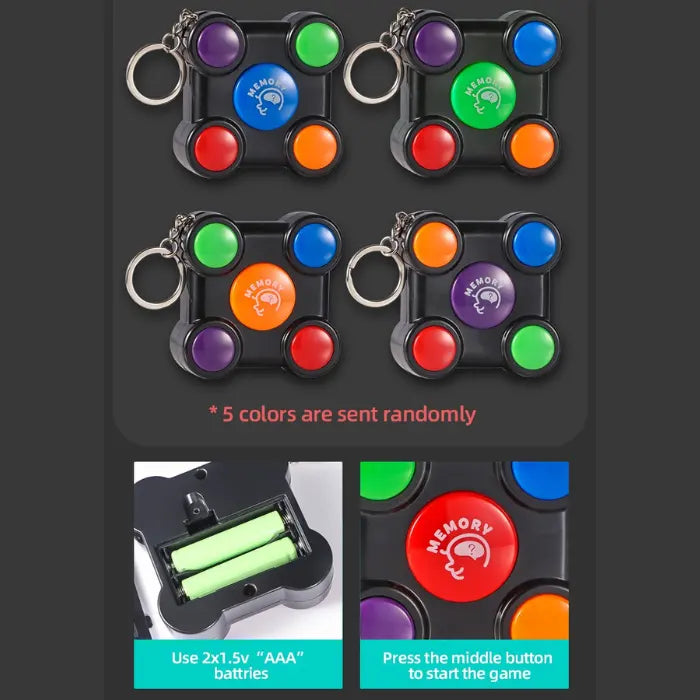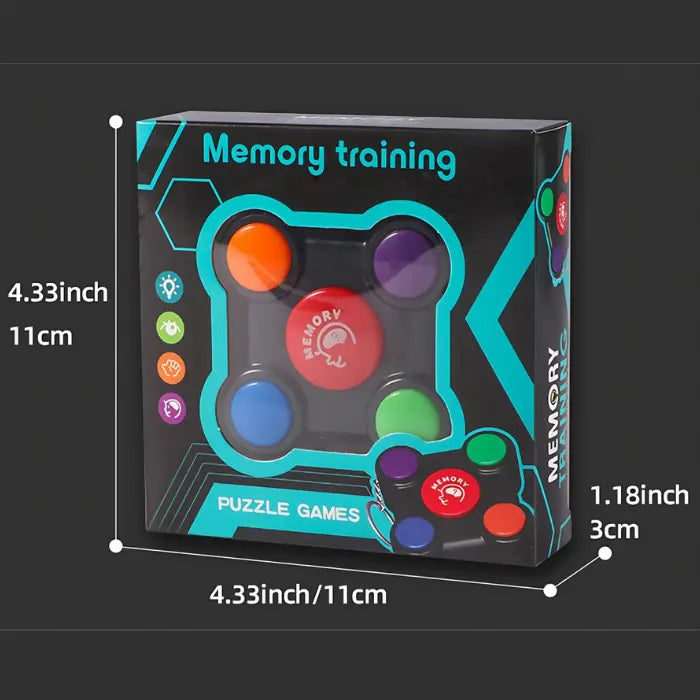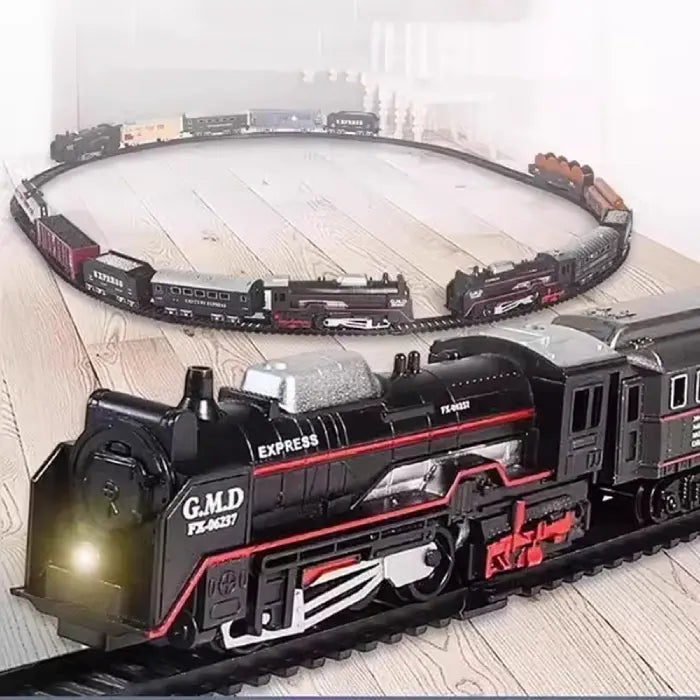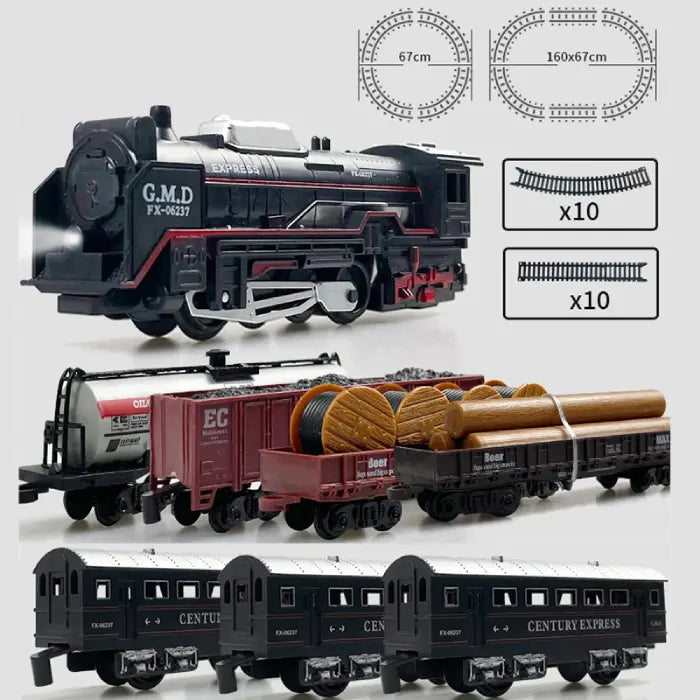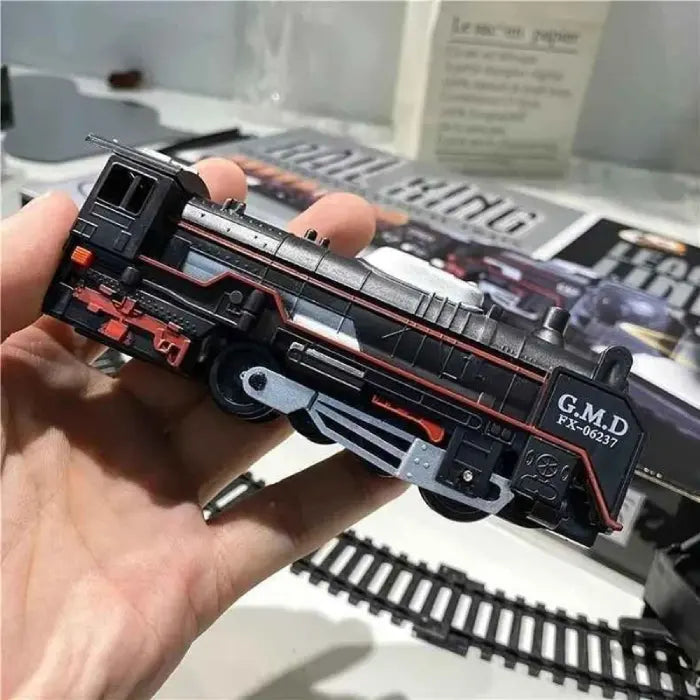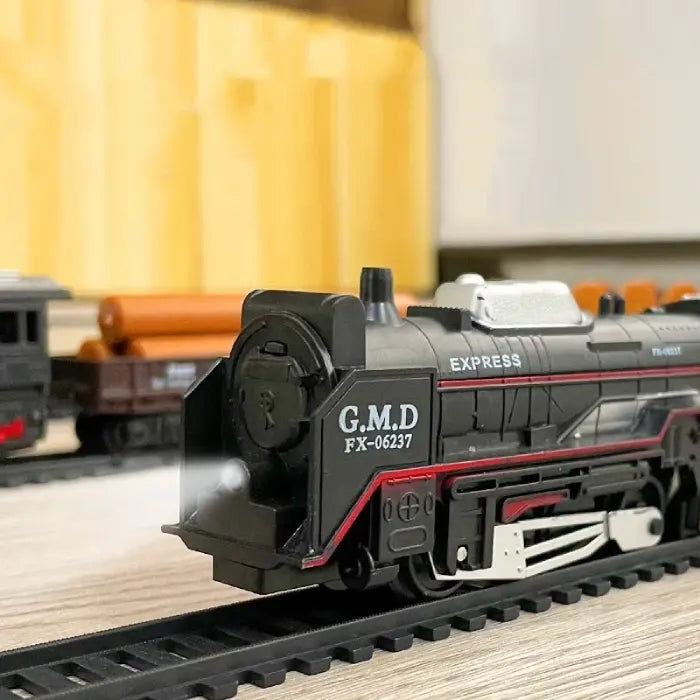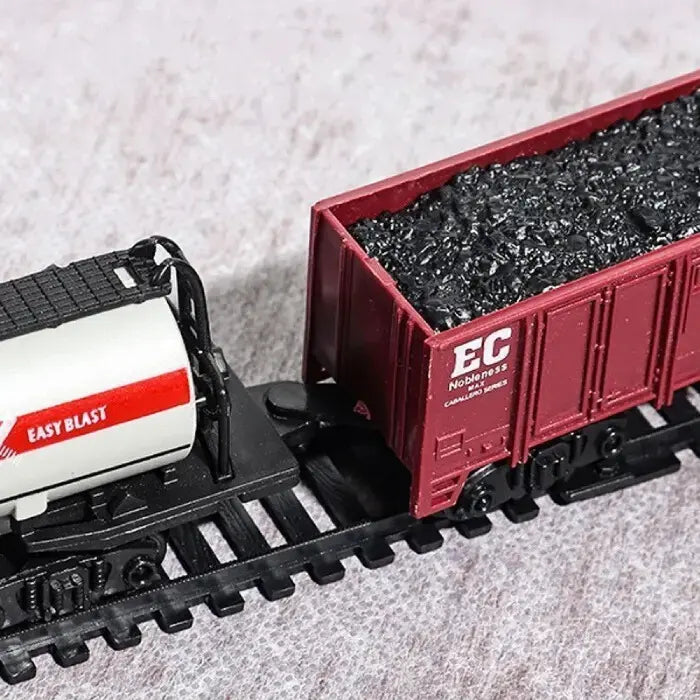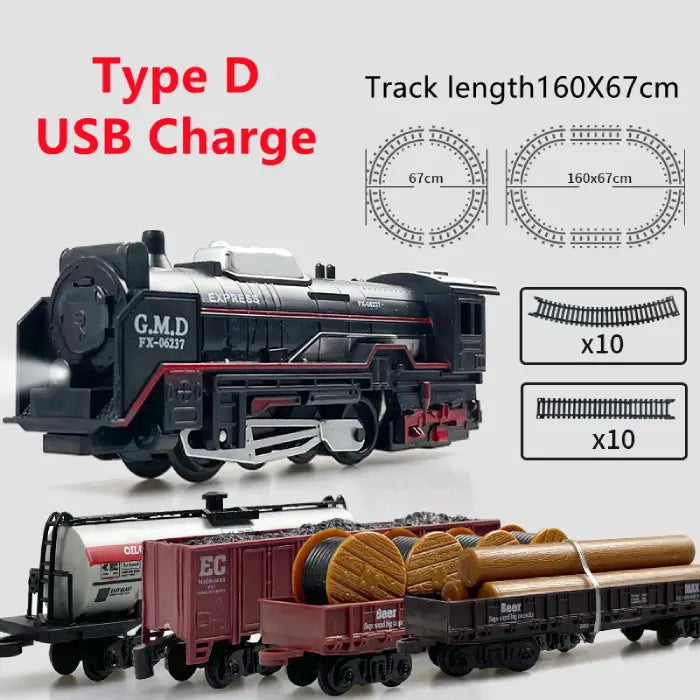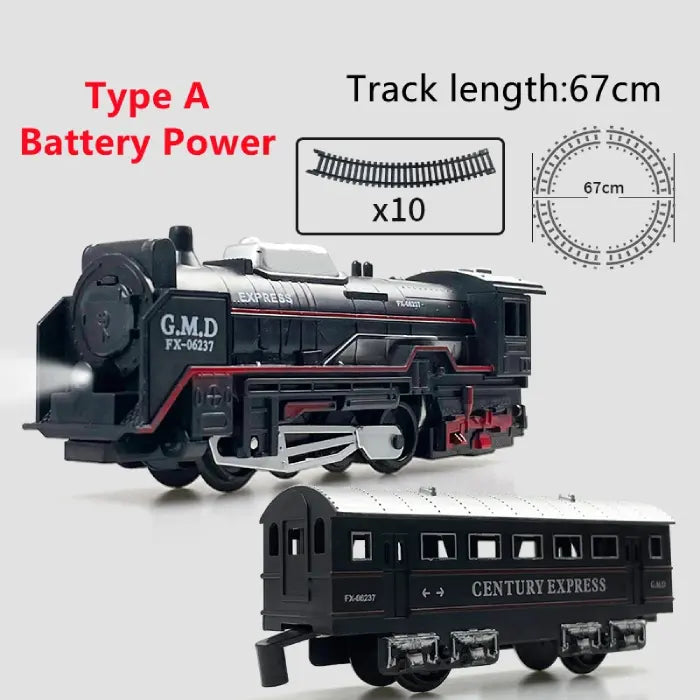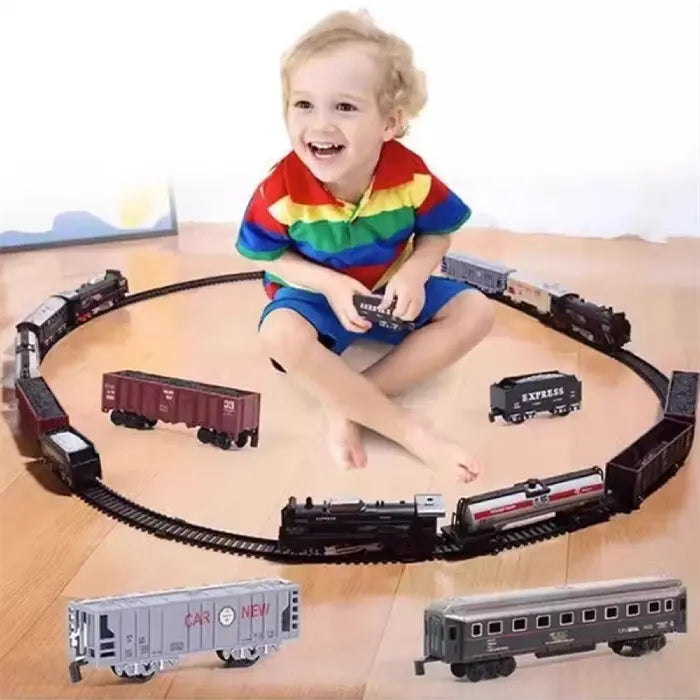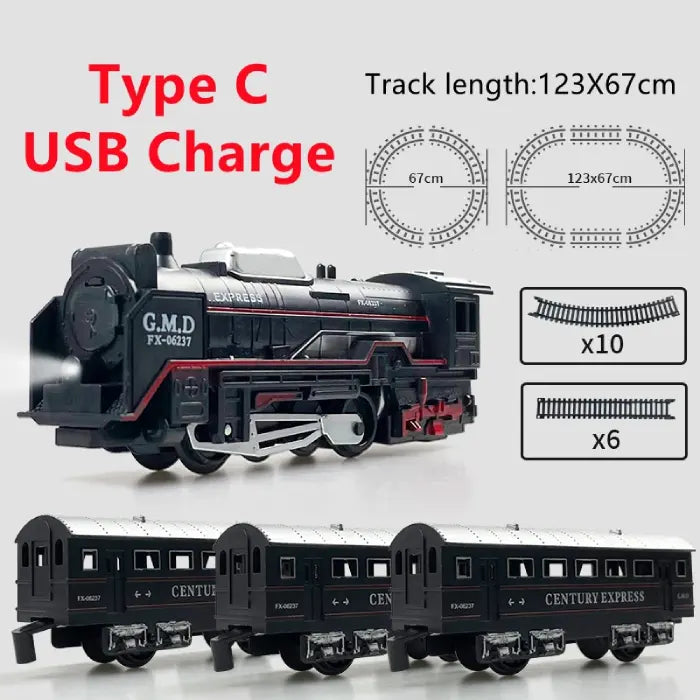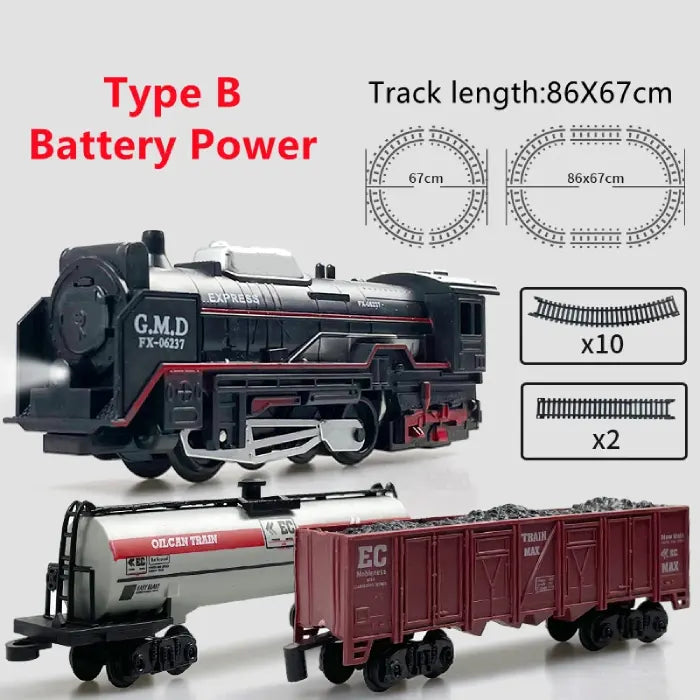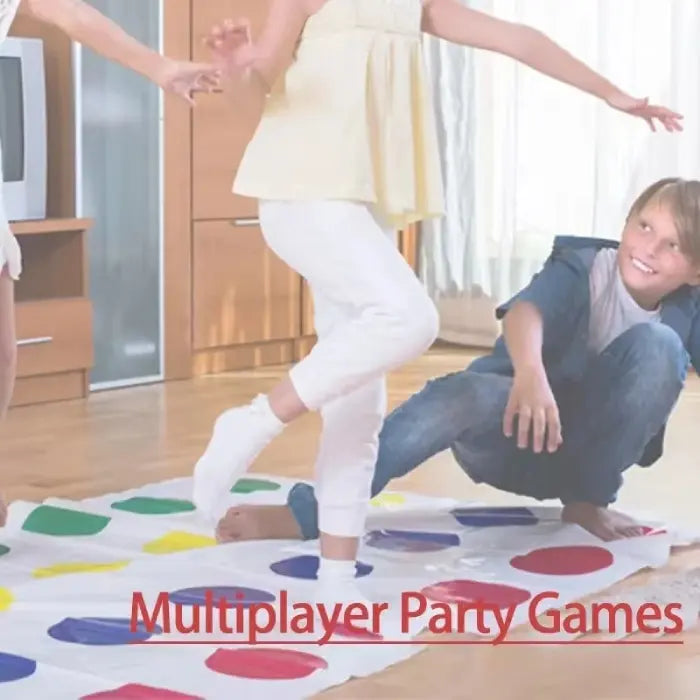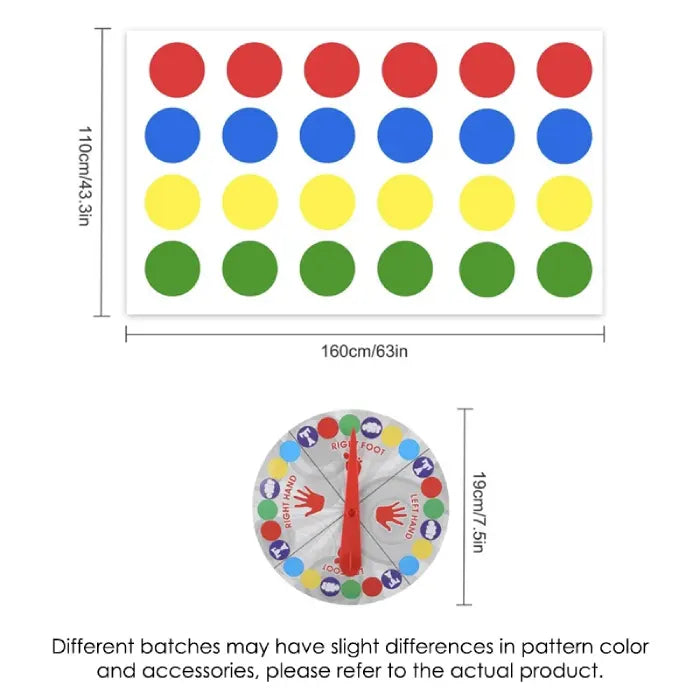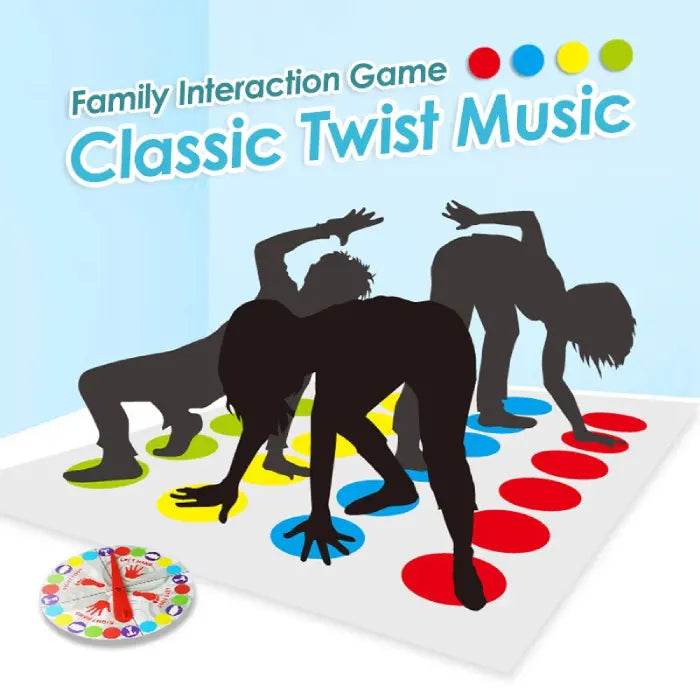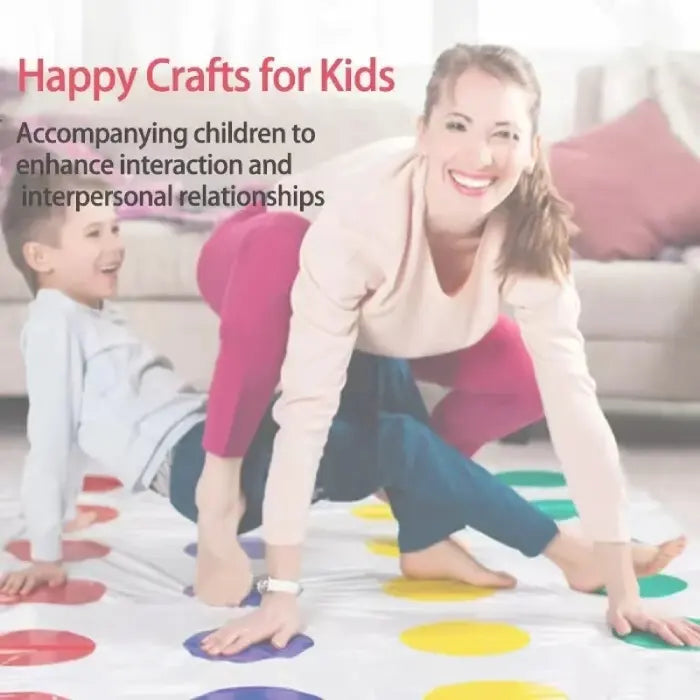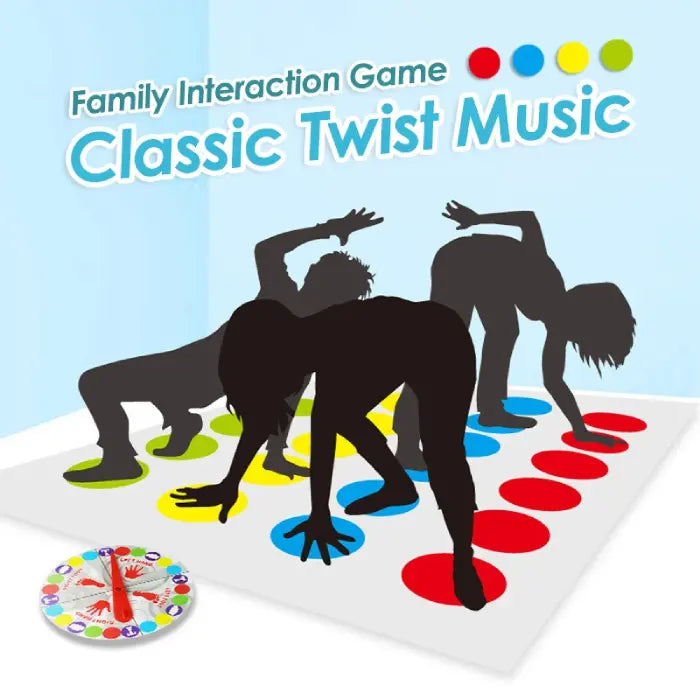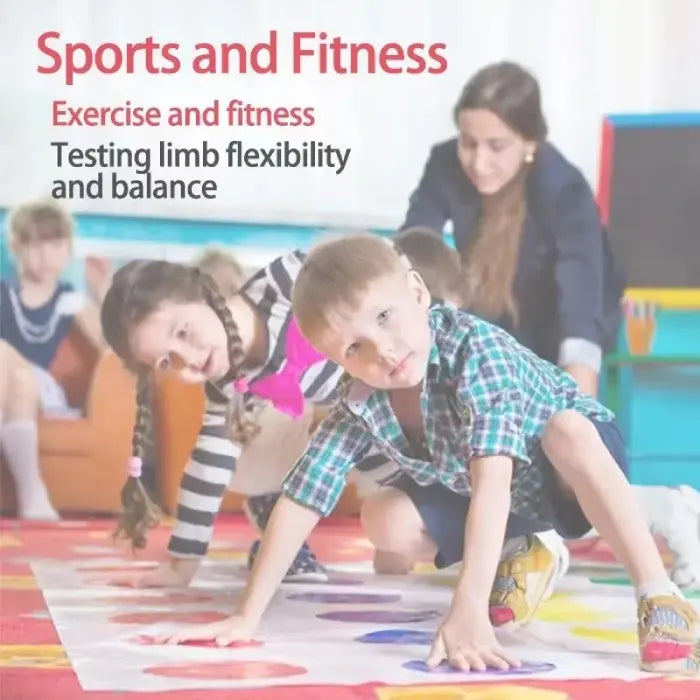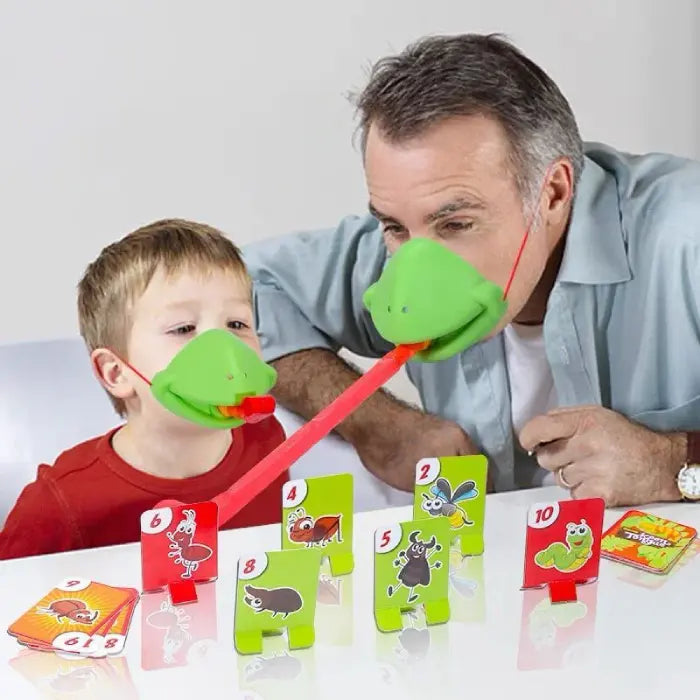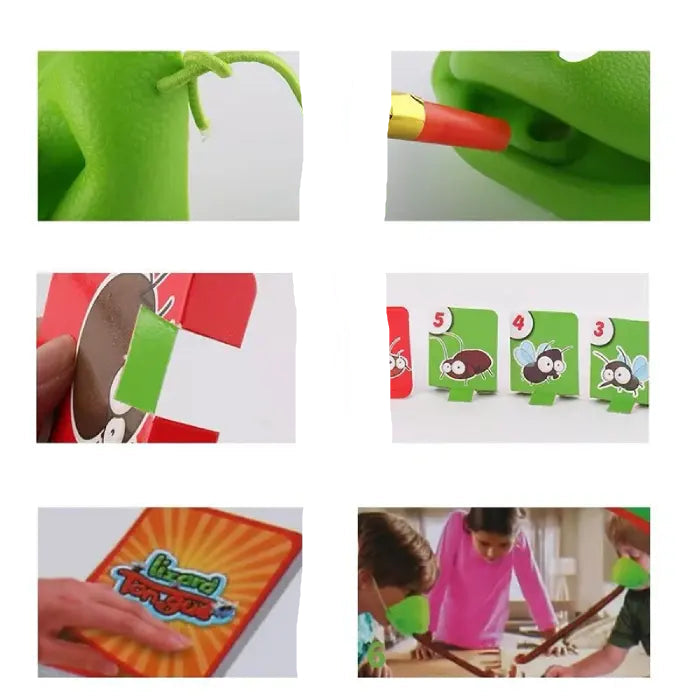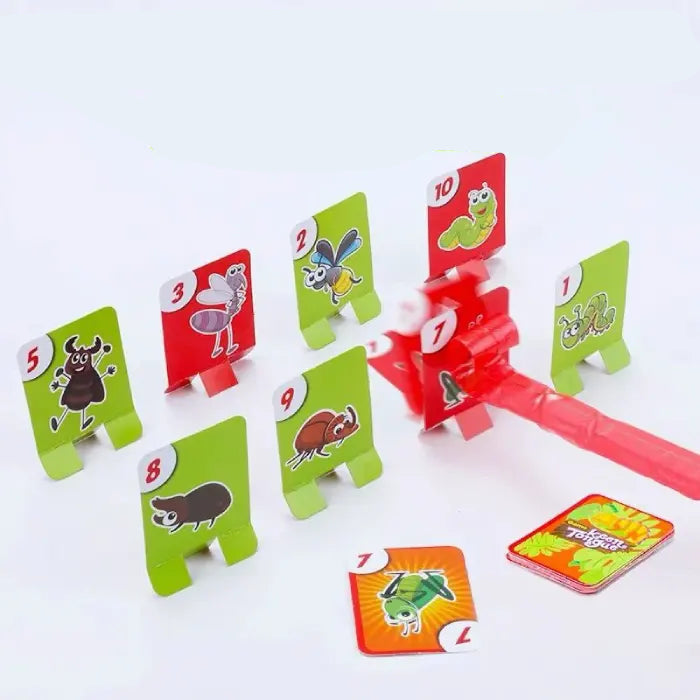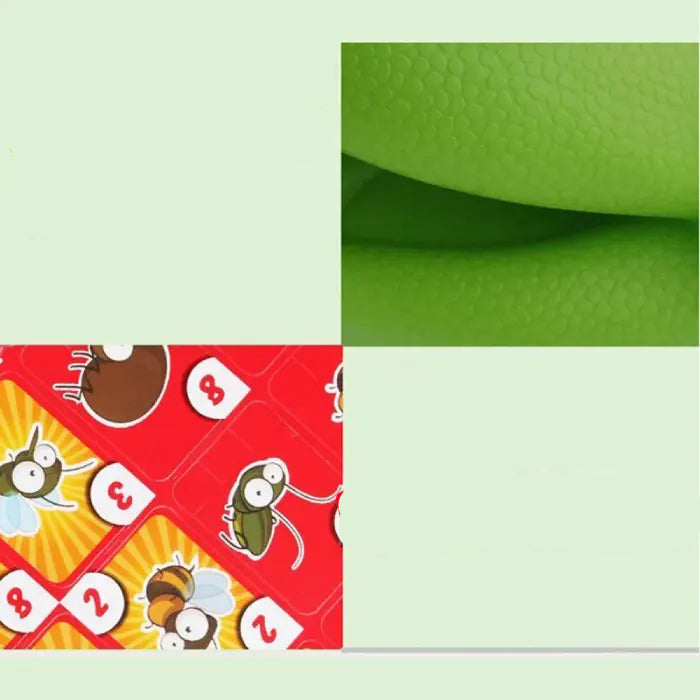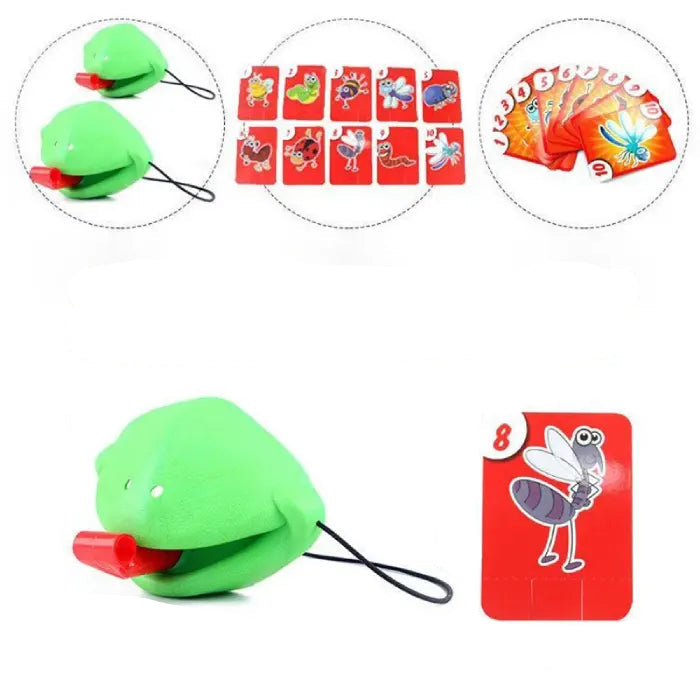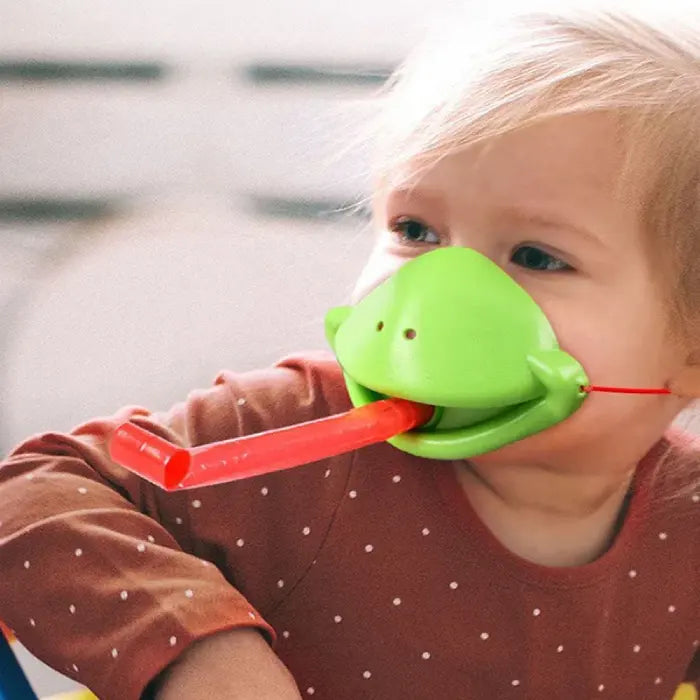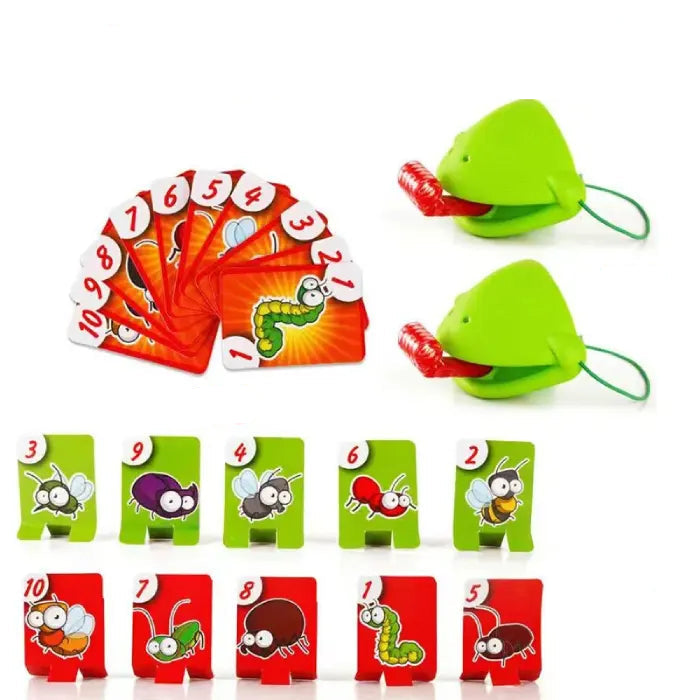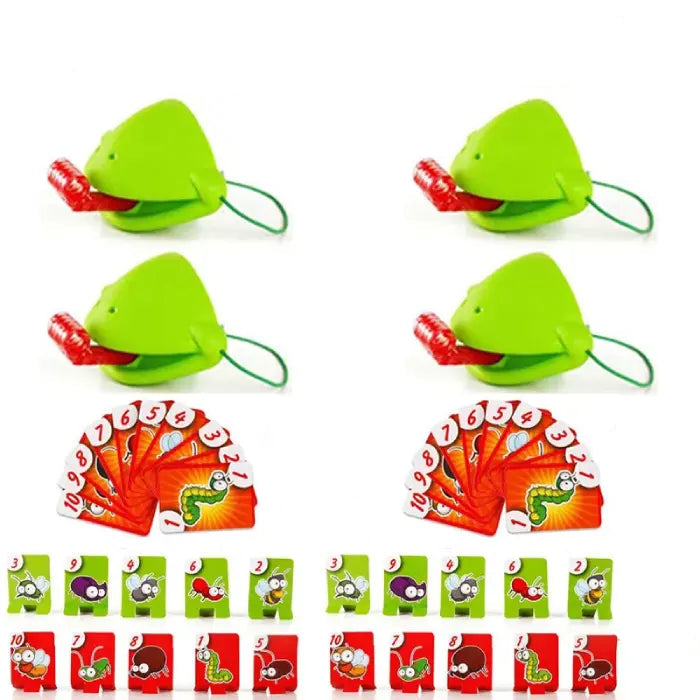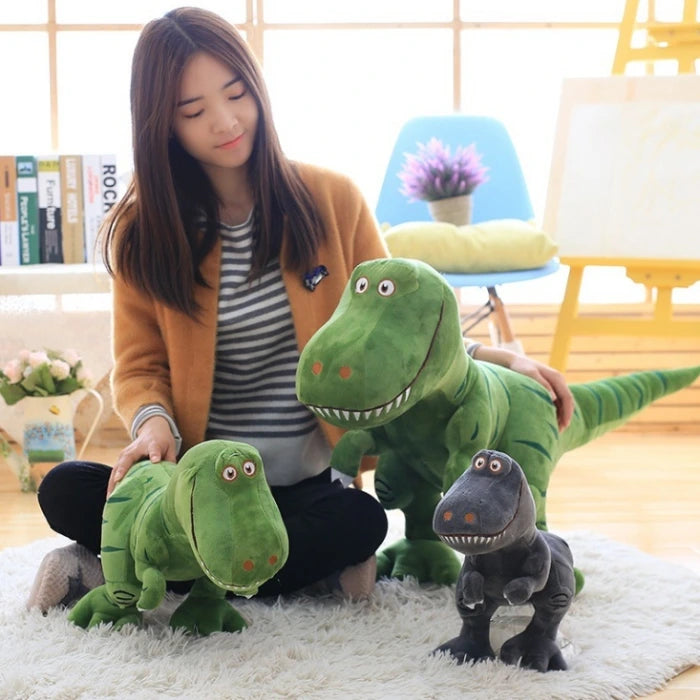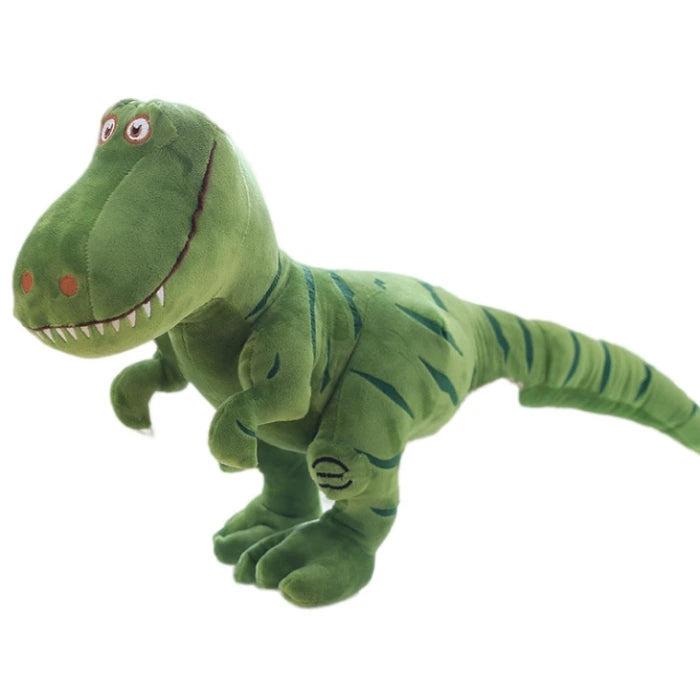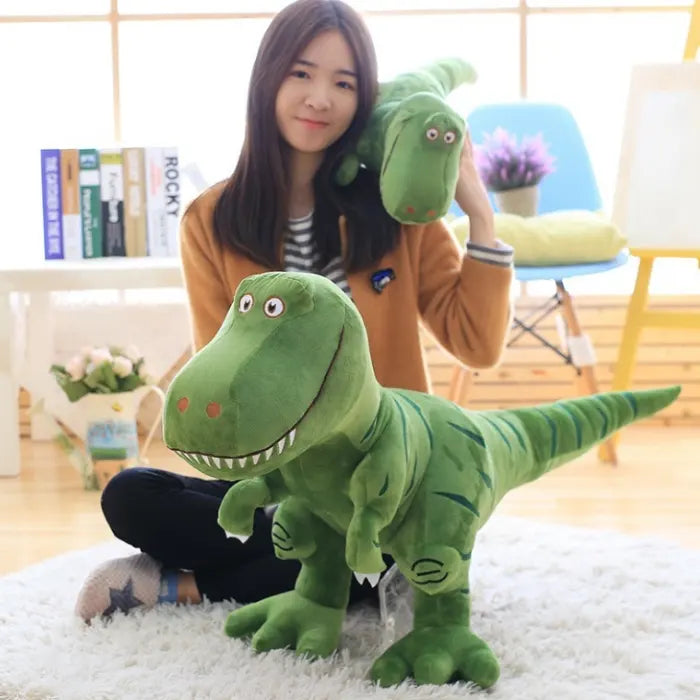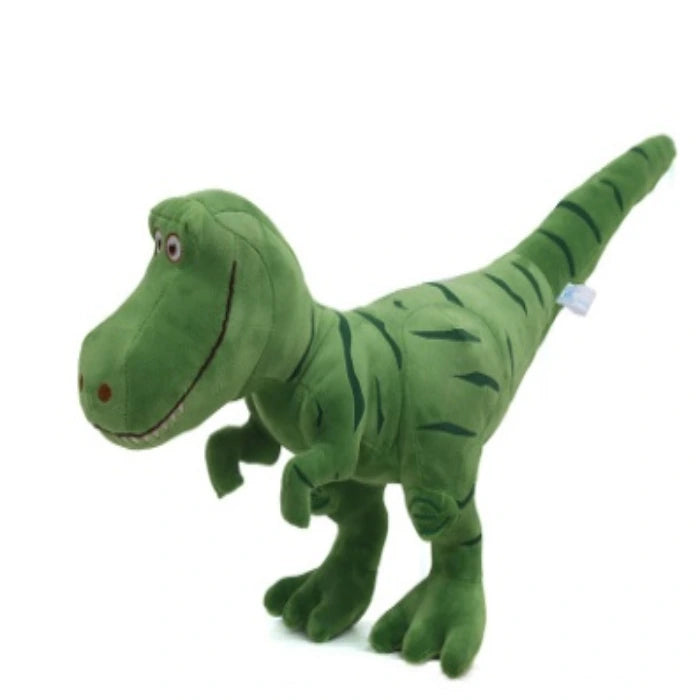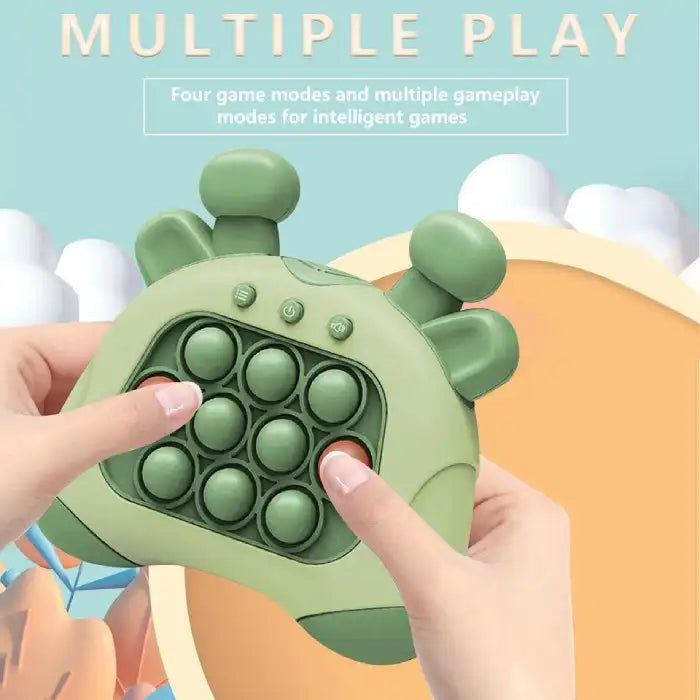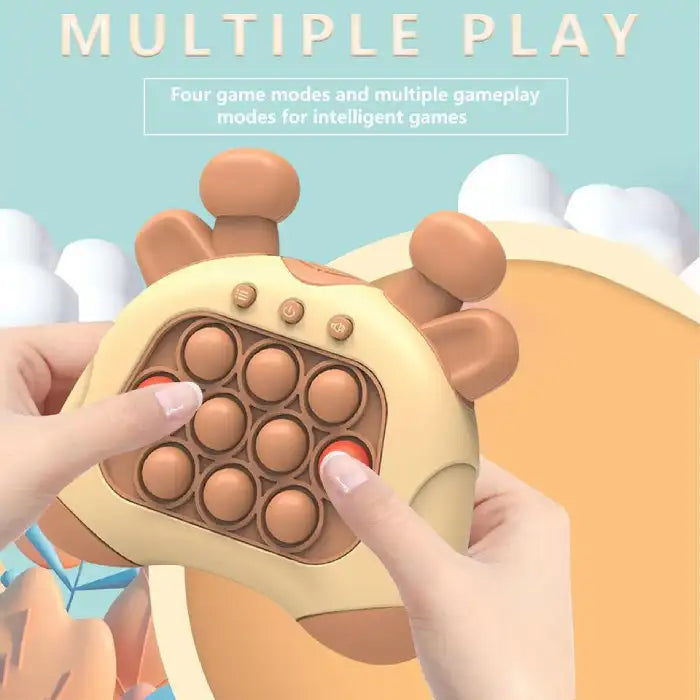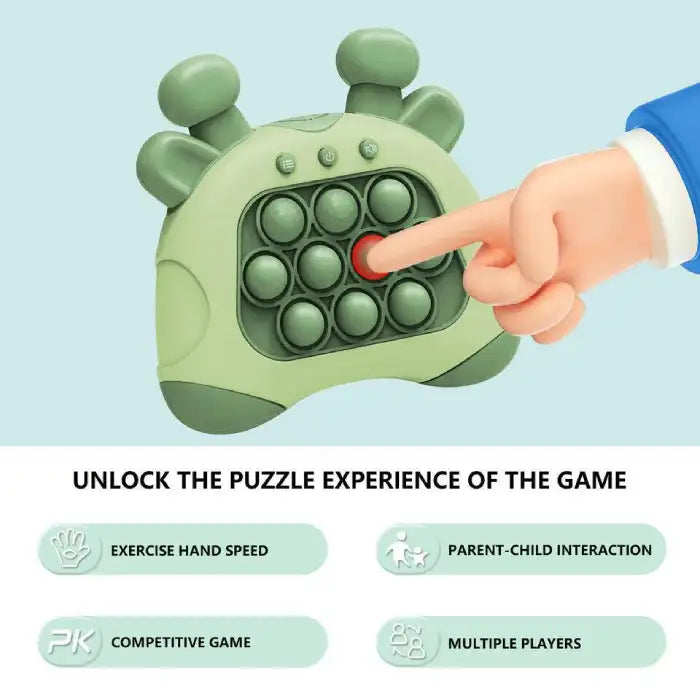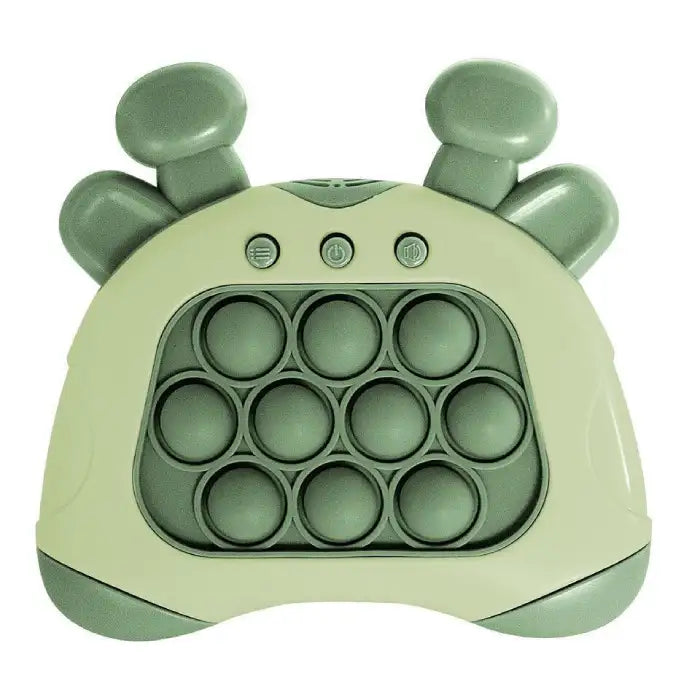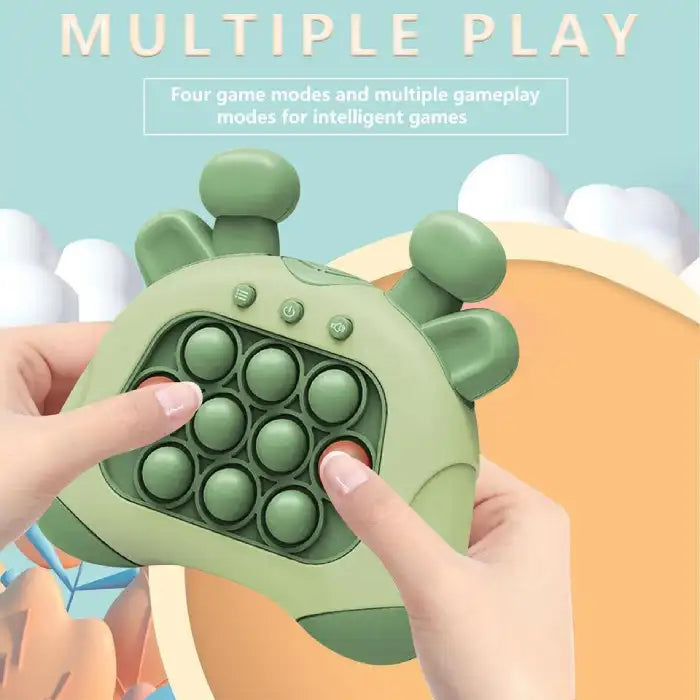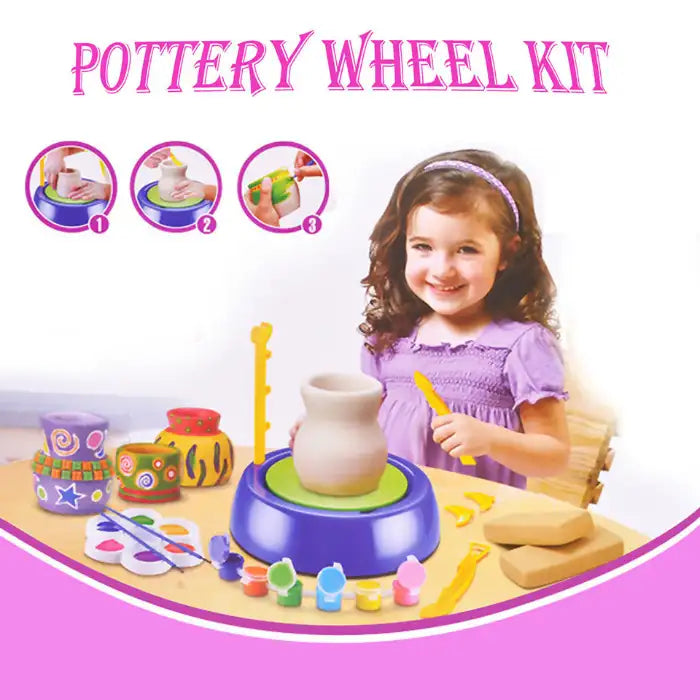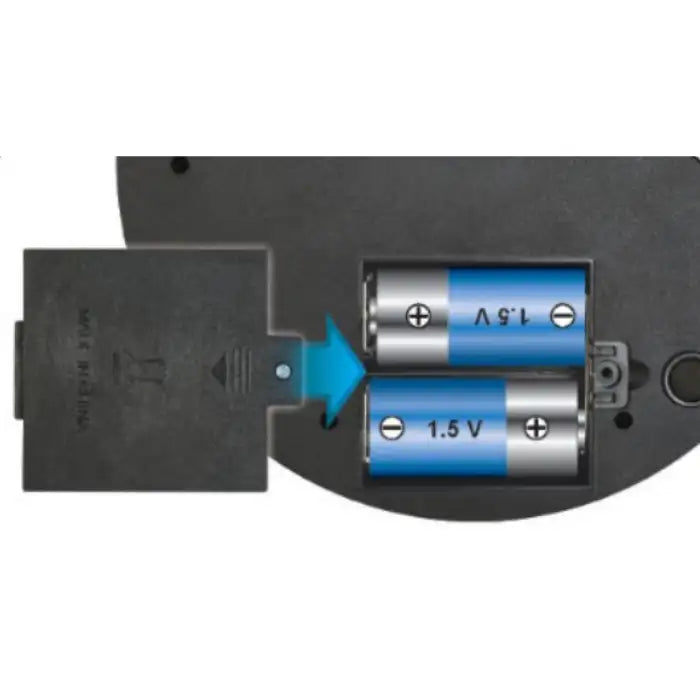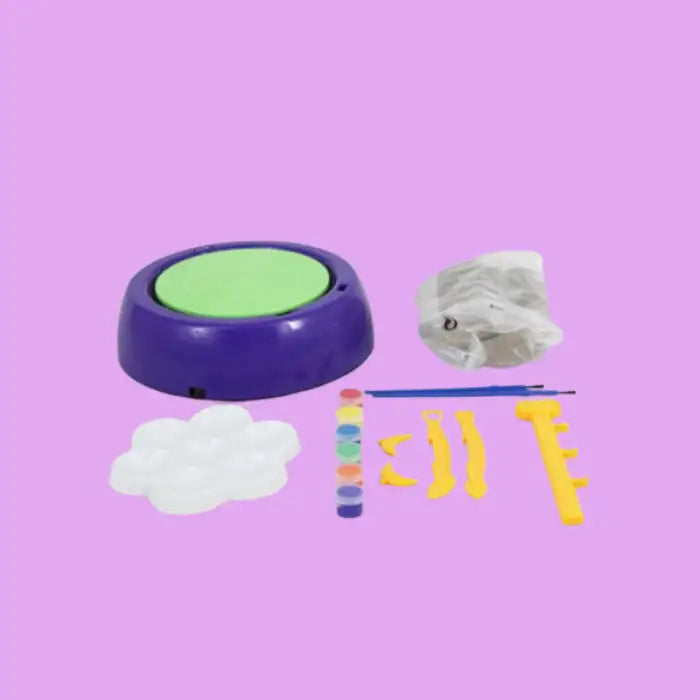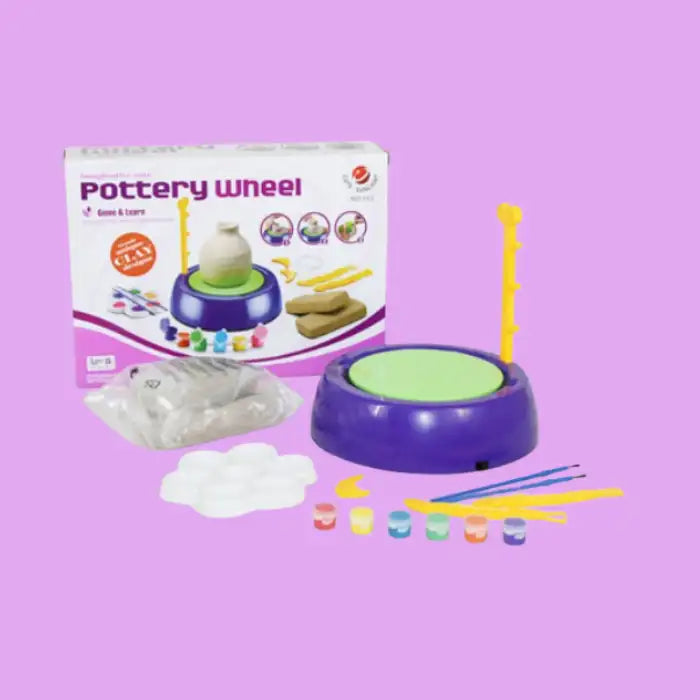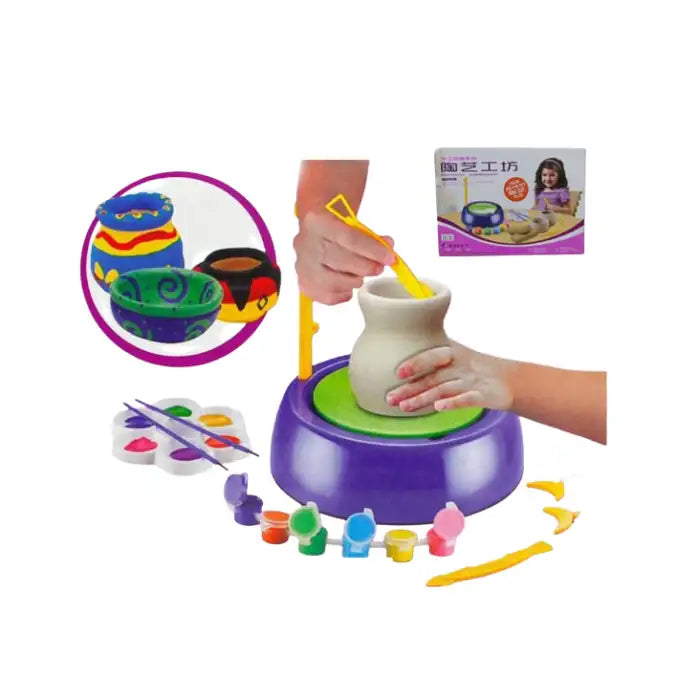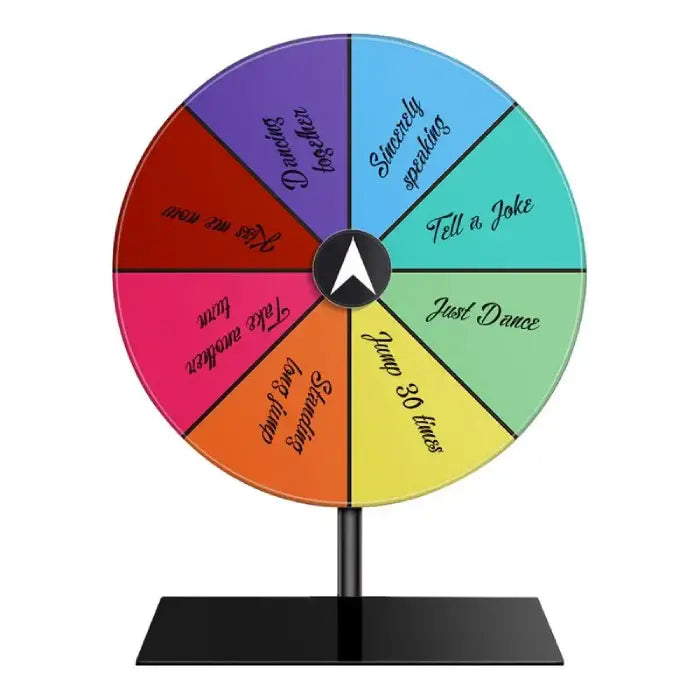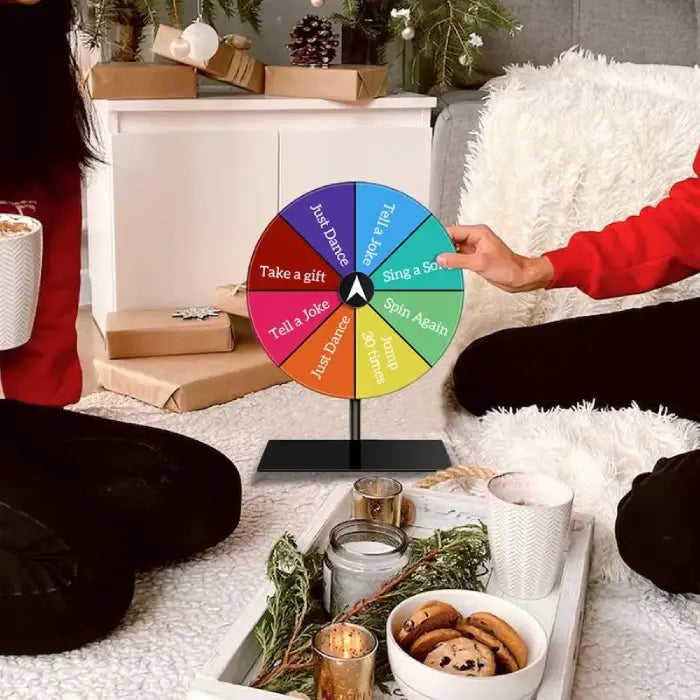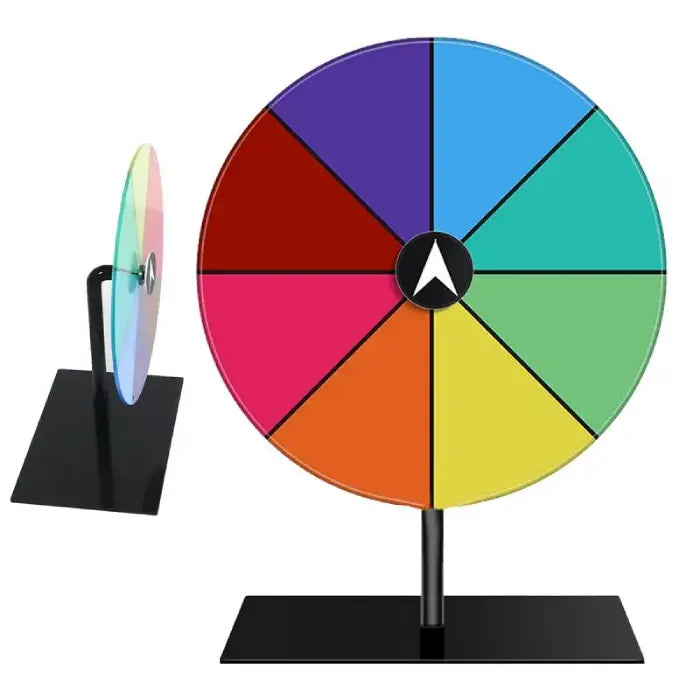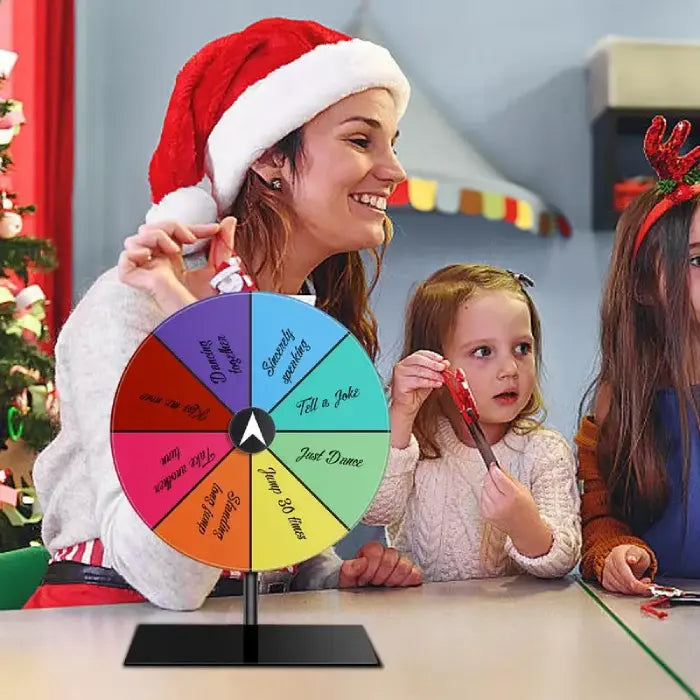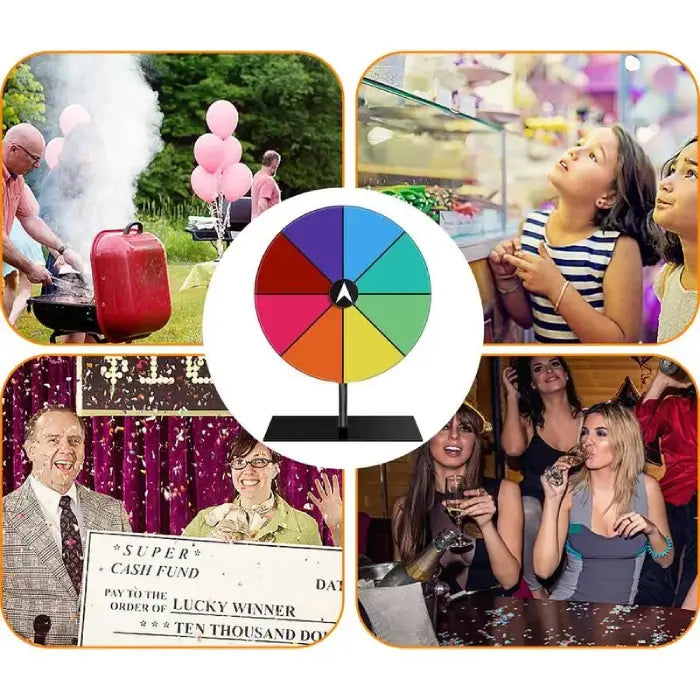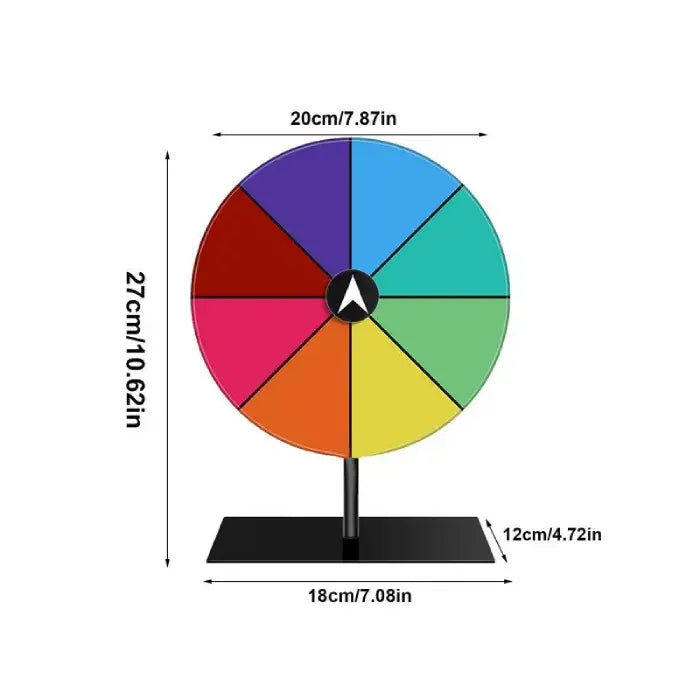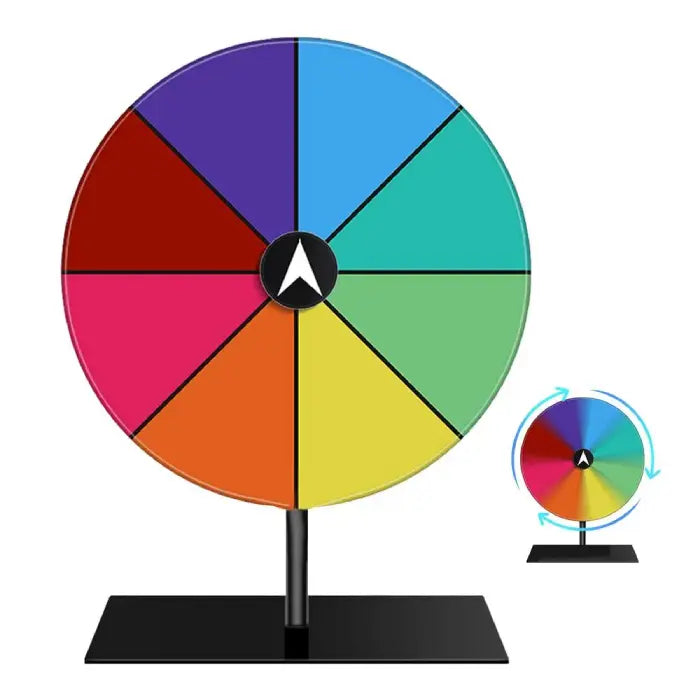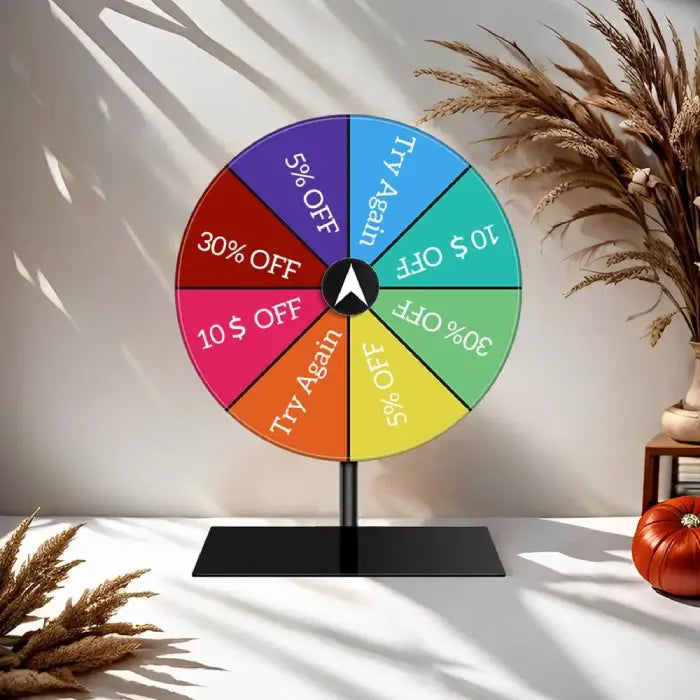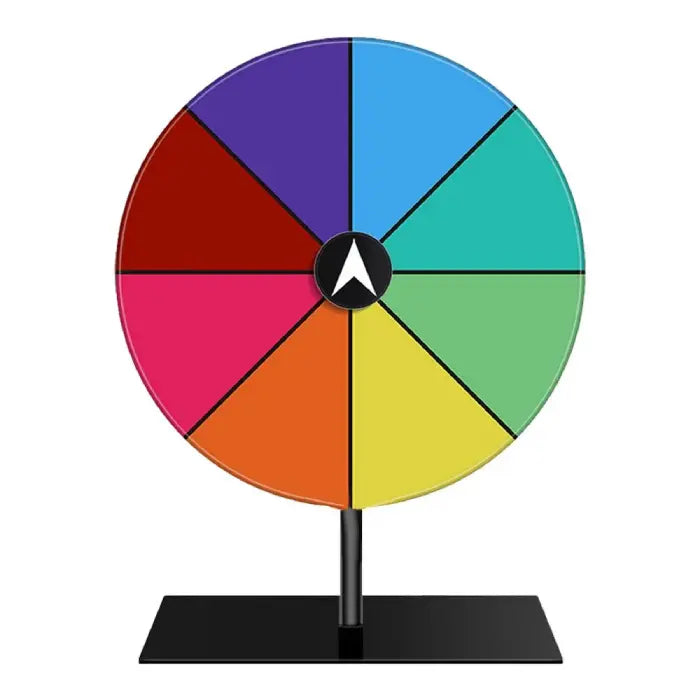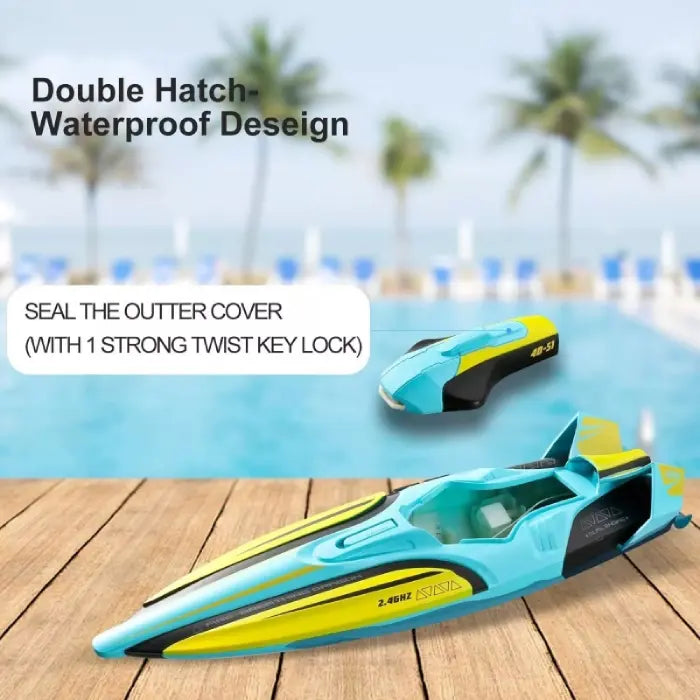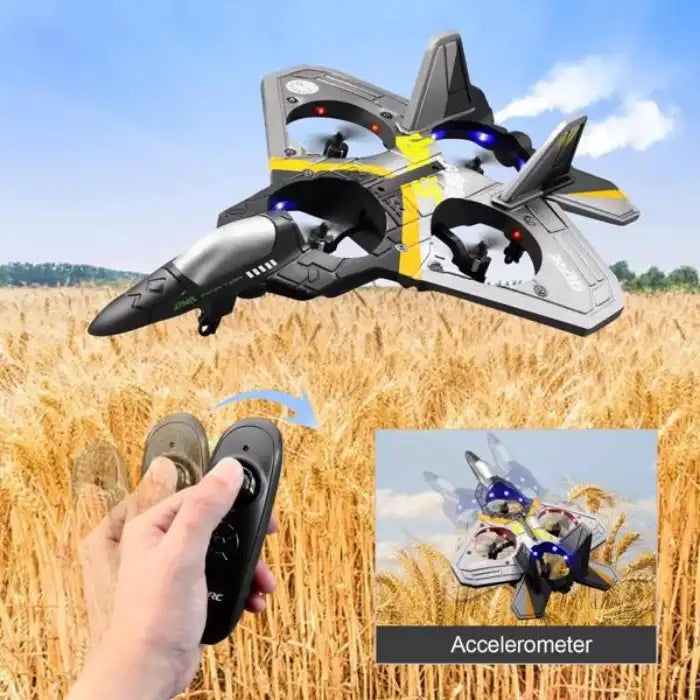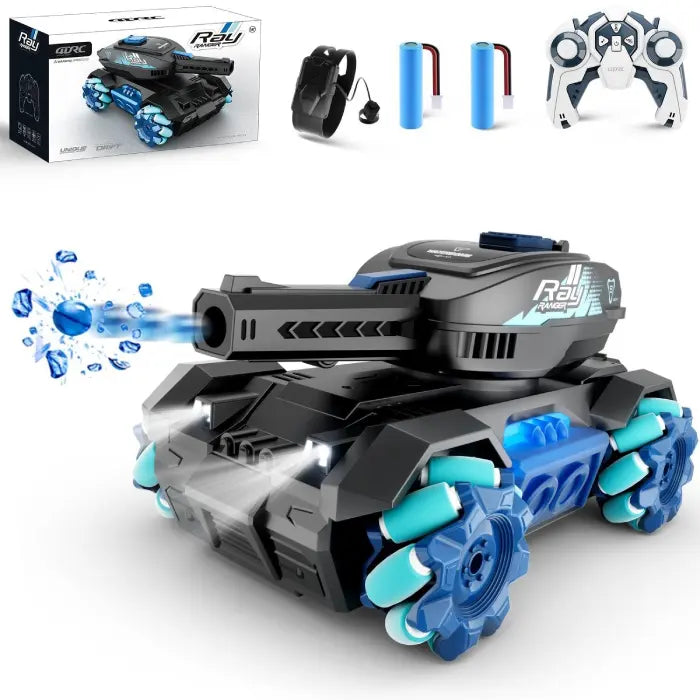Creative Toys Kids Love: Build Skills While Having Fun Now!
-
Hand Eye Coordination Toys for Kids - Fun Learning Activities -
Handheld Games for Kids - 3 Fun Travel Games Rechargeable -
Hovercraft Toys for Kids: Remote Control Bee Toy with Infrared -
Interactive Globe for Kids - Learn World Geography -
Kids Easel Double Sided Drawing Board with Storage -
Kids Remote Control Excavator Toy - Realistic, Durable Fun -
Kids Watch - Waterproof Digital Watch for Active Kids -
Lovely Cartoon Children Watch - Gift Under $15 -
Magnetic Blocks for Kids - Creative Building & STEM Fun -
Memory Game Electronic - Boost Kids & Adult Brain Skills -
Model Train Sets for Kids and Adults - Premium Electric Trains -
Party Games for Family Fun - Twister Game Board for Kids and Adults -
Party Games: Frog Lizard Mask Game for Family Fun -
Plush Dinosaurs - Soft & Cuddly Stuffed Animals for Kids -
Pop games for kids Fun, learning, portable play for children -
Pottery Wheel Kit for Kids - Creative Fun & Art Skills -
Prize Wheel Spinner for Parties & Events -
Race Track Set for Kids - Build Fun Toy Car Tracks -
RC Boats - 20 MPH Remote Control Speedboat for Kids -
RC Boats: Fast Self-Righting Remote Control Speed Boat -
RC Car Stunt Machine All-Terrain Fun Rechargeable -
RC Drone Fighter Jet for Kids Easy to Fly Fun -
RC Tank All Terrain Water Bullet Stunt Gesture Control -
Remote Car Stunt Toy with Smoke and Gesture Control
Creative Toys Kids Love: Build Skills While Having Fun Now!
You catch yourself feeling guilty every time your toddler asks for the tablet again, wondering if you're failing as a parent because screen time feels easier than finding activities that actually hold their attention. The truth is, this struggle is completely normal and has nothing to do with your parenting skills. Research shows that 93% of children ages 2-9 now spend more time with digital devices than engaging in hands-on creative play.
Finding the right balance between technology and traditional play doesn't have to feel impossible. When you choose the right learning tools, you give your child opportunities to build confidence, develop critical thinking skills, and stay naturally engaged without constantly reaching for screens. The key lies in selecting educational toys that match your child's developmental stage while sparking their natural curiosity and creativity.
Every parent wants to see their child grow into a confident problem-solver who chooses building blocks over tablets and creative projects over passive entertainment. The right collection of learning toys creates this transformation by offering your child irresistible alternatives that feed their developing minds and active bodies.
Why Kids Toys Matter More Than Ever in Screen-Heavy Times
Kids toys serve as essential tools for healthy development in our digital world. When children engage with hands-on learning materials, they build neural pathways that screen-based activities simply cannot create. Your child's brain develops through physical manipulation, spatial reasoning, and real-world problem solving that only tangible toys can provide.
Building Toddler Toys That Last Through Active Play
Toddler toys need to withstand the enthusiasm of little hands that grab, throw, and explore with unlimited energy. Quality construction means your investment pays off through months and years of engaged play rather than breaking after a few uses. When you choose well-made educational materials, you're setting up success for both your child's development and your family budget.
Sensory Toys for Early Development
Sensory toys help your 2-3 year old make sense of their world through touch, sight, and movement. These early learning tools support brain development by giving your child safe ways to explore different textures, sounds, and visual patterns. Simple sensory experiences build the foundation for more complex learning that comes later.
- Textured balls and shapes that encourage tactile exploration
- Stacking rings with different weights and materials
- Soft fabric books with varied textures and crinkly sounds
- Water play toys that teach cause and effect
Wooden Toys for Timeless Appeal
Wooden toys offer durability that plastic alternatives often lack, making them perfect for active toddlers who put everything to the test. Natural materials provide a different sensory experience that many children find more satisfying than synthetic options. These classic learning tools often become family treasures that pass from one child to the next.
- Shape sorters that teach spatial reasoning
- Wooden puzzles with large, easy-to-grasp pieces
- Building blocks that grow with your child
- Pull-along toys that encourage movement
Educational Toys That Grow With Your Child
Educational toys with multiple levels of complexity give you the best value by adapting to your child's changing abilities. A 3-year-old might use building blocks for simple stacking, while a 6-year-old creates complex structures that require planning and spatial reasoning. This adaptability means fewer toys overall and more meaningful play experiences.
Preschool Toys for School Readiness
Preschool toys help bridge the gap between free play and structured learning that your child will encounter in kindergarten. These educational materials introduce concepts like counting, letter recognition, and following multi-step instructions in playful ways. Your 4-5 year old develops school readiness skills without feeling pressured or overwhelmed.
- Alphabet puzzles that combine letters with pictures
- Counting bears for early math concepts
- Pattern blocks that teach sequencing and logic
- Lacing cards that build fine motor skills
STEM Toys for Future Thinkers
STEM toys introduce science, technology, engineering, and math concepts through hands-on exploration rather than abstract lessons. Your child learns by doing, which creates deeper understanding and genuine enthusiasm for learning. These experiences build confidence in subjects that many children find challenging in traditional school settings.
- Simple machines that show how gears and levers work
- Magnetic building sets that teach engineering principles
- Basic chemistry sets designed for young children
- Coding games that introduce logical thinking
Creative Toys That Spark Imagination
Creative toys give your child permission to think outside the box and express their unique ideas through play. When children have open-ended materials, they develop problem-solving skills by figuring out how to bring their visions to life. This creative confidence transfers to other areas of learning and helps your child become a more flexible thinker.
Arts and Crafts Toys for Self-Expression
Arts and crafts toys provide outlet for emotions and ideas that your child might not have words for yet. Creating something with their own hands gives children a sense of accomplishment and ownership that builds self-esteem. These activities also improve fine motor skills that support writing and other academic tasks.
- Child-safe scissors and colorful paper for cutting practice
- Washable markers and crayons in various sizes
- Playdough and clay for 3D creation
- Stickers and stamps for decorating projects
Learning Toys That Build Real Problem-Solving Skills
Learning toys that challenge your child to think critically create the foundation for academic success and life skills. When children work through puzzles, build structures, or figure out how things work, they develop persistence and logical thinking. These skills transfer directly to math, reading, and science learning in school.
STEM Learning Toys for Young Minds
STEM learning toys make complex concepts accessible to young children through play-based exploration. Your 5-7 year old can understand engineering principles by building bridges or learn about physics through simple machines. These hands-on experiences create positive associations with subjects that many students struggle with later.
The beauty of quality STEM materials lies in their ability to grow with your child's understanding. A basic building set might start as simple tower construction for a 3-year-old but evolve into complex architectural projects by age 8. This progression keeps children engaged while continuously challenging their developing abilities.
Educational Puzzles That Challenge and Delight
Educational puzzles offer the perfect combination of challenge and achievable success that keeps children coming back for more. When your child completes a puzzle, they experience genuine accomplishment that builds confidence for tackling harder problems. The logical thinking required for puzzle solving directly supports math and reading comprehension skills.
- Floor puzzles with 24-48 pieces for developing patience
- 3D puzzles that teach spatial reasoning
- Number and letter puzzles for academic skill building
- Geography puzzles that introduce world knowledge
Brain Development Toys for Critical Thinking
Brain development toys specifically target the neural pathways that support executive function, memory, and logical reasoning. These educational materials give your child's developing mind the exercise it needs to build strong thinking skills. Regular engagement with challenging toys creates lasting cognitive benefits that support learning throughout life.
Toddler Learning Toys That Make Sense
Toddler learning toys work best when they match your child's natural developmental timeline and interests. A 2-year-old needs different challenges than a 4-year-old, and the right toy selection supports growth without causing frustration. Age-appropriate learning materials keep your child in the sweet spot of engagement where real learning happens.
- Shape sorters that teach problem-solving and hand-eye coordination
- Simple matching games that build memory and concentration
- Stacking toys that introduce size and sequence concepts
- Color sorting activities that develop categorization skills
Early Learning Through Hands-On Play
Early learning happens most naturally when children can touch, manipulate, and experiment with real objects. Screen-based learning lacks the sensory input that young brains need to form strong neural connections. Hands-on play materials give your child the rich sensory experiences that support healthy brain development.
Educational Learning Toys for Daily Growth
Educational learning toys that integrate into daily play routines create consistent opportunities for skill building without feeling like formal lessons. Your child develops academic readiness through enjoyable activities that feel like pure fun. This positive association with learning sets the stage for lifelong curiosity and academic success.
- Counting toys that make math concepts concrete and visual
- Letter recognition games that support reading readiness
- Science exploration kits that encourage questioning
- Social skills games that teach cooperation and turn-taking
Creative Building Toys That Keep Kids Engaged for Hours
Creative building toys offer the perfect solution for parents who want their children engaged in meaningful play for extended periods. When your child becomes absorbed in construction projects, they develop focus and persistence while staying happily occupied without screens. These toys provide the deep engagement that leads to genuine learning and skill development.
STEM Building Kit for Creative Kids Educational Toy
This innovative STEM building kit transforms playtime into engineering adventures that captivate children for hours. Your child builds confidence in problem-solving while creating structures that actually work, making science concepts tangible and exciting.
The kit grows with your child's abilities, offering simple projects for beginners and complex challenges for advanced builders. Multiple building options mean your investment continues paying off as your child develops new skills and interests.
- 50+ colorful pieces that connect in multiple ways
- Step-by-step instruction guide with 10 different projects
- Durable materials that withstand enthusiastic building
- Storage container that makes cleanup quick and easy
Creative Play Toys That Beat Screen Time
Creative play toys succeed in capturing your child's attention because they offer something screens cannot provide, the satisfaction of creating something real with their own hands. When children build, construct, and design, they enter a flow state that naturally keeps them engaged without external rewards or entertainment.
Hand Eye Coordination Toys for Kids
These specially designed hand-eye coordination toys help your child develop the precise motor skills needed for writing, drawing, and detailed work. Fun activities disguise skill-building practice, so your child enjoys playing while developing essential abilities for school success.
The progressive difficulty levels ensure your child stays challenged but not frustrated as their coordination improves. Multiple activity options keep the learning fresh and engaging over time.
- 6 different coordination challenges in one set
- Adjustable difficulty levels for growing skills
- Bright colors and fun shapes that attract attention
- Compact design perfect for travel and storage
Best Kids Toys 2025: Memory and Focus Games
The best kids toys 2025 will be those that help children develop strong memory and focus skills in our increasingly distracted world. Memory games provide structured practice that strengthens your child's ability to concentrate and remember important information. These skills directly support academic success and general life effectiveness.
Electronic Memory Game for Kids Boost Brain
This advanced electronic memory game makes brain training fun and engaging for children who need extra support developing focus and recall abilities. The interactive format keeps your child motivated while providing the repetitive practice needed to build strong memory skills.
Progressive levels ensure your child experiences success while being appropriately challenged. The electronic format provides immediate feedback that helps children learn from mistakes and celebrate improvements.
- 15 different memory challenges with increasing difficulty
- Sound and light feedback for immediate reinforcement
- Portable design for learning anywhere
- Auto-shutoff feature saves battery life
Educational Toys for Toddlers Who Need Structure
Educational toys for toddlers work best when they provide clear structure and predictable outcomes that match young children's developmental needs. Your toddler thrives with activities that have obvious beginning and ending points, helping them build confidence and task completion skills.
Baby Children Toilet Seat Toilet
This thoughtfully designed toilet training seat makes an important developmental milestone more comfortable and achievable for your toddler. The secure fit and child-friendly features help your little one feel confident during this important transition.
Quality construction ensures safety and durability through the complete potty training process. The design considers both child comfort and parent convenience for stress-free training experiences.
- Non-slip handles provide secure grip and confidence
- Easy-clean surface maintains hygiene effortlessly
- Universal fit works with most standard toilet seats
- Splash guard protects clothing and bathroom surfaces
Transparent Pricing and Quality You Can Trust
Transparent pricing means you know exactly what you're paying without worrying about hidden fees or surprise charges at checkout. Every educational toy in our collection costs between \$9 and \$45, giving you quality learning materials at prices that work for real family budgets. You pay exactly what you see, with no additional fees, taxes, or shipping charges added later.
Why Our Educational Toys Cost What They Do
Our educational toys reflect honest pricing based on quality materials, safety testing, and developmental value rather than inflated markup strategies. When you invest in these learning tools, you're getting toys that last through multiple children and provide genuine educational benefits. The price reflects real value, not marketing hype or brand premium.
- Safety testing and certifications included in every price
- Quality materials that withstand active play
- Educational design backed by child development research
- Fair pricing without unnecessary markups
Free Shipping and No Hidden Fees
Free shipping on every order means the price you see is the price you pay, period. No minimum order requirements, no surprise charges, and no complicated shipping calculations at checkout. Your order includes free tracking so you know exactly when your educational toys will arrive.
- Free shipping on all orders, no minimum required
- Free package tracking with every shipment
- No hidden fees or surprise charges ever
- Hassle-free 14-day return policy for complete peace of mind
Quality Assurance for Active Toddlers
Quality assurance means every toy meets strict durability standards designed for the most active toddlers and enthusiastic players. Our US-based customer support team understands child development and toy safety, providing knowledgeable help when you need it. Contact support@ursupermart.com anytime for caring assistance from people who understand your concerns.
- Rigorous testing for durability and safety
- US-based customer support with child development knowledge
- Quick response times for any questions or concerns
- Caring service that puts families first
Limited-Time Holiday Savings on Learning Toys
Limited-time holiday savings make quality educational toys more accessible for families preparing for Thanksgiving and Christmas gift-giving. Every item in our kids collection has been reduced in price specifically for the holiday season, offering you significant savings on toys that support your child's development and growth.
Thanksgiving and Christmas Price Reductions
Thanksgiving and Christmas price reductions apply to our entire collection of educational toys, giving you the opportunity to provide meaningful gifts that continue giving throughout the year. These aren't just token discounts, but substantial price cuts that make premium learning toys available at everyday prices.
- Collection-wide price reductions for holiday shopping
- Substantial savings on premium educational toys
- Perfect timing for gift-giving seasons
- Quality toys at everyday prices
Stock Availability and Urgency
Stock availability creates natural urgency because these holiday prices apply only to current inventory levels. Once popular items sell out, they return to regular pricing, making now the perfect time to secure educational toys at reduced costs. Limited quantities mean the best selection and lowest prices are available to families who act quickly.
- Holiday pricing limited to available stock only
- Popular items sell out quickly at reduced prices
- Best selection available for early shoppers
- Regular pricing resumes when sale inventory depletes
Start Your Child's Learning Journey Today
Starting your child's learning journey today means giving them tools that build confidence, creativity, and critical thinking skills that last a lifetime. Quality educational toys provide foundation experiences that support academic success and personal growth throughout your child's development. The right learning materials make the difference between passive entertainment and active skill building.
Browse Our Complete Educational Collection
Browse our complete educational collection to find learning toys that match your child's current interests and developmental needs. Every toy has been selected for its ability to engage children while building essential skills that support school readiness and lifelong learning. Quality materials and thoughtful design ensure these investments pay off through years of meaningful play.
Trending Gadgets for Growing Minds
Explore our collection of trending gadgets designed for growing minds that blend technology with hands-on learning. These innovative tools introduce children to modern concepts while maintaining the tactile experience that young learners need for healthy development.
Budget-Friendly Gift Ideas Under $15
Check out our carefully curated gift ideas under $15 that prove meaningful learning doesn't require a big budget. These affordable options deliver genuine educational value while fitting comfortably into any family's gift-giving plans.
Essential Items for Learning Homes
Visit our home essentials collection for practical items that support learning and development in everyday family life. These thoughtfully selected products help create environments where children naturally choose productive activities over passive entertainment.
Your child's development happens one play session at a time, and the right educational toys make every moment count toward building the confident, creative problem-solver you want them to become. With transparent pricing, free shipping, and quality you can trust, there's never been a better time to give your child the gift of engaging, screen-free learning that grows with them through every developmental milestone.
Common Questions About Educational Toys for Growing Minds
Parents today have more questions than ever about choosing the right learning tools for their children. With so many options available, it can feel overwhelming to know which educational toys truly support development versus those that just claim to be educational. These frequently asked questions address the real concerns parents have when selecting quality learning toys for children ages 2-9.
- Research-backed answers to help you make informed toy choices
- Practical guidance for supporting your child's developmental milestones
- Expert insights on balancing screen time with hands-on play
- Money-saving tips for building a quality educational toy collection
What age should my child start playing with STEM toys?
Children can start engaging with basic STEM concepts as early as 18 months through simple cause-and-effect toys and building activities. For 2-3 year olds, focus on toys that teach basic physics like stacking blocks, shape sorters, and simple machines with gears or wheels. By age 4-5, children can handle more complex STEM challenges like basic coding games, engineering building sets, and science experiment kits designed for preschoolers. The key is matching the complexity to your child's current abilities while providing room for growth. STEM learning happens naturally when children manipulate objects and see how their actions create results.
How do I know if an educational toy is actually worth the money?
A quality educational toy should offer multiple ways to play and grow with your child over time. Look for toys that can be used differently as your child develops new skills. For example, building blocks might start as simple stacking for a 2-year-old but evolve into complex architectural projects by age 6. Check if the toy encourages open-ended play rather than having just one "right" way to use it. Read reviews from other parents about how long the toy held their child's interest. Quality educational toys typically cost more upfront but provide months or years of engaged learning, making them more cost-effective than cheaper alternatives that break quickly or lose appeal.
Are wooden toys really better than plastic for child development?
Wooden toys offer several developmental advantages over plastic alternatives. The natural weight and texture of wood provides better sensory feedback, helping children develop fine motor skills and spatial awareness. Wooden toys tend to be more durable, lasting through multiple children and years of active play. They also encourage more imaginative play because they often have simpler designs that let children's creativity fill in the details. However, quality plastic educational toys can also support development effectively. The material matters less than the toy's design and educational purpose. Focus on toys that challenge your child appropriately regardless of whether they're made from wood, plastic, or other safe materials.
How long should educational toys hold my child's attention?
A good educational toy should engage your child for 15-30 minutes at a time for toddlers, and 30-60 minutes for preschool and elementary age children. However, attention spans vary greatly between individual children and their current interests. More importantly, quality learning toys should draw your child back repeatedly over weeks and months as they discover new ways to play. If a toy only entertains for a few minutes before being abandoned, it may be too simple, too complex, or not aligned with your child's interests. The best educational toys create what experts call "flow state" where children become deeply absorbed in the activity and lose track of time.
What makes a toy truly educational versus just marketed as educational?
Truly educational toys teach specific skills or concepts through hands-on exploration and play. They should have clear learning objectives like developing problem-solving abilities, teaching cause and effect, or building fine motor skills. Look for toys that require active participation rather than passive entertainment. Educational toys should offer appropriate challenges that make children think and experiment. Be wary of toys with excessive lights, sounds, or electronic features that do most of the "playing" for the child. The best learning happens when children must figure things out themselves, make decisions, and see the results of their actions. Research the company's educational claims and look for toys designed by child development experts.
How can I reduce my toddler's screen time with engaging alternatives?
Replace screen time gradually by offering equally engaging hands-on activities that match your child's current interests. If they love watching construction videos, provide building blocks and toy trucks. For children fascinated by educational apps, try hands-on building blocks that teach the same spatial reasoning skills through physical manipulation. These colorful, interlocking pieces help toddlers understand engineering concepts while keeping their hands busy and minds active. Create designated play areas with rotating selections of educational toys so there's always something new to explore. Set up activities before your child asks for screen time, making hands-on play the easier choice. Remember that reducing screen time works best when you replace it with equally appealing alternatives rather than just taking devices away.
Are expensive educational toys really better than cheaper alternatives?
Price doesn't always indicate educational value, but there are often good reasons why quality learning toys cost more. Higher-priced educational toys typically use safer materials, undergo more rigorous testing, and feature better construction that withstands active play. They're often designed by child development experts who understand how children learn at different stages. However, some expensive toys focus more on brand recognition than educational benefits. Evaluate each toy based on its learning potential, durability, and your child's specific needs rather than price alone. Many simple, affordable toys like wooden blocks, puzzles, and art supplies provide excellent educational value. The best approach is investing in a few high-quality core toys rather than many cheaper alternatives.
What developmental milestones should I focus on for my 3-year-old?
Three-year-olds are developing crucial skills in several key areas. Focus on fine motor development through activities like stringing beads, using child-safe scissors, and manipulating small objects. Support gross motor skills with toys that encourage jumping, balancing, and coordinating movements. Language development flourishes through storytelling toys, books, and pretend play materials. Cognitive growth happens through simple puzzles, sorting games, and basic counting activities. Social-emotional development benefits from toys that encourage turn-taking and cooperative play. Look for educational toys that address multiple developmental areas simultaneously. Most importantly, remember that every child develops at their own pace, so choose toys that challenge your specific child without causing frustration.
How do I choose toys that will grow with my child over several years?
Select open-ended toys with multiple complexity levels and ways to play. Building sets, art supplies, and musical instruments can be used differently as children develop new abilities. Look for toys that can be combined with other materials or expanded with additional pieces over time. Quality wooden blocks, for instance, start as simple stacking toys for toddlers but become architectural challenges for school-age children. Choose toys that support imagination rather than dictating specific play patterns. Avoid toys that only work for narrow age ranges or have predetermined outcomes. Modular toys that can be taken apart and rebuilt in new ways provide years of evolving play experiences. Consider how the toy might be used differently as your child's interests and abilities change.
What does STEM mean?
STEM stands for Science, Technology, Engineering, and Mathematics. This educational approach combines these four critical subjects into one cohesive learning experience that prepares children for success in school and future careers. STEM education focuses on hands-on, real-world problem solving rather than just memorizing facts. The concept recognizes that modern jobs increasingly require skills in these interconnected fields, with STEM occupations growing much faster than other careers. Over time, STEM has evolved to include additional subjects like Art, creating "STEAM" education that emphasizes creativity's role in problem-solving. Some educational models also add Reading to become "STREAM," providing an even more comprehensive approach to learning. The goal is helping children develop critical thinking, creativity, and technical skills they'll need in our increasingly technology-driven world.
What is a STEM toy?
A STEM toy is an educational toy specifically designed to teach concepts in Science, Technology, Engineering, and Mathematics through hands-on play and exploration. These toys focus on learning through doing rather than passive entertainment, encouraging children to experiment, problem-solve, and think critically about how things work. STEM toys typically fall into three main categories: academic toys that focus on math and science concepts, cognitive thinking toys that promote problem-solving and logic, and motor skills toys that develop hand-eye coordination and physical abilities. The best STEM toys are highly interactive and require active participation, allowing children to explore cause-and-effect relationships. Unlike regular toys, STEM toys are thoughtfully designed with clear educational objectives, helping children develop spatial awareness, critical thinking skills, and confidence in subjects they'll encounter in school. However, there's no universal certification system for STEM toys, so parents should look for toys that genuinely encourage experimentation and learning rather than just carrying STEM marketing labels.
Are electronic learning toys as effective as traditional hands-on toys?
Electronic learning toys can be effective when they require active participation and provide meaningful feedback. However, traditional hands-on toys often provide richer sensory experiences and deeper learning opportunities. Electronic toys work best when they supplement rather than replace hands-on play. The most effective electronic learning toys respond to your child's actions in ways that teach cause and effect. Interactive memory games that challenge children to remember and repeat sequences can effectively build concentration and cognitive skills while providing the engagement that holds attention. Look for electronic toys that turn off automatically, encouraging children to engage actively rather than passively watching lights and sounds. The key is balance between electronic and traditional toys.
What safety features should I prioritize when buying toddler toys?
Always check that toys meet current safety standards and are appropriate for your child's age. Look for non-toxic materials and finishes, especially important since toddlers often mouth their toys. Avoid toys with small parts that could pose choking hazards for children under 3. Check for sturdy construction without sharp edges, loose parts, or weak joints that might break during play. Ensure electronic toys have secure battery compartments that children cannot access. Look for toys without long strings or cords that could present strangulation risks. Read recall notices and manufacturer safety information before purchasing. Consider the toy's size and weight to prevent injury during active play. Remember that even safe toys require adult supervision during play time.
How many educational toys does my child actually need?
Quality matters much more than quantity when building an educational toy collection. Most children benefit more from having 10-15 high-quality toys they can use in multiple ways rather than dozens of single-purpose items. Too many toys can overwhelm children and actually reduce the quality of their play. A well-rounded collection should include building materials, art supplies, puzzles, books, and pretend play items. Consider rotating toys weekly so your child rediscovers items they haven't seen recently. This makes a smaller collection feel fresh and new regularly. Focus on toys that encourage creativity, problem-solving, and skill development rather than passive entertainment. Store most toys out of sight and bring out a curated selection for focused play sessions.
What's the difference between STEM toys and regular building toys?
STEM toys specifically focus on science, technology, engineering, and math concepts through hands-on exploration. While regular building toys encourage creativity and spatial skills, STEM toys often include specific challenges or learning objectives. STEM building toys might teach engineering principles like structural stability, or introduce coding concepts through physical manipulation. They often come with guided activities that demonstrate scientific concepts like gravity, magnetism, or simple machines. Regular building toys are more open-ended, focusing on creativity and imagination. Both types support important developmental skills, but STEM toys provide more structured learning experiences. The best choice depends on your child's interests and learning style. Many children benefit from having both types in their toy collection.
How do I know when my child is ready for more challenging educational toys?
Watch for signs that your child has mastered their current toys and seems bored or frustrated by the lack of challenge. Children ready for advancement often complete puzzles quickly, build complex structures without instruction, or ask questions that show deeper understanding. They might start using toys in unexpected ways that demonstrate higher-level thinking. However, avoid rushing to advance too quickly. Children need time to fully explore and master skills before moving on. Introduce slightly more challenging toys gradually while keeping some familiar favorites available. If your child becomes frustrated or loses interest quickly in new toys, they may not be developmentally ready yet. The goal is finding the sweet spot where toys challenge without overwhelming.
Are educational toy subscription boxes worth the investment?
Educational toy subscription boxes can provide convenience and introduce you to new brands and concepts you might not have found otherwise. They often include age-appropriate activities curated by experts and can be helpful for busy parents. However, they're typically more expensive per toy than purchasing individually and may include items that don't match your child's specific interests or developmental needs. You have no control over what arrives each month, which might result in duplicate skills or unwanted items. Consider your family's specific needs, budget, and storage space before committing. If you enjoy researching and selecting toys yourself, individual purchases often provide better value. Subscription boxes work best for families who prefer convenience over customization.
What educational toys work best for developing fine motor skills?
Fine motor skills develop through activities that require precise hand and finger movements. Toys like specialized hand-eye coordination games provide structured practice that strengthens the small muscles needed for writing and detailed work. These interactive toys challenge children to practice precise movements while staying engaged through fun activities and colorful designs. Other excellent fine motor toys include lacing cards, pegboards, tweezers for sorting small objects, and playdough with tools. Puzzles with small pieces, threading activities, and building toys with small connectors all support fine motor development. Art supplies like crayons, markers, and child-safe scissors provide daily practice opportunities. Choose toys that gradually increase in difficulty as your child's skills improve.
How should I organize and store educational toys for maximum use?
Organize toys by category in clear, accessible containers so children can see and reach their options easily. Label bins with pictures and words to encourage independence and cleanup responsibility. Keep frequently used items at child height and store special or messy toys higher up for supervised use. Rotate toys weekly, keeping only 5-7 options available at a time to prevent overwhelming choices. Store puzzle pieces in individual bags or containers to prevent mixing and losing parts. Create designated play spaces for different activities like a quiet reading corner, an art station, and a building area. Use open shelving rather than toy boxes so children can see all their options. Establish clear cleanup routines that children can follow independently.
What educational toys work best for very active and energetic children?
Active children need educational toys that engage their bodies along with their minds. Look for building toys that require large motor movements, like oversized blocks or construction sets that create structures children can climb or sit in. Balance boards, stepping stones, and obstacle course elements teach spatial awareness and coordination. Musical instruments that require physical movement combine learning with energy release. Science experiment kits that involve mixing, pouring, and moving around keep active children engaged. Outdoor educational toys like nature scavenger hunt games or sports equipment with learning components work well. Choose toys that can withstand enthusiastic play and won't break easily. Consider toys that can be used both indoors and outdoors for maximum versatility.
How can I encourage my child to play independently with learning toys?
Start with short periods of independent play and gradually increase the time as your child builds confidence. Choose toys that match your child's current skill level so they can succeed without constant help. Create an inviting play space with good lighting and comfortable seating where your child feels secure. Begin independent play sessions when your child is well-rested and not hungry or overstimulated. Stay nearby initially, offering encouragement but avoiding taking over the activity. Praise effort and creativity rather than just finished products. Introduce new toys during guided play first, then allow independent exploration once your child understands how to use them. Respect your child's natural attention span and don't force extended independent play before they're ready.
What are kids learning bath toys?
Kids learning bath toys are specially designed water-safe educational tools that combine the fun of bath time with skill development. These toys typically focus on cause-and-effect learning, hand-eye coordination, problem-solving, and sensory exploration while children play in water. Learning bath toys often include water wheels, floating puzzles, stacking cups, and interactive pouring activities that teach concepts like volume, flow, and spatial relationships. The best educational bath toys are fully sealed to prevent mold growth and made from safe, non-toxic materials that can withstand constant water exposure. They should encourage active play rather than passive entertainment, helping children develop fine motor skills through scooping, pouring, and manipulating water. Quality learning bath toys often serve multiple purposes, working as both entertainment and developmental tools that support skills like counting, color recognition, and creative thinking during daily bath routines.
Which are the best learning toys for bigger kids?
The best learning toys for bigger kids ages 6-12 focus on complex problem-solving, advanced building challenges, and multi-step projects that match their longer attention spans. Older children benefit from toys that offer multiple difficulty levels and can be combined with other materials for extended play. Advanced building sets with engineering principles, coding games that teach programming logic, and science experiment kits work well for this age group. Art supplies that encourage detailed creativity, musical instruments that teach technique, and strategy games that require planning ahead are excellent choices. For children who need help developing focus and memory skills, interactive handheld learning games provide structured practice while maintaining engagement through colorful graphics and progressive challenges. These portable educational tools work perfectly for older kids who want more sophisticated challenges than typical toddler toys can provide. The key is choosing toys that respect their growing independence while still providing appropriate educational support.
Is there a difference between Boys and Girls learning toys?
Research shows that boys and girls benefit from the same types of learning experiences and developmental activities, regardless of traditional gender marketing. All children need opportunities to develop spatial skills, language abilities, creativity, and logical thinking. The most effective educational toys are designed to appeal to individual interests rather than gender stereotypes. Building toys, puzzles, art supplies, and science kits support important skill development for all children. While toy marketing often suggests different preferences, children's actual interests vary much more by individual personality, developmental stage, and exposure than by gender. Many traditionally "boy" toys like building sets help all children develop spatial reasoning and engineering skills, while traditionally "girl" toys like dolls support social-emotional development in all children. The best approach is choosing toys based on your specific child's interests, learning style, and developmental needs rather than gender categories. Focus on providing diverse play experiences that challenge different types of thinking and creativity.
Kids musical learning toys?
Kids musical learning toys support brain development by strengthening memory, pattern recognition, and auditory processing skills that transfer to reading and math abilities. Musical toys for young children should be simple enough for independent play while offering opportunities to explore rhythm, melody, and cause-and-effect relationships. Instruments like keyboards with light-up keys, drums that teach beat patterns, and xylophones with color-coded notes work well for preschoolers. For toddlers, simple shakers, bells, and musical books that play songs when pages are turned provide good introductions to musical concepts. Quality musical learning toys should produce pleasant sounds rather than harsh electronic noises that can be overwhelming. They should also be durable enough to withstand enthusiastic playing and dropping. The best musical toys encourage creativity and experimentation rather than forcing children to follow predetermined patterns. Look for instruments that can grow with your child, offering simple exploration for beginners and more complex musical creation as skills develop.
Kids learning toys online?
Shopping for kids learning toys online offers convenience and access to detailed product information, customer reviews, and educational research about different toys. Online retailers often provide age recommendations, skill development information, and safety certifications that help parents make informed decisions. When buying educational toys online, read customer reviews from other parents about durability, educational value, and whether children stayed engaged with the toys over time. Look for detailed product descriptions that explain specific learning benefits rather than just marketing claims. Check return policies and warranty information, especially for electronic learning toys that might have technical issues. Compare prices across different websites while considering shipping costs and delivery times. Many online retailers offer educational toy guides organized by age, skill development, or learning goals to help narrow down choices. However, remember that children benefit from hands-on exploration, so consider visiting toy stores to let your child interact with toys before purchasing expensive items online.
What is the price range for kids learning toys?
Kids learning toys range from $5 for simple educational items like wooden puzzles and basic art supplies to $50-100 for complex electronic learning systems and advanced building sets. Most quality educational toys fall in the $15-45 range, offering good value through durable construction and multiple ways to play. Simple learning toys like stacking cups, shape sorters, and basic puzzles typically cost $8-20, while intermediate toys like quality building block sets that support engineering skills and creative construction usually range from $25-40. These versatile building toys offer excellent value because they can be used in countless ways as children grow and develop new abilities. Electronic learning toys with lights, sounds, and interactive features generally cost $30-60, though simpler versions may be available for $15-25. Premium wooden toys and elaborate construction sets can cost $60-150 but often last through multiple children and provide years of educational play. Focus on cost-per-use rather than initial price, choosing well-made toys that will engage your child repeatedly over months or years.
Kids learning toys for reading?
Kids learning toys for reading support literacy development through letter recognition, phonics practice, and story comprehension activities that make learning to read enjoyable and interactive. Early reading toys for ages 2-4 should focus on alphabet familiarity, letter sounds, and vocabulary building through interactive books, magnetic letters, and simple word games. For preschoolers, toys that combine letters with pictures help build sight word recognition and phonetic awareness. Electronic reading toys can be helpful when they require active participation rather than passive listening, providing immediate feedback on letter sounds and word recognition. Books with interactive elements like textures, flaps, or sound buttons keep young children engaged while building pre-reading skills. For children who need extra help with hand-eye coordination that supports writing readiness, specialized coordination toys help develop the fine motor skills necessary for holding pencils and forming letters properly. The most effective reading toys encourage children to actively participate in storytelling, practice letter formation, and develop the visual tracking skills needed for following text across pages.
Which educational toys help prepare children for kindergarten success?
Kindergarten preparation involves academic, social, and self-care skills that specific educational toys can support. Letter and number recognition toys, phonics games, and early reading materials build academic foundations. Fine motor toys like scissors, crayons, and manipulatives prepare hands for writing. Counting games, pattern activities, and basic addition/subtraction toys support math readiness. Social skills develop through cooperative games and pretend play scenarios that practice sharing and turn-taking. Self-care skills improve through toys that practice buttoning, zipping, and tying. Time management concepts develop through routine-based games and simple calendars. Focus on toys that build confidence and independence rather than advanced academic skills. The most important preparation is fostering curiosity and a love of learning.
Are there educational toys that can help with behavioral challenges?
Certain educational toys can support children who struggle with attention, impulse control, or emotional regulation. Sensory toys like stress balls, fidget tools, and textured materials help children self-regulate when feeling overwhelmed. Calming activities like puzzles, coloring, and building can provide emotional outlets for frustrated children. Games that require waiting turns and following rules practice impulse control in enjoyable ways. Physical activity toys help children release energy in positive ways before transitioning to quieter activities. Timer-based games can help children with attention challenges by creating clear beginnings and endings. However, toys alone cannot solve behavioral issues. Combine appropriate toys with consistent routines, clear expectations, and professional guidance when needed.
Why Shoppers Love UrSuperMart





We guarantee secure shopping, top-quality products, and a worry-free 14-day return policy on every order.
Frequently asked questions
What is the return policy?
Our goal is for every customer to be totally satisfied with their purchase. If this isn’t the case, let us know and we’ll do our best to work with you to make it right.
Are any purchases final sale?
We are unable to accept returns on certain items. These will be carefully marked before purchase.
When will I get my order?
We will work quickly to ship your order as soon as possible. Once your order has shipped, you will receive an email with further information. Delivery times vary depending on your location.
Where are your products manufactured?
Our products are manufactured both locally and globally. We carefully select our manufacturing partners to ensure our products are high quality and a fair value.
How much does shipping cost?
Shipping is absolutely FREE on all orders—no minimums, no hidden fees. Whether you’re grabbing one item or filling your cart, we’ve got you covered.
At UrSuperMart, we believe in transparent pricing and real savings, which means the price you see is the price you pay. No surprise charges at checkout. Just great products delivered to your door without extra costs.
Why free shipping matters:
- No Guesswork at checkout
- Better Value per Purchase
- Makes Gift-Giving or one-off orders simple and stress free
So go ahead—explore our best deals and trending finds with total confidence. We’ll ship it to you for free, every time.
